

Your Marketing Mix: the 7 Ps of Travel and Tourism Marketing

As a busy tour operator, developing a marketing strategy for your tour or activity business can feel like a daunting task. You already have your hands full ensuring your business is running smoothly, you can’t afford to waste time or money on the wrong things. Fortunately, you don’t have to go in without a plan. A good way to build out your knowledge of the fundamentals of marketing is to understand the marketing mix and how to use the 7 Ps of marketing in the travel and tourism industry.
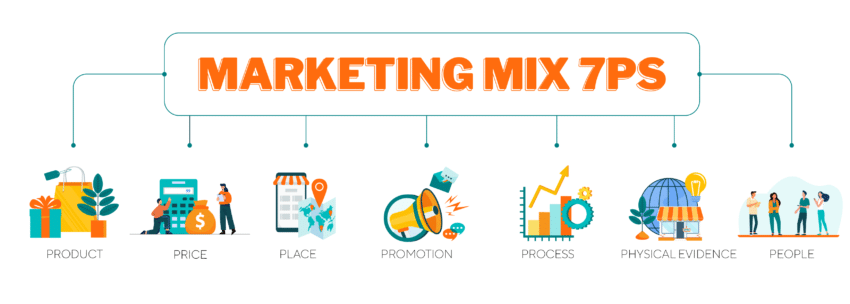
A marketing mix is the set of actions that a business uses to promote its brand in the market and influence customers to purchase their product. An effective marketing mix focuses its efforts in multiple areas to build a robust marketing plan. These areas were initially known as the 4 Ps of marketing (product, price, place, and promotion) and were first proposed by marketing professor Jerome McCarthy in 1960. Since then, marketing tactics have evolved and in an attempt to better address businesses in the service industry, the 4 Ps were expanded to 7 and now include people, process, and physical evidence.
Why Do They Matter?
Today, we’ll be exploring all 7 Ps of the marketing mix and how they can help you build an effective marketing strategy for your tour or activity business. While each element of the marketing mix is important on its own, collectively they provide a framework for creating a plan that is unique to your business and your target audience. Following the 7 Ps will help you better understand your brand so that you can develop a marketing strategy that works for you on all fronts.
The 7 Ps of Travel and Tourism Marketing

The first P of the marketing mix is product. That is, what is it that you’re selling to your customers? In most industries, the product is something that is tangible. The customer can walk into a store, purchase a product off the shelf, and take it home with them. However, in the tourism industry, the product provided is often an intangible service in the form of a tour, an experience, or even the destination itself.
Tangible or intangible, to give your product the best chance of success, it’s important to ensure that there is a demand for what you’re selling. Make sure you have a thorough understanding of the service you’re offering, the needs you’re fulfilling for your customers, and why they aren’t able to get it anywhere else. What makes your tour or activity unique and better than that of your competitors?
Answering these questions will help you discover your unique selling proposition (USP) and determine your positioning in the market. Above all, ensure that the tour or activity you’re providing is the best that it can be.
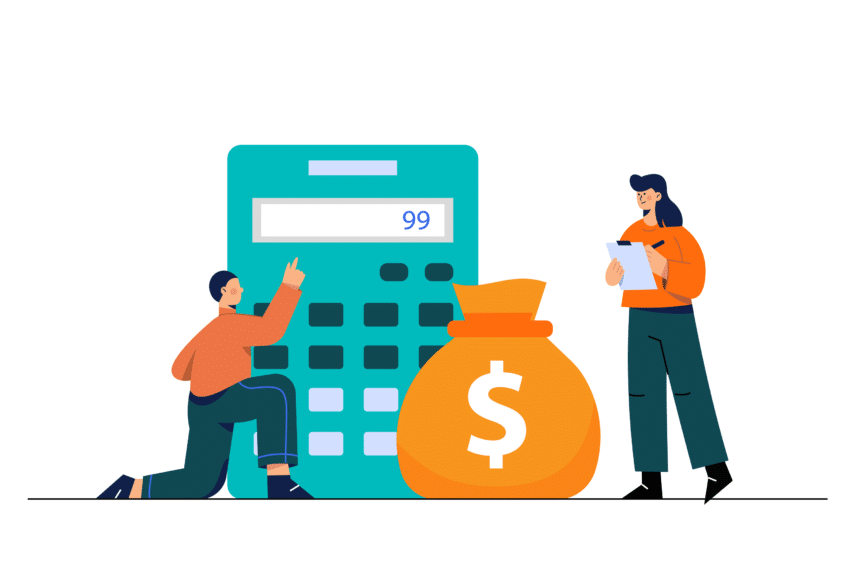
Next up is the price of your tour. What are your customers willing to pay for what you’re offering? Determining how to price your tour or activity package requires the careful consideration of factors such as competitor pricing, the budget of your target audience, and your own overhead and operational costs. Ultimately, you want to price your tour or activity competitively so that it is both attractive to your customers and profitable for your business.
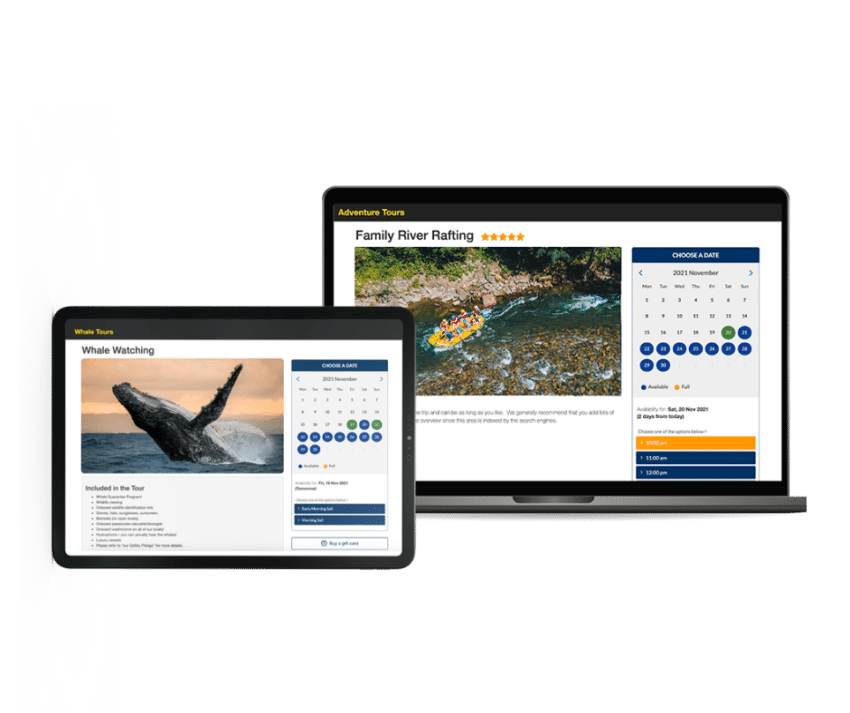
The third P of the travel and tourism marketing mix is place, or the distribution method of your product. This is where and how you make your tour or activity available to your customers for purchase. As mentioned earlier, because the service you’re providing is intangible, the places where your customers can book your tour will primarily be online, whether it be through your booking website, social media platforms, or online travel agencies (OTAs) like Expedia and Booking.com.
Your online booking website is one of the most important places your tours and activities can be found, so make sure it’s doing everything you need by booking a demo with Rezgo .
Physical locations like your tour or activity office as well as neighboring businesses that you’ve partnered with are also places where your customers might access your product.
The last of the original 4 Ps of marketing is promotion, or how your customers learn about your tour or activity. Tour promotion encompasses all the tactics that businesses typically use when they think about marketing. This includes both physical and digital advertisements, social media posts , press releases, events, special deals or limited-time offers, customer reviews, and partnerships with hotels or other local businesses at your destination. The possibilities are endless when it comes to tour promotion and are really only limited by your own creativity.

The people who represent your business and the customer service they provide are especially important when it comes to the success of a tour or activity company. Unlike businesses where physical products can sometimes speak for themselves, the overall experience a customer receives on a tour is greatly influenced by the people they interact and engage with. This includes tour guides, customer service representatives, and even booking agents. To ensure a positive experience for your customers, it’s important that anyone who interacts with your customers on your business’ behalf (even indirectly) is highly professional and knowledgeable about your products and services.
the sixth of the 7 Ps of tourism marketing is the process. The process that a customer goes through from the moment they book your activity to when they finally complete the tour should be as pleasant, convenient, and seamless as possible. Customers should be able to access any information they need with ease including their itinerary, booking info, waivers, etc.
Just as important is how your business decides to deliver this information to your customers. Plan and design your process so that it is easily replicated for efficiency, reliability, and consistency. A good booking system can automate a lot of your process to make sure the customer experience is smooth and efficient from start to finish.
Physical Evidence
Lastly, we have physical evidence. Once again, because the experiences and services provided by a tour or activity company are usually intangible, it can be difficult for interested customers to try them out before committing to a purchase or booking.
There are, however, still ways for tour operators to use physical cues to help convert potential customers. Some of these include website design, physical tour office layout, employee uniforms, brochures, marketing material, and souvenirs or free swag. It’s also worth highlighting any tangible elements of your tour that customers can look forward to in your promotional material or tour descriptions .
Measuring the Success of Your Travel and Tourism Marketing Mix
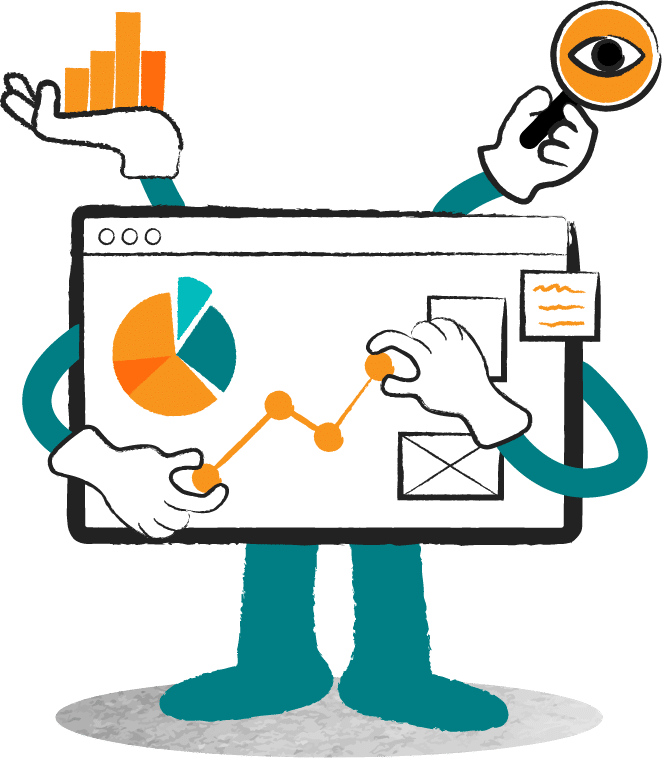
Using the 7 Ps of marketing to build out a strategy for your tour company is great, but how do you know if it’s working? Measuring the success of your tourism marketing mix can be accomplished in a few ways. The first is to calculate your return on investment (ROI) to determine whether the money you’ve spent on your marketing initiatives are actually bringing in enough sales for a profit.
Another way to check on the performance of your marketing strategy is by using analytics on engagement data. How many people actually saw or clicked on that ad, post, or email? How many of those clicks converted into a sale?

Rezgo offers a powerful reporting system that allows tour operators to track the performance of their marketing campaigns and analyze the impact of each referrer or promo code. By studying this data you can adjust your marketing strategy so that you’re focusing your effort and allocating your money in the most effective places.
There’s a lot to consider when developing a marketing strategy for your tour or activity business, but now that we’ve broken down the 7 Ps of a tourism marketing mix, you know exactly which areas you should be focusing on.
Work on planning and building out each marketing element separately, but remember that they need to complement each other and work together harmoniously for the biggest impact. Adjusting your strategy in one area should affect the way you approach another.
Rezgo helps tour and activity providers thrive by giving them the tools and guidance they need to work efficiently and expand their business.You’re passionate about providing amazing experiences. We’re passionate about building flexible tools to make your job easier and get you more bookings. Let’s work together to make your business thrive. Start using Rezgo today by signing up for free !
We can’t wait to see you launch your next marketing campaign. Good luck!

Written By | Edward Nieh
Edward Nieh is a freelance writer and copy editor working across multiple mediums for clients from various industries. He has a degree in creative writing with a focus on screenwriting for feature films.
Previous Article Advantages and Disadvantages of Online Travel Agencies (OTAs)
Next Article Special Interest Tourism: Find Your Niche
Related Posts

Articles , Increase Online Bookings , Tourism Trends
17 innovative tourism business ideas and trends for 2024.

Articles , Increase Online Bookings , Marketing Strategies

Articles , Tourism Best Practices
How to create a business plan for your tour or travel company, search the blog.
- All Categories
- Increase Online Bookings
- Marketing Strategies
Most Popular Articles
- 17 Innovative Tourism Business Ideas and Trends for 2024 173 views
- Advantages and Disadvantages of Online Travel Agencies (OTAs) 19 views
- How to Create and Promote Amazing Tour Packages 19 views
- How to Create a Business Plan for Your Tour or Travel Company 14 views
- Your Marketing Mix: the 7 Ps of Travel and Tourism Marketing 14 views
I have read and agree to the Rezgo Privacy Policy
GET STARTED
Sign-up for a free demo.
Lorem ipsum dolor sit amet, consectetur adipiscing elit, sed do eiusmo tempor incididunt ut labore et dolore magna aliqua.
Schedule A Demo
7P’s in the tourism marketing mix for tour & activity providers

By Rezdy — 5 Aug 2018
Direct Marketing marketing tourism business strategy
Updated November 2021 – Anyone who runs a business or markets a specific product within the tourism industry knows about the tourism marketing mix . The traditional marketing mix was created in 1960 and has been applied to nearly every product created since then. The marketing mix contains the 4 P’s: product, place, price, and promotion. However, 3 extra P’s apply for the experiences industry: People, Processes, and Physical Evidence. As a tour operator, here’s what you need to know about the basic tourism marketing mix and how you can utilize them to analyze your competitive strategies.
The Traditional Marketing Mix
Product is the first step of the marketing process because you need to create a product that consumers want. Without the right products, it won’t be easy to market your business and attract customers to your services.
As a tour and activity provider, you must offer a specific tour or activity that is in demand. It should be a high-quality tour and an authentic experience . By striving to exceed your customers’ expectations, you will surely gain a target market that seeks your product.
Decades ago, tour and activity providers simply sold their products through their storefront and through travel agents. Today and with the advancement of technology , you have to make sure your tours and activities are available both online and offline. This allows for a wider avenue of bookings to come through from a wide variety of platforms.
These days, most travelers want to book online in order to make their reservations, and it’s essential to have a mobile-friendly website that accepts bookings. By being able to be bookable anywhere your customers are, it eases the overall booking process. Ultimately, this increases your chances of capturing their bookings.
Price your tours and activities according to demand and value is essential. You don’t need to give away your products for free in order to attract customers. You simply need to offer them a valuable experience that they find worthwhile.
By marketing your products correctly and providing evidence that your tours and activities are credible, you can align your services with a price point that customers will agree to pay.
You should utilize a variety of advertising techniques and marketing campaigns to promote your business. Whether that be an online promotion or an exclusive offer between your business and an agent, promoting campaigns correctly is key to boosting your sales.
How and where you communicate your campaigns is also an important element to your promotion’s success. Utilizing channels such as your website, social media, storefronts, and agents (including OTAs) will help widen your business’ exposure.
By strategizing and communicating your campaigns correctly, it increases your chances of being discovered and will boost your sales.
The tourism marketing mix: 3 extra P’s
Tour and activity providers should note that there is an extension to the marketing mix that should be applied to their own unique services. The service marketing mix, or in our case, the tourism marketing mix consists of 3 more P’s, and was developed in 1981., It applies to every business that sells services and, experiences as a product.
When it comes to marketing your tour and activity business, here are a few “take-aways” about the extended tourism marketing mix and how it will help your business.
Invest in the right employees who demonstrate the qualities of a good tour guide . Your staff and guides are the faces of your company. They will represent your business and are one of the main determining factors of your customer’s satisfaction. By hiring enthusiastic and entertaining guides, it can help draw more customers to your business and will enhance the overall customer experience.
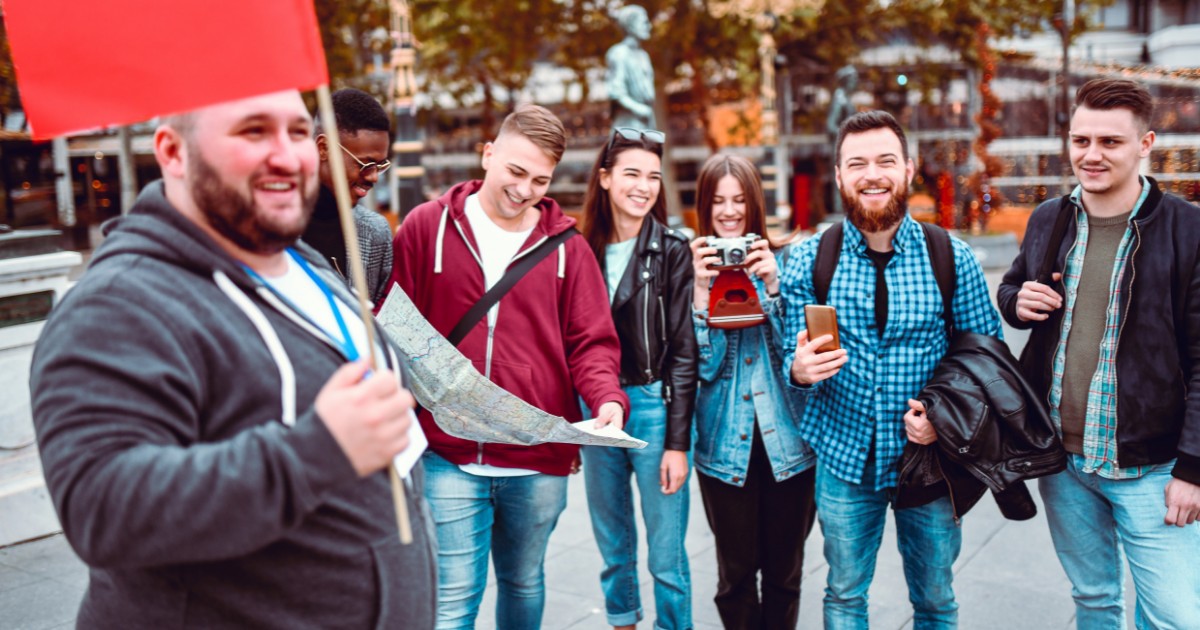
Your processes are key to a great customer experience . Clear processes provide convenience for both your staff and your customers. It ensures your business’s operation and procedures run smoothly.
By having an online booking software like Rezdy, managing your processes will become an automatic process. A software like Rezdy allows customers to book based on real-time availability and will automatically adjust your manifests. This will ensure that everyone involved will be aware of upcoming bookings and can prepare resources accordingly.
The proper processes will make sure your tours run on schedule and avoid any hiccups such as overbooking and long waiting times. This will help give your customers the experience they’ve been promised and will encourage them to re-book and promote your business.
Physical Evidence
Give your customers physical evidence of what they paid for when they booked their tours. Make sure vehicles, gears and other materials are clean and presentable. Your staff should also be trained and properly presented, and if you have a storefront, make sure it’s well-maintained.
Physical evidence is effectively part of your tour branding strategy , so by providing physical evidence that your business is up to standards, will encourage customers to leave a positive review for others to see.
One way to execute the 7 P’s of the tourism marketing mix is by investing in an online booking software built specifically for your business. A software like Rezdy will help improve your processes by giving you a detailed insight into your business. This will allow you to set your best prices, promote in the correct place and engage with the right people. Curious to see if Rezdy is right for you? Sign- up for a FREE 21-day trial or request a demo today.
If you enjoyed this article then make sure to follow the Rezdy blog . There are a lot of marketing tools and tour operator tips designed with businesses like yours in mind.
Start free trial
Enjoy 21 days to take a look around and see if we are a good fit for your business.
No obligations, no catches, no limits, nada
- Meet The Team
- Public relations and media relations
- Crisis Communications
- Digital And Social Media Strategies
- Creative Services
- Consumer Lifestyle
- Design and construction
- Healthcare Public Relations
- Hospitality And Travel
- Real Estate
- Case studies
- Social Contributions
THOught Blog
Home > THOught Blog > The 4 P’s Of Marketing For The Travel And Tourism Industry
The 4 P’s Of Marketing For The Travel And Tourism Industry
The travel and tourism industry is highly competitive. Differentiating yourself is key to rising above the marketing clutter and noise. Often times keeping things simple is the best way to gain focus and clarity about your marketing strategy. The 4 P’s of marketing in the travel and tourism industry is good start.
These four factors are part of a tried-and-trusted method for addressing your branding, promotions, social media, and digital marketing. To find out what they are and why you need them, read our short guide below.
The 4 P’s Of Marketing In The Travel & Tourism Industry
Product, Price, Place, and Promotion are the four key points in any tourism business’ marketing strategy.
Unlike other businesses, where the product is a material item or tangible thing, the products in a travel company are not. But the basic aim is the same: Providing a product that people want. In other words, is there a market for the product that you are offering?
The tourism industry is extremely competitive. You need to set yourself apart from the rest while providing a relevant product. Examples are women’s solo travel or LGBT tours. It helps to target specific categories and niche markets, although this also narrows your target market considerably.
In smaller and localized businesses, this requires careful and in-depth research of the needs of the community where you are based. Is the community that you are aiming this product at able to afford it? Have they expressed a desire for such a travel service or tour?
If you are a larger business with a national or even international customer base, the same principles apply. Are there travel trends that other travel companies or tour organizers are not effectively tapping into?
The more unique your product, the more careful you must be to establish its relevance.
Where do customers go to interact with your brand and order your services or purchase tour packages? For many of you, this may be a combination of physical offices and an online presence.
Whether you have a physical office or not, you more than likely have a website, and possibly one or more social media platforms. Social media marketing is one of the most effective forms of digital marketing .
More and more businesses in the tourism industry are realizing the benefits of social media marketing. But the most important thing to remember is to be consistent. Update your social media pages and web content regularly, with engaging and relevant posts.
Keep your target market in mind when choosing a platform. They appeal to different audiences and choosing the wrong one could be a costly mistake.
Price is a major factor in your marketing success and the success of your business as a whole. Competitive pricing is essential if you want to attract new customers.
So do the groundwork and discover what other tour companies are charging. Read their customer reviews and find out what people think of their pricing. This can give you an indication of what customers would be happy to pay.
But don’t fall into the trap of undercutting your competitors by too much. This may seem like a good idea, but many consumers are wary of what seems like “too good a deal”. Too low a price can actually make new customers reluctant to try your product/service.
Aim for the same price range or just slightly lower than your rivals charge for similar tours and travel packages. A special price for first-time customers or a discount for groups of a certain size may be better ways to have the edge.
The final P of our 4 P’s is promotion, and it ties in with the other three. You can have the right product, the best price, and the relevant place to market your offerings yet l not make a big impression. Want to know why? It’s because, in such a highly competitive market, you need to go one step beyond.
The best way to do that is through promotion.
Promotions entail more than just advertising a great deal. It’s about getting your brand out there and attracting new customers.
Introductory offers and limited-time-only value-added tours will all attract new users to your platform and create interest in your brand. Partnering with social influencers can also make a big impact on a younger audience.
With an effective multi-pronged marketing campaign that includes digital marketing, social media, and mainstream traditional media, you can’t go wrong.
Emphasize what is unique about your company. A catchphrase that resonates with the travelers’ goals will add extra punch.
Final Thoughts
With these 4 P’s of marketing, you can make a success of any marketing campaign for your travel company or tour business. They will help you to put your customer first while increasing brand recognition and industry relevance.
- Recent Posts
- Why Public Relations Is Essential For The Travel and Hospitality Industry - August 9, 2024
- Media Management Tips For C-Suite Executives - July 22, 2024
- Mastering Media Relations: Tips To Increase Media Coverage - July 15, 2024
~Leeza Hoyt
Related posts
Why public relations is essential for the travel and hospitality industry, media management tips for c-suite executives, mastering media relations: tips to increase media coverage, how can we help.
- Strategic Communications
- Social & Digital Media Strategies
- Targeted PR
awards and accolades
A strategic public relations & integrated communications agency, THO as been offering strategic insight to clients across the nation for more than 25 years.
Privacy Policy
Subscribe to our newsletter
Copyright © 2024 Hoyt Organization

Travel Marketing Best Practices: How To Apply The 7P’s To Make Your Travel Business More Successful
Understanding the crux of the 7Ps of marketing is pertinent for you as a tour operator. It can help you analyze your competitive strategies, capitalize on key elements of marketing to attract new customers and ultimately reach your sales targets.
The marketing mix involves various processes, each one focusing on different areas of your marketing strategy. These different processes all need to work together in order for you to successfully attract and generate new customers.
In this guide, we’ll break down the 7s of marketing and cover some of the most important travel marketing best practices to keep in mind with each of these different areas.

The 7Ps of Marketing for Travel Businesses
The beauty of the marketing mix is that it helps you to set objectives and create a clear roadmap for your business to promote itself in the market. This includes the different marketing channels and tactics that are applied.
In 1960, professor Jerome McCarthy first proposed the idea of the 4Ps of marketing - which refers to the four elements that make up a traditional marketing mix. This applies to any kind of business. The 4Ps are
However, strategies in marketing have changed tremendously since then, and the way different types of businesses reach customers varies. This resulted in the 4Ps evolving. It only made sense to add additional Ps to accommodate all industries. These Ps include
- Physical Evidence
The 7Ps can help you attract your target audience more easily and provide the right kind of marketing messages and value to turn those prospects into paying customers.
Let’s break down the 7Ps of travel marketing.
1. Product
First, there’s your product. This refers to what you’re selling your customers, and it’s what your entire travel marketing strategy will be centered around.
For many traditional businesses, a product is a physical item that you can place in your basket, or buy online and unwrap at home. However, in the travel industry, your product is not tangible. For travel businesses, such as travel agencies and tour operators, product refers to some kind of tour, service, or travel experience.

When it comes to travel marketing best practices, you must understand how your product fits into the market, and what type of demand there is for your product. You’ll also need to know the unique selling proposition (USP) behind your product, and what will motivate a customer to make a purchase (or, book a tour).
There are typically a lot more factors involved in the purchase decision process for travel products. For example, a travel business customer will need to
- Plan their trip around what free time they have available
- Plan their trip around the weather
- Purchase without understanding the direct effect, or benefits, the travel purchase will offer them
- Travel purchase decisions often involve a fairly large investment, without getting a tangible product in return
This means there’s a lot to keep in mind when marketing your travel product to your audience. Understanding the market conditions, the competition, and what makes your product special is essential for attracting and retaining customers.
Of course, you also need to offer a high-quality travel product if you want to make a lot of sales.
Some travel marketing best practices include sharing as many details about your products as possible on your website, sharing videos and images of your travel experiences on social media, and showcasing reviews and testimonials from past customers.
2. Place
Place is an element of the marketing mix that refers to where and how you make your product available. Because your travel product is intangible, you will likely be selling it online (as opposed to a shelf in a shop). You could also be selling through a booking platform, an OTA , or a travel desk.

Whatever the case, travel marketing best practices here involve making sure that the place you sell your product offers a smooth customer journey. This means providing a booking process that is easy and secure, and that includes all of the information your customers could possibly want to know.
For example, your website should include detailed booking pages for each of its travel experiences, with an easy and secure payment gateway. This is easy to apply with travel booking tools like WeTravel . The right booking platform will reduce friction in the customer journey, helping you sell more tours.
3. Price
The price of your product, or tour, is arguably the most important factor in your travel marketing mix. You need to price your tours strategically in order to make enough profit, be competitive in the market, and attract enough bookings.
First, you’ll need to understand the market and the competition to understand the costs of other tours in your area.
Second, you’ll need to align your pricing strategy to the USP and value your tour offers. It’s important to relate price to value. This is because customers will be willing to pay more for a travel experience if it is justifiable, and the extra money relates to extra value.
If you offer the same experience as the competition but charge more, then your tours will seem unappealing. If you offer added value to your travel experience, then you can get away with charging more. You’ll also be able to use this added value as your USP.

Of course, you also need to cover your overhead costs and make sure that your pricing strategy makes sense for your travel business.
How much you charge for your travel products determines how your business will fit into the market, so it's important to have a full understanding of your financial situation in order to price appropriately.
4. Promotion
This element of the marketing mix is all about how you promote your travel business to your target audience. Travel advertising includes a lot of key tactics, so, you should choose ones that best align with your target audience and overall marketing goals.
When it comes to travel marketing best practices, it’s recommended that you utilize a wide range of marketing channels and processes. This could include:
- Email marketing
- Social media marketing
- SEO and content marketing
- Paid advertising
- Physical marketing (flyers, posters, etc)
It is also essential that you have an optimized website , as this is where you will direct all of your marketing efforts to generate bookings.
Whatever tactics you use to promote your travel business, you need to make sure that they align with your customer journey and with the behavior patterns of your target audience/buyer persona.
This means using marketing channels that your target audience routinely uses, and promoting the right messages and content on these channels to appeal to your viewership.
Of course, you’ll need to keep your USP and market positioning in mind when running your travel advertising campaigns. Use your promotional efforts to stand apart from the competition and strategically communicate why customers should book your tours and what kind of value they would get in return.
You can check out our guide to creating a travel business inbound marketing strategy for more tips and tactics.

5. People
Who represents your business? This is incredibly important for travel marketing, as your products are closely linked and associated with the people who deliver them.
If you sell a product like a toothbrush, customers wouldn’t care much about who is behind the toothbrush. However, if you’re offering a guided tour through the Andes, then the person providing the tour is an essential factor in understanding whether the tour is worth purchasing.
This means that people are a factor in your travel marketing mix that you need to carefully consider and promote.
In terms of travel marketing best practices, anyone who comes into contact with a customer and represents your business must maintain a certain standard of friendliness and professionalism. The people behind your business play a major role in shaping the customer journey and influencing their purchase decision.
It’s also a good idea to display your credentials and experience on your website or booking pages. Use the people in your travel business to offer more value to your customers.
For example, you could highlight the fact that all of your tour guides are trained in first aid safety, or that they are experts on the local flora and fauna. This gives your tours a competitive edge and gives customers more reason to book your tours and helps them develop more trust in your travel business.
6. Processes
Process is one of the unique “P’s” of marketing for travel businesses. This refers to the journey, or processes, that a customer goes through from when they book your tour to when they complete it. Your goal is to make these processes as enjoyable as possible for the customer.

Make sure that you offer customers all of the information they need at any given stage of their journey. You also want to ensure that your customers can easily communicate with your business when needed.
Some useful tactics involve sending automated consummation messages after a customer makes a booking, and sending the customer a pack of relevant information before the tour. All of their booking information, itinerary, waivers, and anything else, should be easily accessible.
When optimizing the processes in your marketing mix, it's also important to consider efficiency for your business. Your aim should be to plan out a strategy that is reliable, scalable, and efficient.
Using the right travel booking system is essential as it will help to provide a smooth journey for both your customers as well as for your business.
7. Physical Evidence
This is the final element of the travel marketing mix. Physical evidence can seem tricky because travel experiences are largely intangible. This means it can be difficult for your customers to look into the physical evidence of your travel experiences before making a booking.
However, carefully presenting any physical details about your business or topics will play an important role. Keep your vehicles clean and well maintained, make sure your staff are well-presented, and carefully maintain your storefront if you have one. These elements all help to build trust.
You can also use your website to help you provide physical evidence around your tours. Make sure your website is modern, trustworthy, and functional.

You should also try to incorporate a lot of images and videos of your travel experiences into your booking pages, to help customers gain an idea of what these experiences look like.
Stay Ahead of Travel Marketing Best Practices
Staying ahead of travel marketing best practices can be tricky because the industry is constantly changing. As technology develops and customer journeys change, so do the marketing tactics and strategies you use to attract new customers.
That is why it's important to stay ahead of industry trends with a reliable and trusted platform.
A key resource in this regard is WeTravel Academy . The sole focus of this resource is to create a valuable “database” (so to speak) to help all the professionals in the travel industry with a wide range of focus areas. This may include group and multi-day travel, international tour operators, other trip leaders, wellness, and retreats.
You can freely access a wide range of e-books, webinars, courses, and articles to help you stay ahead of industry best practices and grow as a professional and tour business.
Conclusion
Understanding the key elements of a travel industry marketing mix is important for being able to develop a well-rounded marketing strategy.
You need to understand and address all of the different factors involved in the customer journey and decision-making process in order for you to be successful at marketing your travel company.
The travel marketing best practices above should help you lay the foundation. Of course, you’ll also need to be set up with the right travel software and tools to help you seamlessly implement these different areas of the travel marketing mix.
New resources, straight to your inbox
We’re committed to your privacy. WeTravel uses the information you provide to us to contact you about our relevant content, products, and services. You may unsubscribe at any time.
About the author

Related Posts
Best ai marketing tools you can use for your travel business, 7 content marketing mistakes that small travel businesses make, how to create impactful travel business marketing ads for different platforms.
The 8-Step Tourism Marketing Strategy (Free Template)
By Erick Tomaliwan
Share this article:
- Facebook icon
- LinkedIn icon
- Twitter icon

You should never leave your marketing up to chance.
Sure, it’s important to be nimble to changing conditions, such as tourism marketing trends , algorithm updates, employee churn, and evolving technology. But if you’re always throwing tactics at the wall to see what sticks, you’ll likely waste resources, fall behind your competitors, and miss out on future opportunities.
Instead, it’s far better to have a well-thought-out marketing strategy in place.
Trial and error can come afterwards.
What is a tourism marketing strategy?
A tourism marketing strategy is a structured document that outlines your current position in the marketplace, what you hope to achieve going forward, and how you’re going to make that happen.
In other words, it provides a framework, so you’re not floundering around, wondering what to do next. All while giving you a way to track your progress so that you can be confident you’re heading in the right direction. And if things change drastically, as we witnessed in 2020, you’ll always have a foundation to build off and make adjustments.
So, are you ready to come up with a master plan? We’ll cover what goes into marketing strategies for travel and tourism, which includes a:
- SWOT Analysis
- Value Proposition
- Guest Personas
- Competitor Profiles
- Marketing Mix
- Budget & Resources
- Goals, Metrics & Activities
- Marketing Roadmap
Follow along by downloading our free 8-Step Marketing Strategy Workbook.
How to write a tourism marketing plan, 1. run a swot analysis.
A SWOT analysis is a fun exercise that identifies your company’s S trengths, W eaknesses, O pportunities, and T hreats.
Strengths and Weaknesses are internal factors that you can control, like your team, resources, and location. In contrast, Opportunities and Threats are external factors that come and go randomly, leaving you with no other choice but to react and adapt — such as travel trends, economic downturns, and your competitor landscape.
To help you with this step, it’s a good idea to round up key members of your team across departments. Why? Because each representative will bring a unique perspective, allowing you to get outside of your business owner bubble. For instance, your tour guides know your guests the best and can offer insight into what they’re thinking and feeling.
Once you have everyone together — in the same room or Zoom meeting — you can start the process. First, answer a few questions that relate to each element.
Like for Strengths, you can ask, “what does our tour company do well?” and “what do guests like about our experiences?” Weaknesses, “what areas of the business need improvement?” and “what do our competitors do better?” As for Opportunities, “is there an underserved market we can tap into?” and Threats, “ are there new regulations that impact our business?”
Try to answer at least five questions each, and then summarize what you come up with in a 2×2 SWOT grid for a visual overview.

2. Identify your value proposition
After doing your SWOT Analysis, you should have a general idea of your value proposition — which is a simple statement that answers why someone should book with you instead of your competitors. Essentially, it’s what sets your travel business apart based on the desirable attributes you bring to the experience.
Your value prop is the most important piece in your marketing strategy, as it dictates your messaging and ultimately serves as the first thing guests look at when evaluating your brand with the “what’s in it for me?” mindset. That’s why it should be front and center on your homepage.
But it can be difficult narrowing down all of your unique qualities into one or two sentences. So, your best bet is to compile a list of features and benefits, along with the emotional value for each, and see if there are any obvious patterns.

Looking at the example above, you can see there’s a trend towards a local experience, so the value proposition for this company could be something along the lines of: Experience Hanalei Bay the local way with a paddleboard that looks nothing like a rental.
3. Create a guest persona
If you try to appeal to everyone, you’ll wind up appealing to no one. That’s probably one of the biggest tourism branding mistakes.
Instead, go after 20-35% of people most likely to enjoy your experiences. That way, you can be more effective with your targeting because you’ll understand what makes them tick, or better yet, what makes them book.
How do you go about doing that? Create a guest persona!
What’s a guest persona?
A guest persona is a detailed description of a fictional character that represents your ideal guest. It answers who they are, where they’re from, what matters to them, and where they hang out online.
Thinking of them as a real person before check-in will make it so much easier to craft personalized marketing messages they won’t be able to resist. Plus, you’ll know the best way to reach them. No more unanswered ads!
To create a guest persona:
- Start by combing through your booking data for common demographics like age, gender, geolocation, and language
- Refer to Facebook Audience Insights for psychographics, such as interests and hobbies, lifestyle, and online spending behaviour
- Send out a guest survey to get more details
Then, compile all of your information into a guest persona template with a stock image to put a face to the data. As well as a fun and fictional name — like Solo Travel Sarah , Corporate Catrina , or Vacation Dad Victor .

Now, you might only require one guest persona, but if you offer multiple experiences that appeal to different types of people, like tourism products for senior citizens , it’s best to segment your guests into a few personas seeing as your marketing tactics will change accordingly.
4. Create a competitor profile
The travel industry is tight-knit, so much so that you can even turn your competitors into partners. But that doesn’t mean you can’t still keep tabs on them.
Knowing what your rivals are doing is the best way to gain a competitive edge. Not only does it give you valuable insight into their strengths and weaknesses so that you can see how you stack up, but it also helps you stay one step ahead since you can spot potential threats and opportunities before they happen.
Similar to a guest persona, you can create a profile for your top three competitors, which should include the following marketing information:
- Their value proposition
- The experiences they offer and what they charge
- Who their target audience appears to be
- Unique features and benefits they highlight
- Overall rating on review sites, along with what their guests say about them
- The social media channels they dominate and the type of content they post
- What distribution channels they rely on
- Their domain authority score and top ranking keywords (use a tool like Moz Keyword Explorer to get this information)

It doesn’t stop there. After you’ve built your competitor profiles, you can monitor what they get up to in real-time by:
- Setting up Google Alerts to track mentions of them online
- Following their social media accounts
- And subscribing to their newsletter if they have one
You can always use a fake email address or Instagram account (AKA a Finsta) if you don’t want them to know you’re spying.
5. Develop a tourism marketing mix
A tourism marketing mix is a combination of factors you can control to influence a guest’s decision to book with you. Think of it as a broad guideline for how to market travel and tours so that everything works together seamlessly.
Historically, there are 7ps of tourism marketing, but since tourism operators are unique in the products and services they provide, we’ve stretched it to include eight.
What is a tourism marketing mix?
The experiences you offer and what’s included. Take note of everything that would go into the product description, such as duration, itinerary, special features, and other important details.
Where people can book your experiences. Traditionally, that would be your ticket office or travel agents, but there are now countless ways people can book — OTAs, email, chatbots, Facebook, your website. Figure out the number one place you want to direct prospects.
The price guests will pay based on the perceived value. Factor in what your competitors charge, how much it costs you to provide the experience, your revenue target, and where the market is heading.
4. Promotion
How you’re going to get the word out. Look at what has worked well in the past, where you already have some traction, new social media opportunities, and the best content format for your target audience.
The people who facilitate the experience. What are the standout qualities your staff has that align with your brand? What skills do your guides have that make the experience memorable, entertaining, and informative?
6. Planning
The measures you take to keep guests in the loop. How do you ensure they show up prepared? How do you tell them about your flexible cancellation policy? Are there any tactics you use to prevent refunds? What if you have to make unwanted changes?
7. Processes
The processes you have in place to guarantee guests get the experience they expect. Everything should run smoothly from the get-go. Consider ways to shorten check-in, stay on schedule, and make them feel valued.
The physical evidence that proves your guests had the best time. This could be in the form of professional photos or merchandise. But it can also be online reviews you encourage them to write on popular platforms.
6. Factor in budget and resources
Everyone wishes they could have marketing clout like the big-name online travel agencies. But the reality is you might never have the same budget and resources to run global campaigns. And that’s okay.
You don’t need deep pockets to make an impact. Thanks to the internet, you can use plenty of cheap marketing ideas to generate buzz around your brand. You just have to channel your creativity.
That said, be sensible with what you take on. For example, if you want to start a blog but don’t have time to commit to a regular publishing schedule, see whether someone on your team has the skills and bandwidth. If not, it isn’t in the cards for you right now.
So, check in with your budget for how much you can reasonably put towards various marketing activities while keeping in mind the software tools and staff you’ll need to execute successfully.

7. Pinpoint goals, metrics, and activities
Now that you know all that you know, give yourself something to work towards by determining what you want to achieve this year and how you’re going to make it happen. We suggest starting with the arbitrary number of four goals and key activities. Why?
Because if you chase too many rabbits at once, you won’t get the results you want. Instead, it’s better to prioritize goals that make sense for your business right now. That way, you can focus on doing a few things well, rather than lots of things badly that’ll only hurt your brand in the long run, which you’ll end up having to fix later anyway.
When it comes to setting marketing goals , it’s important to be SMART . Don’t just put your finger to the wind and say, “I think we should go this way.” Your goals should be:
- S pecific: clearly explains what you want to achieve
- M easurable: has a metric you can objectively measure
- A ttainable: something you have to stretch for, but still within your reach
- R ealistic: relevant to your business and where you want to go
- T ime-bound: when you want to accomplish the goal by
Here’s an example using the SMART method:
Increase organic website traffic 40% by the end of 2021 from getting 1000 visitors per month from Google.
How are you going to track your progress? As you can see in the above example, the number of website visitors is the primary metric. Now, many people will tell you to steer clear of vanity metrics — like traffic, followers, and shares — because they don’t directly impact your bottom line.
We couldn’t agree less. Marketing is about the long-game. While those metrics don’t always translate into transactions, they do strengthen brand equity, which in turn drives bookings over time because guests gravitate towards operators with extra oomph online.
The Content Marketing Institute puts it best : think of vanity metrics as optimization metrics. Instead of tying them to ROI, consider their overall value for better understanding your audience on specific channels.
For instance, if a particular social media post generates way more likes than average, it indicates something about that content resonates with your audience. You can pinpoint what that may be and replicate it in future posts or use it as a blueprint for creating effective Facebook ads .
For each goal you set, figure out one key activity that’ll help you hit it. Don’t be afraid to think big here. By that, I mean, come up with a significant marketing project that you and your team can chip away at — more on that in the next step.

8. Plan your marketing roadmap
After you’ve assigned an activity per goal, break each one down into smaller, manageable tasks to complete from quarter to quarter. Using the example above, let’s say you decide to start a blog as your key activity.
In Q1, you’d get the ball rolling with a few foundation tasks. So, for building a blog, you might start with the following:
- Set up the blog on your website
- Develop a content strategy
- Research topic and keyword opportunities
- Create an editorial calendar
Then, you’d build from there for Q2 and so on.

Try starting with four tasks per activity. Unless you have a marketing team, it’s best not to bog yourself down with a marketing plan that will either a) pull your team away from other responsibilities or b) feel so overwhelming that you abandon it altogether.
With a list of tasks, you can then organize everything onto a visual roadmap however you see fit — just so long as it includes a way to assign staff and track work progress. For instance, you can create a makeshift roadmap if you’re savvy with Google Sheets or use a project management tool like Trello and set-up a kanban board workflow.
Where to go from here?
It’s time to go after it, of course! Just remember that your marketing strategy isn’t set in stone since anything can happen to derail your plans — as we learned the hard way in 2020. So check in with your marketing strategy workbook from time to time to make any necessary adjustments.
Ready to write down your marketing strategy and make it real?

Take your business to the next level
Online bookings. Flexible pricing. Outstanding support.
Related Articles

Why You Should Sell Gift Certificates Online for More Bookings
Discover the many benefits to offering digital gift certificates to your guests.
- Marketing Strategies

How to write ATV tour descriptions that drive bookings (with examples)
Learn how to write ATV rental descriptions with SEO-ready language that help you sell more bookings
Search Blog
Subscribe to our newsletter.
Get tips and strategies to grow your business and impress your guests.
Blog Categories
- Booking Management
- Business Tips
- Guest Experience
- Operator Highlights
Plan Campaigns
For Performance
Execute Campaigns
Analyze Campaigns
With Accuracy
Enterprise Solutions
Feature Highlight
Contextual Targeting
Connected TV
Digital Out-of-home
Creative Studio
More Industries
Success Stories
Customers Like You
Company and Contact Us
Life at StackAdapt
In the Media
StackAdapt Courses
Digital Insights
6 Strategies for Harnessing Travel and Tourism Marketing
Published On: November 25, 2022

Travel is back, and it’s coming back strong . Since 2020, US digital ad spend has been steadily increasing year over year. In 2023, it’s projected that spend will reach $4.54 billion USD, a 12% increase from 2022.
For travel marketers, this growth signals that it’s time for a fresh tourism marketing strategy. To help you build a programmatic strategy for travel that drives results, we’re unpacking the latest trends in the industry, and sharing top-of-mind travel and tourism marketing strategies.
Travel and Tourism Trends
It’s clear that the travel revival has started. Across the industry, there have been positive signs, from increasing traffic in US airports to growing ad spend . Let’s dive into some of those travel and tourism marketing trends in detail.
Domestic Tourism Is Booming
Although international destinations also account for a large amount of US consumer spending on travel, it’s important not to forget about domestic travellers. Americans go on over 2.29 billion domestic trips every year!
In fact, one study found that 96% of the survey respondents took (or planned to take) at least one domestic leisure trip in 2022. And, 80% of those respondents described their most recent local travel experience as positive or very positive.
Consumers Are Looking to Travel With Purpose
Travellers are becoming increasingly value driven, which is influencing their decisions when purchasing travel products and services. Seventy-two percent of travellers are looking to have a positive impact and support communities and businesses through tourism.
Sixty-nine percent of consumers said they are more mindful of choosing hotels and airlines that align with their values and support diversity and inclusion within their workforce. Travellers are also becoming more eco-friendly and many are looking to support airline brands that are sustainable (68%) and carbon negative (55%).
Personalized Experiences Are for Travellers, Too
Consumers are increasingly expecting personalized marketing experiences at every touch point through the marketing funnel, from their first exposure to a brand, all the way to their post-purchase experience.
This is relevant across all industries, including travel and tourism marketing. Personalized marketing in travel is now a must-have. According to Skift , That personalized touch can drive increased conversion rates and revenue, and improve customer loyalty.
6 Travel and Tourism Marketing Strategies
Here are 6 travel and tourism marketing strategies that will help map out your next travel campaign.
1. Use Geotargeting to Reach Nearby Consumers
Geotargeting is the practice of delivering content to a consumer—via mobile or web—using the geographic location information of the recipient. For travel and tourism marketing, it’s the perfect strategy for tapping into the booming domestic tourism market.
For example, if a destination marketing organization (DMO) based in Nevada wants to attract travellers from their neighbour state, California, they can leverage geofencing to capture the attention of people located there. Geofencing targets users based on the geographic location information of the recipient. This tactic draws a virtual fence around a geographic location, so that users who enter that “fenced” area are served your ads.
You can target audiences using location data like country, state, postal or zip code, or even a specific address. If you’re looking to attract domestic consumers, geotargeting is one strategy that will help you remind travellers of what’s in their own backyard.
2. Use Video to Entice Consumers to Book
Travel is an emotional experience for consumers. Therefore, leveraging a channel that speaks to that emotion is a great way to capture the interest of your target audience. Video is particularly effective for travel because it’s an engaging and immersive medium that uses visual cues to create emotion in viewers.
Travel brands can use video advertising to engage viewers with storytelling and showcase the experiences that they are offering. By engaging a viewer’s emotion, your video may entice them to book a weekend getaway at your hotel, or travel to your resort for the gorgeous beaches. When you run your video campaign on connected TV (CTV), you can capture and hold user attention particularly well because CTV provides a natural, full-screen experience.
Ads shown on CTV are highly viewable, and are served in an environment in which the audience is already engaged. When watching a connected TV device, viewers understand and accept that ads are part of the viewing experience.
Knowing this, they are more receptive to them. These benefits combined with CTV’s enhanced targeting options and inventory selection are just part of why we’re seeing CTV overtake linear ad spend. For travel marketers, CTV is the perfect channel for delivering video ads that will entice consumers to book travel.
3. Appeal to the Audiences Through Eye-Catching Creative
Video is a fantastic channel for emotionally engaging consumers, but all formats of ad creative have a similar effect. Your campaign’s messaging, regardless of the medium, plays an important role in capturing the interest of your target audience. Build creatives that resonate with your target audience, so you can attract the travellers who are most likely to engage with your campaign.
When running a travel campaign, use your ads to grab the interest of your audience by showing content that is relevant to them. For example, target users in cold geographic regions with images that show warm and sunny destinations. Hook your target demographic in the first few seconds by using language that speaks to them, intrigues them, or spurs an emotional response.
4. Leverage Contextual Advertising to Reach the Right Audience
Contextual targeting in travel and tourism marketing can enable you to reach audiences who are ready to travel. This targeting tactic uses algorithms to place ads based on keywords, website content, and other metadata. This way, users are targeted based on the environment in which an ad appears, which places focus on the consumer’s current frame of mind to show an ad that is hyper relevant.
Capturing an audience that is currently receptive to travel is the key to success. For example, by using contextual advertising to target content like, “best destinations in 2023,” you can reach travellers who are planning to travel soon, or planning to travel in the near future. To reach the people who are considering travel, make sure to first engage with those who are most interested—they will be more likely to book a trip.
5. Measure Travel Advertising Results With a Brand Lift Study
Brand lift studies go beyond traditional metrics, like impressions, to help you measure a travel campaign’s impact on consumer perceptions and behaviour . A brand lift study measures the impact of your campaigns across all your programmatic channels, typically providing a picture of the consumer sentiment and brand affinity of people who have been exposed to your media.
For travel marketing, it can be used to measure the impact of upper funnel campaigns on your consumers’ perception of your brand. Or, leverage it to measure consideration or purchase intent in the mid- to lower funnel.
Let’s say a hotel chain has just launched its first marketing campaign around a new hotel perk. The chain runs a brand lift study to understand whether their target audience is interested in the new offering. The study can discover how likely travellers are to pay more for access to the hotel perk, as well as the perception a consumer has about the chain after seeing an ad that mentions it.
6. Use Messaging to Highlight the Value of Your Offering
Messaging in your travel marketing campaigns is your best tool for letting consumers know why they should book with you. In travel and tourism marketing, it can be leveraged to build consumer confidence, as well as to personalize. It’s your opportunity to share what makes your offering stand out. For example, if an airline offers a flexible rebooking policy, this should be highlighted in their digital campaigns. This way, airlines can capture the interest of hesitant travellers. The knowledge that an airline offers flexibility builds consumer trust, and may be the deciding factor for that consumer who might be on the fence.
For personalization, consider what it is about your offering that will appeal to specific target audiences. For example, resorts that are eco-friendly should highlight this within their messaging. Let your audience know what the resort is doing that aligns with their values. With so many consumers looking to travel with purpose, this could be the deciding factor in making a purchase decision.
Use Case: How to Reach Beach Goers
A resort in a sunny destination wants to attract beach goers. Here’s how this resort could use a combination of the above travel advertising strategies to reach their target audience.
- Leverage a video campaign to engage viewers with storytelling and showcase the experiences that the resort offers. Imagery of the resort will engage a viewer’s emotion, and entice them to book a vacation so that they can experience what they’ve seen in the video.
- Incorporate into the campaign messaging that addresses common travel concerns. Build the trust of beach goers by highlighting a flexible rebooking policy, resort features, and more.
- Incorporate creatives that targets users with video of a sunny, hot, beach, while targeting users in warmer climates with creatives of breezy ocean. By tailoring the creative based on geographic location, the campaign will appeal to the desires of consumers according to their customer profile.
- Use contextual targeting to capture an audience that is currently receptive to a beach vacation. To reach beach goers, target content like, “best beach vacations 2023.” That way, the campaign reaches consumers who are actually eager to go on vacation, or are receptive to the idea of a beach vacation in the near future.
Travel and Tourism Marketing is Going Places
Are your travel and tourism marketing campaigns ready to take flight? To keep up with the current trends in travel, be sure to leverage strategies that reach the right audiences, at the right moment. That could mean using geotargeting to attract domestic travellers, or crafting messaging that aligns your offering with consumer values. The key is to test your strategies until you find the perfect mix.
StackAdapt is partnered with Adara, the leader in travel data, to offer solutions for travel campaigns, including unique audiences, insights and targeting.
Want to get started with travel and tourism marketing? Request a demo to learn more about our travel solutions.
Share This Blog
- Click to share on LinkedIn (Opens in new window)
- Click to share on Facebook (Opens in new window)
- Click to share on X (Opens in new window)

VP of Marketing
Christiana leads the global marketing team and brings 9+ years of dedicated adtech experience to the forefront of the industry. She is committed to shaping and executing marketing strategies that propel StackAdapt to new heights in digital advertising.
You May Also Like

August 19, 2024
How to Optimize Your Digital Campaigns With Footfall Attribution

August 15, 2024
Harness the Holiday Spirit With Contextual Targeting

August 1, 2024
Black Friday and Cyber Monday Digital Marketing Strategies
Stay in the Know With StackAdapt
Keep up to date with the latest insights, trends, and tips delivered directly to your inbox..
reCAPTCHA Validation Failed.
SFMC Insertion Failed.
Thanks for subscribing!
We've sent you a confirmation email. Keep an eye out for future tips and insights from the StackAdapt team.
StackAdapt Cookie Notice
The StackAdapt website uses cookies to improve your user experience, for analytics, and to show you relevant advertisements. You may change your cookie settings in your browser at any time.If you agree to us storing cookies on your device, click "I Agree". You can reject non-technical cookies by clicking, "I Refuse". Go to our Cookie Policy to learn more.
Our website uses cookies to ensure you get the best browsing experience. By using our website, you agree to our use of cookies. Go to our Cookie Policy to learn more.
- Join Us: Arival 360 | San Diego 2024, 30 Sep - 3 Oct 2024 ◆ Arival | Activate Edinburgh, 23-25 Nov 2024 ◆ Arival 360 | Valencia 2025, 28-30 Apr 2025
- 30 Sep 2024 Ignite with Viator 30 Sep - 3 Oct 2024 Arival 360 | San Diego 2024 23-25 Nov 2024 Arival | Activate Edinburgh 2024 28-30 Apr 2025 Arival 360 | Valencia 2025
- All Events >
- Insider Pro Meetup | Mid-Summer Meetup: Reflect & Connect with Arival Insiders The Outlook for Experiences in Australia & New Zealand Webinar Insider Pro Meetup | The Opportunity of Openness: Attracting the LGBTQ+ Traveler Insider Pro Meetup | A Job Well Done – Get Started Selling Corporate Tours US & Europe Traveler Trends Webinar: Insights for a Successful Summer Innovation Showcase @ Arival 360 | Berlin 2024
- Arival Spotlight Awards
- Arival TourReview Spotlight Awards
- Introducing Spotlight Awards
- TOURREVIEW SPOTLIGHT WINNERS ORLANDO 2023
- METHODOLOGY
- TOURREVIEW SPOTLIGHT AWARDS FAQS
- Arival Spotlight Winners
- Arival Spotlight Submissions
- Spotlight FAQ
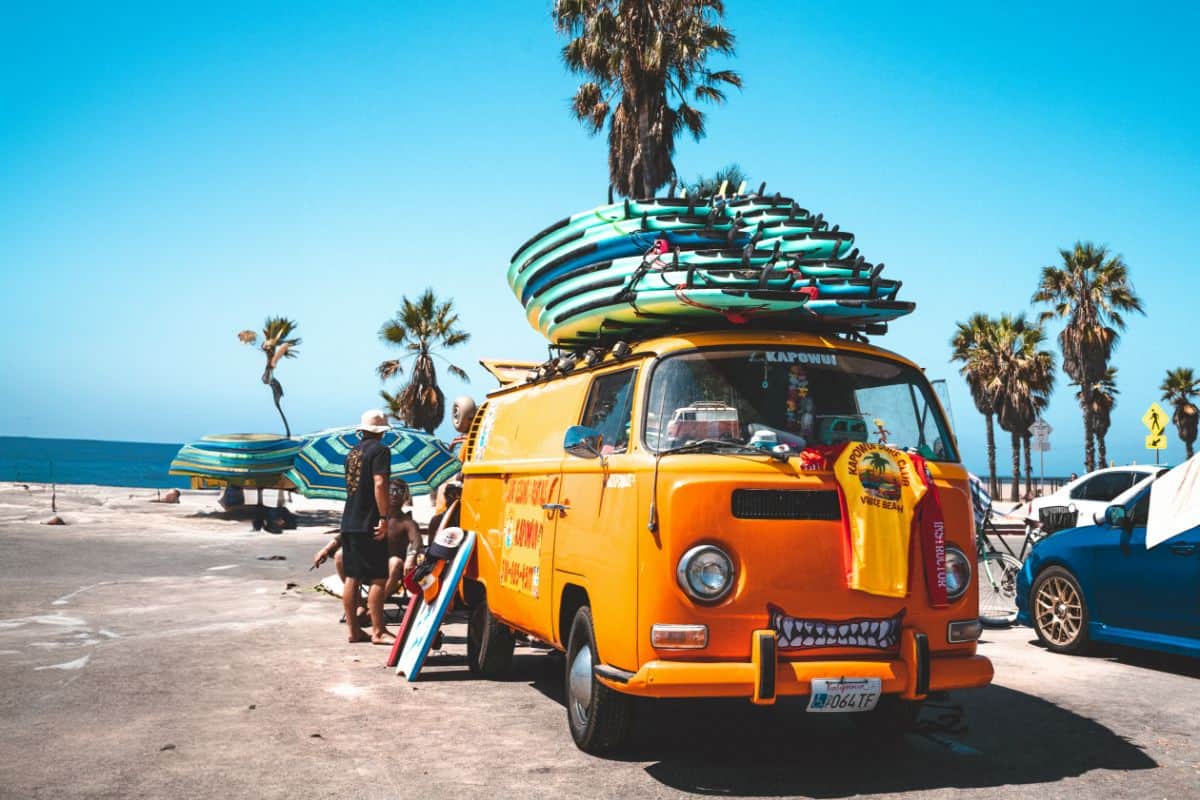
ARIVAL 360 | SAN DIEGO
30 september – 3 october 2024.
Insider Pro Access Members save 20%
THE event of the year for solutions-focused in-destination experience creators and sellers
Save up to $520 with the Last Call to Save ticket available through 27 August
- Tour Business Evolution: Smart Scaling Strategies The Affluent Experiences Traveler Over 130 Resellers, Restechs Have Implemented OCTO Top Six Ways to Diversify Your Revenue
- Distribution
- Operator Stories
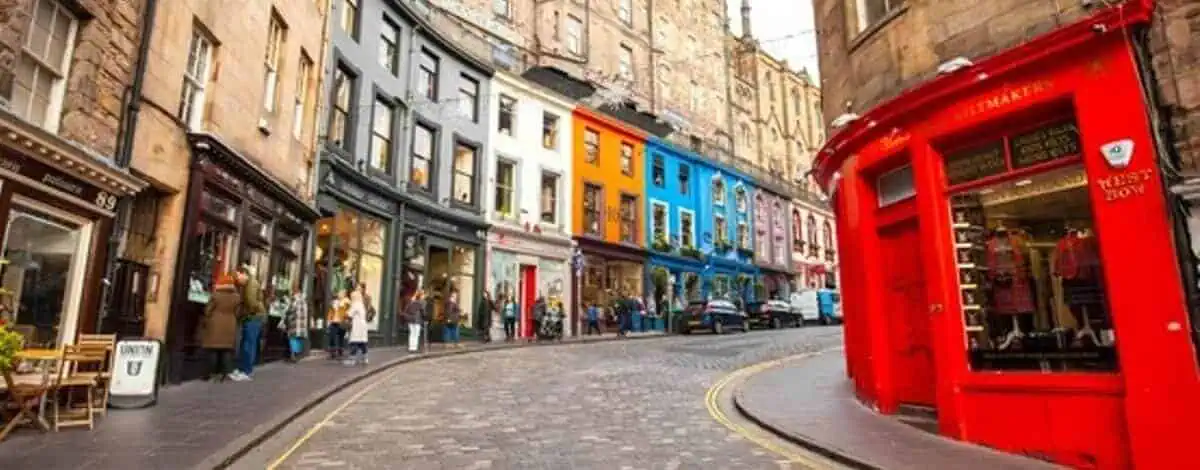
ARIVAL | ACTIVATE EDINBURGH 2024
23-25 november 2024.
THE event of the year for the European in-destination experiences industry
Save up to £380 with the Summertime Savings Ticket
- The Affluent Experiences Traveler The LGBTQ+ Experiences Traveler The State of Experiences in Australia & New Zealand The Outdoor Adventure & Activities Traveler
- REPORT SERIES: The 2024 U.S. Experiences Traveler
- Search All >
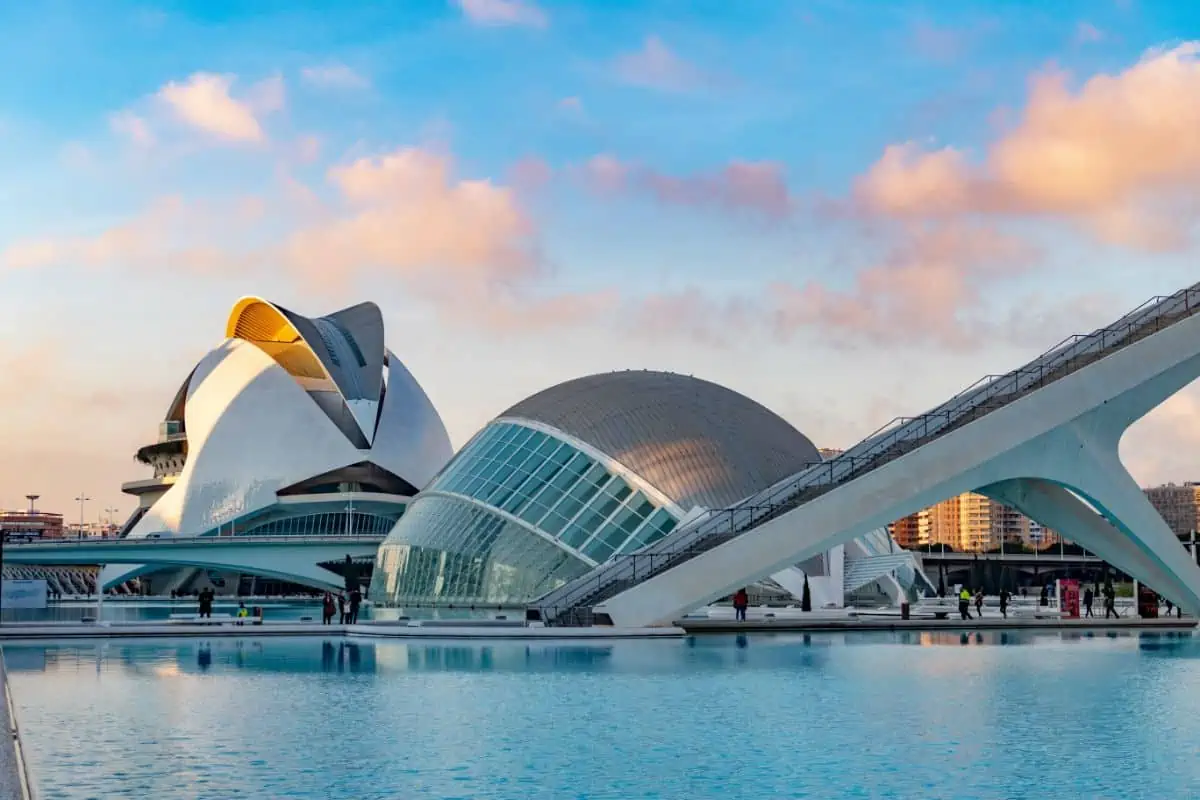
ARIVAL 360 | VALENCIA
28-30 APRIL 2025
Save up to €940 with the Early Bird Ticket Through 3 September
- Marketing with Google
- Culinary Experiences Guide
- Arival Booking System Guide
- How to Choose a Booking System | CHECKLISTS
- Insider Pro Access membership
- Insider Free membership
- Elevate Sessions
- Arival ProShield Insurance
- Employers Dashboard
- Job Board – Post A Job
- Search Our Talent Pool
- Job Seeker Dashboard
- Join Our Talent Pool
- Job Resources
- Tour Guides & Directors
- In-destination Specialty Career
- Marketing & PR
- Operations & Logistics
- Water & Theme Parks
- All Job Categories >
- Join Arival Insiders Free
- Subscriptions
- Group Subscriptions
- Members FAQ
Tourism Marketing: A Guide to Effectively Market Your Tours and Experiences
Discover how to strategically promote your tours with our comprehensive guide on tourism marketing and elevate your brand visibility today
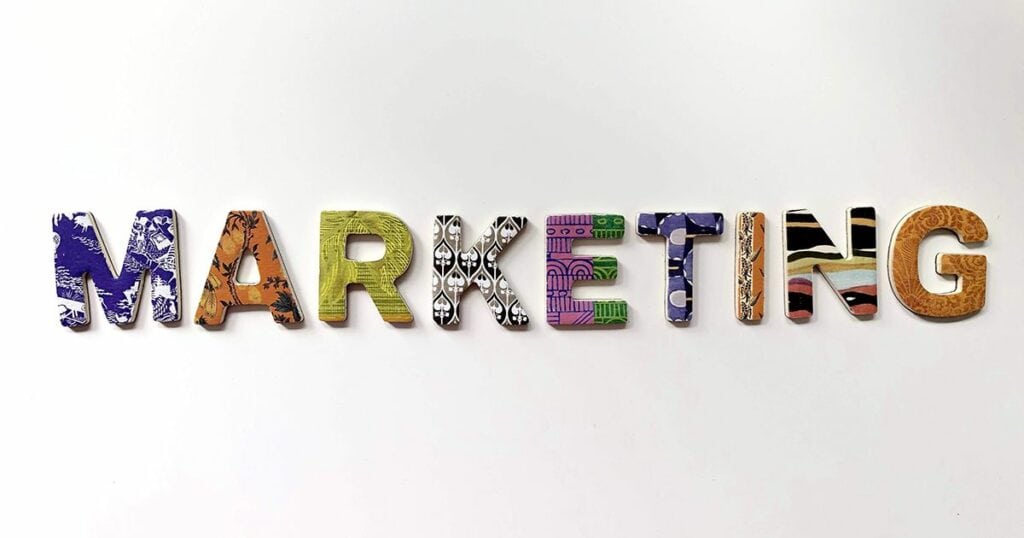
by Janelle Visser | 2 February 2024
If you build it, they will come, as the adage goes. But in today’s digital age, where anyone can build anything and put it online in moments, the question becomes: how will they find — and choose — you?
In the dynamic world of tourism experiences, the key to attracting travelers lies in successfully marketing your tours, activities and attractions. And it’s not just about attracting tourists, it’s about creating unforgettable connections that turn one-time visitors into loyal advocates for your brand.
Marketing is consistently ranked by Arival event attendees as one of the most important topics they are looking for insights on. As traveler preferences and booking habits change, so do the most effective ways to market to them.
In this comprehensive guide, we will delve into the evolution and strategies of marketing for travel and tourism in today’s digital era, providing actionable insights for tour operators and attractions, and answering key questions that every tour operator grapples with. From crafting a marketing strategy to understanding the components of a successful tourism marketing campaign, we’ll explore how to navigate the competitive and ever-evolving landscape of tour, activity and attraction marketing, and create lasting connections with your guests.
Here’s what we’ll cover:
What is Tourism Marketing?
The evolution of tourism marketing, how to create a tour marketing strategy.
- Conduct Thorough Market Research
- Identify Your Target Audience
- Understand Your Customer Needs and Expectations
- Create Unique Selling Propositions (USPs)
- Build a Strong Brand
- Consider Offline Marketing for Tours
- Embrace Digital Marketing Strategies
- Leverage Modern AI Technology
- Take Advantage of the Current Trends
- Monitor and Evaluate Your Strategy
- Navigating the Future of Tourism Marketing with Arival
At its core, tourism marketing is a strategic approach to promoting destinations, tourism products and services to tourists. For operators, this primarily means promoting your tour, activity or attraction offerings. The aim is to understand and meet the needs and wants of travelers, creating memorable experiences that encourage reviews, repeat visits and referrals.
In the context of the global tourism economy, where according to Arival’s latest data the in-destination experiences industry is expected to be worth $270 billion in 2024. Tourism marketing plays a pivotal role in the success of travel businesses, helping them to stand out above their competitors and serving as the bridge that connects them with their target audiences of travelers.
As travel marketing company Blend ’s Managing Director put it recently in an interview with Arival, “The simplest way to define [marketing] is what comes to mind when someone thinks about your brand or experience. And what you do through your marketing channels is help shape that perception.”
The landscape of marketing in tourism has undergone a profound transformation since the early 1900s when the Michelin Guide first encouraged motorists to explore the world beyond their own towns. Progressing from traditional tourism promotion methods like brochures and word-of-mouth recommendations to the digital age of Google searches and social media influencers, technology has played a pivotal role in shaping how destinations and experiences are promoted.
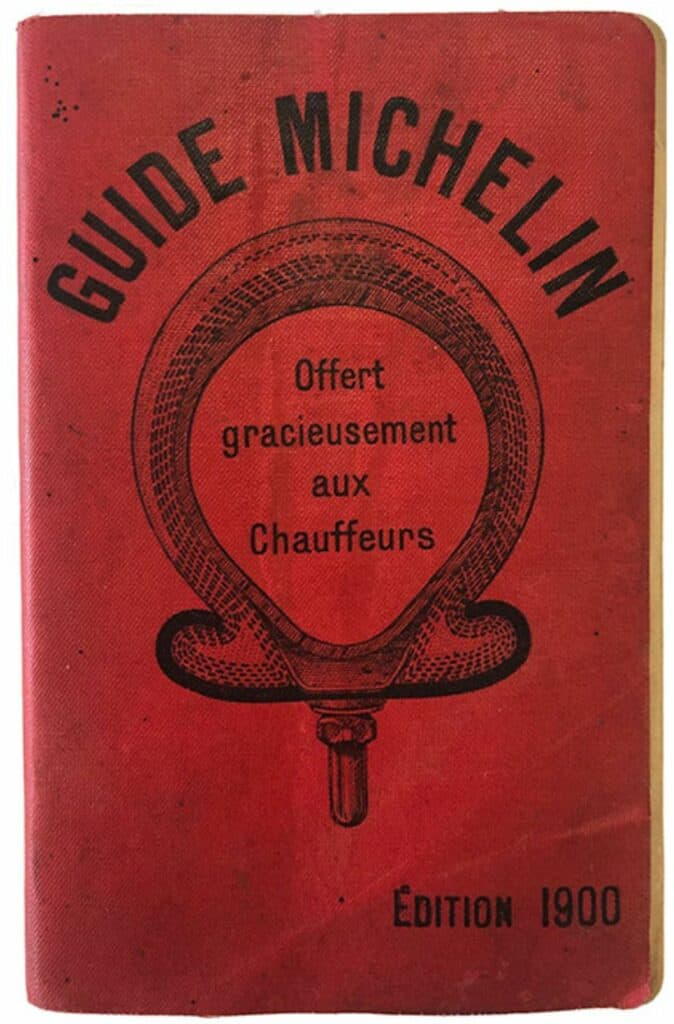
Fast forward to today, where the advent of short-form video marketing and generative AI has added new dimensions, allowing every tour, activity or attraction operator to engage travelers in innovative ways. These tools provide opportunities for engagement, personalization, and storytelling that were once unimaginable, and have become integral to captivating the modern traveler.
Successful marketing for tourism starts with a well-defined marketing strategy, which will help ensure the effort and resources you put into marketing are effective. The following steps will help guide you through the creation of a marketing strategy for your tour, activity or attraction company.
1. Tour Marketing Strategy
Understanding the market is the foundation of any effective strategy. Thorough research into customer demographics, travel patterns, and consumer behaviors will provide invaluable insights as you create your marketing strategy.
Arival conducts regular tourism market research to assist tour, activity and attraction businesses with this process. For example, Arival’s latest consumer research on the 2024 U.S. Experiences Traveler found that day tours are on the rise among U.S. travelers , and that younger millennial and Gen Z travelers in particular are moving away from traditional sightseeing tours and looking for more experiential tours , such as culinary tours and immersive experiences. See Arival’s latest research here .

2. Identify Your Target Audience
Targeting your tourism marketing plan to a specific audience is crucial, as this will enable you to enhance the relevance of your offerings, improve engagement, and maximize the effectiveness of your marketing efforts.
Identifying your target audience involves a strategic process that combines market research as described above, data analysis, competitive analysis and customer profiling. Google and social media platforms, for example, offer analytics tools that provide insights into the age, interests, geographic location and income bracket of your followers, that can help you to develop detailed buyer personas that represent your ideal customers, and create a plan to reach and engage these audiences.
In addition, analyzing the target audience of your competitors will help you build on this and identify gaps or underserved segments in the market that your tourism marketing plan can effectively target.
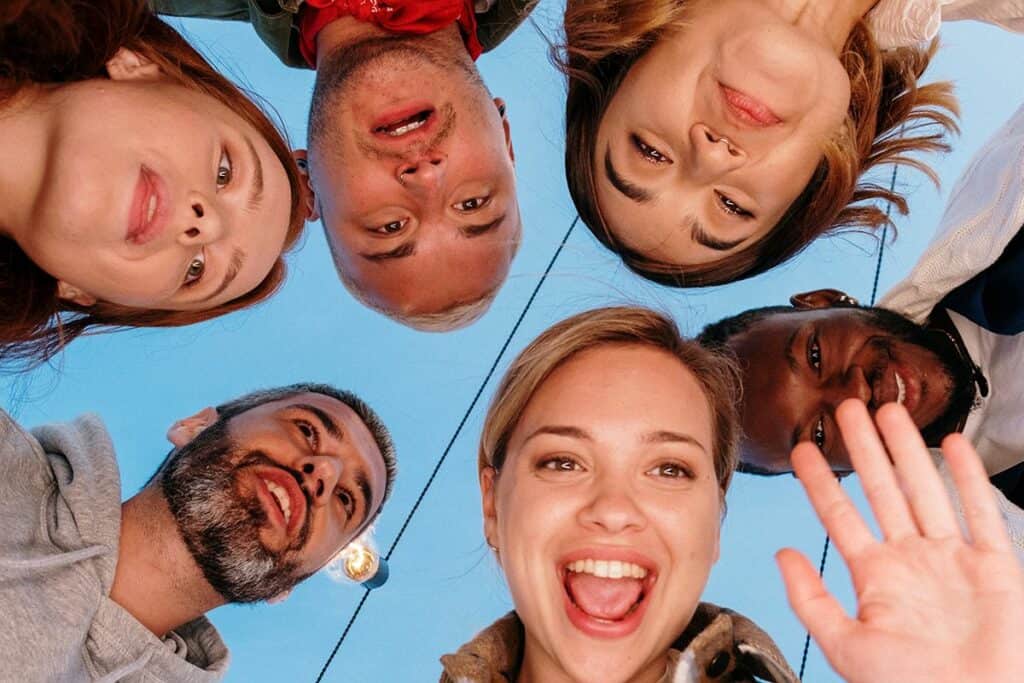
3. Understand Your Customer Needs and Expectations
Conducting tourism market research and identifying your target audience will help you with this step. Once you have an idea of who your target customers are, you can discover what their needs and expectations are, and how to develop a marketing strategy to reach them effectively.
For example, if you offer sightseeing tours and you have identified younger Millennial and Gen Z travelers from the U.S. as a demographic you want to market your tours to, you will need to go beyond sightseeing to attract this demographic, according to the latest Arival research .
How can you make your tours more immersive and experiential, and reflect this in your marketing to engage this demographic? Anticipating and meeting your customers’ needs and expectations can lead to higher customer satisfaction, fostering reviews and repeat business. Personalization is key.
30 September – 3 October 2024
Insider Pro Access Members Save 20%
THE event of the year for solutions-focused In-Destination Experience creators and sellers
4. Create Unique Selling Propositions (USPs)
One of the challenges a tourism marketing strategy needs to solve is how to make you stand out above your competitors. Why do tourists choose some travel experiences over others? One way to differentiate your offerings is by identifying and highlighting unique selling points (USPs) that resonate with your target audience.
Let’s say you have identified younger Millennial and Gen Z travelers as a group you’d like to target with your marketing efforts. In your city there are multiple competitors offering similar tour products to yours, however you’ve realized that this target audience has an affinity for food tours. You find a way to work elements of culinary tourism into your sightseeing tour offering and your marketing to set yourself above your competitors and offer something unique in your region.
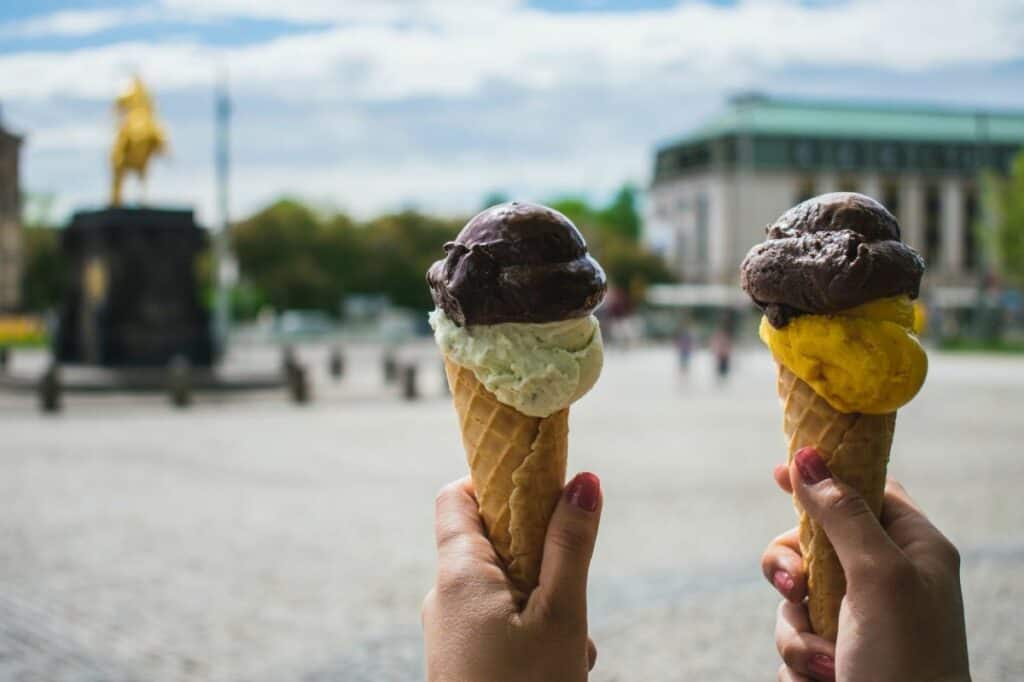
5. Build a Strong Brand
A consistent, strong brand fosters trust and ensures your tour company is memorable in the minds of potential guests. You’ll be hard-pressed to find someone who doesn’t recognize the logo of an apple with a bite taken out of it, or doesn’t know where the phrase “just do it” comes from.
Brands are about more than creative logos and catchy slogans, however. Building a robust brand for your experience business involves defining a clear identity with a focused mission and incorporating those USPs described in the previous step. Then, reaching out to your target audience through engaging storytelling and content, bolstered by a strong online presence, will enable your customers to build an emotional connection with your brand. Ensuring you’re delivering high-quality customer experiences to your target audience is crucial to building trust in your brand, and encouraging positive reviews is essential to building your brand’s reputation and ensuring ongoing brand success.
Arival Insider Pro Access members can learn more about the importance of building your brand here.
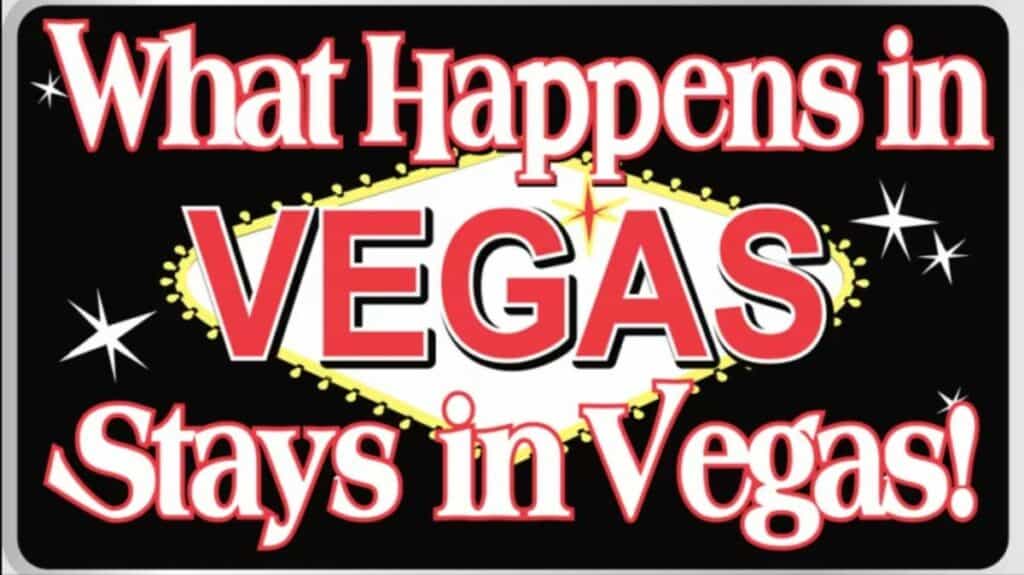
6. Consider Offline Marketing for Tours
Before we go too deep into digital marketing in tourism, it’s important to recognize that traditional methods like print advertising, brochures, and partnerships with local businesses still have relevance and can complement digital marketing strategies.
Many travelers are still waiting to book their things to do until they are in-destination, which means there is an opportunity to meet these travelers where they are. For example, working with destination marketing organizations (DMOs) and other regional tourist organizations that operate tourist information centers can enable you as a tour or experience operator to get printed promotional material about your experiences physically in the hands of tourists looking in person for things to do. Reach out to destination marketers in your region to take advantage of this offline marketing opportunity.

7. Embrace Digital Marketing Strategies
As travelers increasingly use digital channels to discover, plan and book their travel, operators can and should leverage a range of digital marketing strategies to effectively promote their tours and engage with potential customers.
From Google Things to do to search engine optimization (SEO), from social media strategy to working with influencers, from effective email marketing to impactful content marketing, a strong tourism marketing plan will incorporate a variety of digital marketing elements to bring a wider audience to the top of the funnel, and engage with them throughout the funnel at various stages of their discovery, planning and booking journey.
Arival has developed a number of guides and articles to help experience operators navigate the world of digital marketing for travel and tourism. Here are a few resources:
- An Essential Guide to SEO for Tours & Activities
- Content Marketing
- Your Guide to Influencer Marketing in Travel and Tourism

8. Leverage Modern AI Technology
The popularity of AI in 2024 cannot be understated, however many companies in the travel industry have been using AI in various forms long before the release of ChatGPT in late 2022 brought Generative AI, or Gen AI to the forefront. Gen AI, though, has made it a lot more accessible for travel businesses and tourism marketers without a lot of technical expertise to integrate AI to personalize customer experiences, generate targeted content, and enhance decision-making in marketing strategies for tourism.
Many companies in the marketing for tourism space have developed tools and resources for tour, activity and attraction businesses, some of which are listed on Arival’s list of AI Resources for Experience Operators . Find out more about what’s the latest with AI in travel and how tour and attraction businesses are using it at the next Arival event.

9. Take Advantage of the Current Trends
Staying up-to-date with the latest digital trends in marketing for travel and tourism is essential to stay relevant and get ahead of your competitors.
For example, over the last couple of years, short-form videos on platforms like TikTok have risen dramatically as a channel for travelers — younger Millennial and Gen Z travelers in particular — to find inspiration for travel experiences. Incorporating vertical and short-form video in your tourism marketing will help you engage this audience, enabling you to meet travelers where they are online and present the experience offerings of your tour, activity or attraction company in a format your audience is familiar with.
@j_buzzi I don’t think I’ll ever get over how amazing bioluminescence is! 🤯🌌 #bioluminescence #getupandgokayaking ♬ Another Rain (From “Halo 3: ODST”) – DS Music
Justin Buzzi , founder of Get Up and Go Kayaking , jumped on the vertical video trend and attracted millions of views and over one million likes on TikTok with this short bioluminescence video.
10. Monitor and Evaluate Your Strategy
A strategy without evaluation is like a ship without a compass. Regularly assess the effectiveness of your marketing strategy using key performance indicators (KPIs). KPIs to monitor the effectiveness of your marketing strategy could include website traffic, conversion rates, social media engagement, booking levels, and customer reviews and ratings. Consistent monitoring and evaluation ensure that you not only navigate the course but also make agile adjustments, keeping your strategy aligned with the ever-shifting tides of the tourism market.
1. What are the key components of a successful tour marketing campaign?
Success lies in a well-researched strategy with clear targeting built on tourism market research, compelling USPs that speak to the needs and expectations of your target audience, and a strong brand built on a balanced mix of offline and digital marketing, as well as a compelling tourism experience product itself. All of these components work together to make for a successful marketing strategy.
2. How often should I reevaluate and update my tourism marketing strategy?
In the world of tourism marketing, trends and traveler preferences change rapidly. Check in regularly with travel trends (and let Arival research guide you). While you might evaluate the effectiveness of your overall strategies quarterly to stay responsive to market changes and ensure your strategy remains effective, more frequent monitoring of individual social media channels, website KPIs and SEO will help you be that much more effective.
3. How can I optimize my website for tour marketing purposes?
Your website is your digital storefront. Prioritize content marketing , then optimize for search engines ( learn more about SEO here ), ensure seamless user-friendly navigation and online booking system capabilities for both computer and mobile booking , incorporate visually captivating elements like photos and videos, keep your pricing and product listings up to date, and update your content regularly.
4. Are there any specific strategies to attract international tourists?
To attract international tourists, consider ways to tailor your marketing messages for the specific regional audiences you’re interested in reaching. Look at tourism market research and trends for the different regions you intend to target — what works in the U.S. might not work in Asia and vice versa. Your local and regional destination marketing organizations (DMOs) may be able to help with this, as destination marketers often conduct research on the international travelers coming to your destination. Consider utilizing multilingual content to reach a broader range of potential travelers, and explore partnerships with international travel agencies. Check out Arival’s list of OTAs organized by geographic region to help you identify potential distribution partners in other languages and regions.
5. How important are customer reviews and testimonials in tour marketing?
Customer reviews and testimonials play a crucial role in tour marketing, acting as powerful social proof that influences potential customers. Positive reviews build credibility and trust, addressing concerns and reservations prospective customers may have. Encourage your satisfied customers to share their experiences on platforms like TripAdvisor or Google, or wherever they booked, and don’t forget to respond to these reviews, whether positive or negative.
6. What are some unique challenges in tourism marketing compared to other industries?
Tourism marketing faces unique challenges such as seasonality, unpredictable external factors (e.g., natural disasters ), and the need for real-time adaptability to changing travel trends. High competition demands innovative strategies to stand out, and the reliance on positive word-of-mouth makes ensuring customer satisfaction even in the face of unpredictable challenges critical.
7. How can I use tourism marketing to cope with seasonal fluctuations in the industry?
To cope with seasonal fluctuations, craft seasonal promotions, diversify offerings to match changing preferences, and use marketing to highlight the unique experiences available during different seasons. Some strategies include implementing targeted off-season promotions, creating incentives for bookings during slower periods, and developing themed tours or events that align with seasonal interests and capitalize on festivals or holidays. Implementing dynamic pricing strategies , where prices vary based on demand, can also help maximize revenue during peak seasons and encourage more visitation during slower periods.
Navigating the Future of Tourism Marketing With Arival
Success in tourism marketing lies in learning about your audience, developing practical strategies to reach them, constant adaptation to keep up with changing market conditions and traveler trends, and utilizing tools and research like what Arival provides to stay ahead in a competitive landscape.
Keep in mind that you don’t have to do this alone. There are multiple marketing agencies out there that specialize in marketing for travel and tourism companies, with some even focusing specifically on tours, activities and attractions. Check out our curated list of the tourism marketing agencies for tours and attractions here.
Even better, join us at the next Arival event where we’ll dive into the latest tourism market research insights and trends in travel experiences, and share practical tourism marketing strategies and other actionable takeaways to help you reach your target markets, increase your bookings and grow your business.
Become an Insider Pro Access member today and get access to the full library of Arival research, plus many other benefits such as free consulting sessions, special discounts and 20% off in-person events, starting from $179 per year.
Sign up to receive insights tailored for the in-destination industry as well as updates on Arival.
Header photo: Unsplash / Merakist

Tour Business Evolution: Smart Scaling Strategies

The Affluent Experiences Traveler

Over 130 Resellers, Restechs Have Implemented OCTO

Top Six Ways to Diversify Your Revenue
Since 2019, Arival has hosted one major event in Europe each year. For 2024-2025, we’re thrilled to offer two exciting events: Arival 360 | Valencia and Arival | Activate Edinburgh. Here’s a quick comparison to help you decide which event to attend—or why you might want to come to both:
- Scope : Flagship European Event with a global reach; up to 30% of attendees from outside Europe, including the U.S., Middle East, LATAM, and APAC.
- Audience : Experience creators, tech and distribution companies, and industry professionals from around the world.
- Arival Theater Content : Global topics including: over-tourism and sustainability, technology, distribution, European consumer and operator trends.
- Breakout Sessions : In-depth workshops on operational best practices, product expansion, AI, channel management, marketing tech, a Spain-specific track and an Innovation Showcase highlighting the most tech-savvy companies in our industry.
- Networking : Connect with leading OTAs and distribution companies, and build valuable partnerships.
- Location : Valencia, a stunning coastal city offering rich cultural experiences.
- Attendees : Approximately 800, providing extensive networking opportunities.
- Scope : Regional focus on the UK, Ireland, and the Nordic regions.
- Audience : Operators and industry professionals from the region.
- Content : Gain insights on regional topics like technology, distribution strategies, and hear from top regional tourism leaders.
- Breakout Sessions : Experience hands-on learning at Edinburgh’s top attractions and tours, with sessions on visitor experience, digital journeys and innovative tour development. In-depth sessions for companies at the beginning of their digital journey and more advanced sessions for people and companies looking to elevate their experience.
- Networking : With a more intimate setting. you’ll have more time to build deeper connections and create more meaningful interactions with your current and future partners including distributors, tech companies, DMOs and more.
- Location : Edinburgh, known for its stunning architecture and historic charm
- Attendees : Approximately 400, fostering an intimate peer-to-peer learning and networking environment.
- Global vs. Regional Focus : Valencia is a global event with an international audience, while Edinburgh is a regional event focused on the UK, Ireland, and Nordic regions.
- Event Size : Valencia hosts about 800 attendees, providing broad networking opportunities, whereas Edinburgh’s 400 attendees create a more intimate, focused environment.
- Content and Sessions : Valencia features global themes and advanced topics, whereas Edinburgh provides region-specific insights and hands-on experiential learning.
- Location Experience : Valencia providing a coastal escape and Edinburgh offering historic and iconic attractions.
- Who Will Be There: The most valuable part of Arival Events is the connections you make and the partnerships you build to grow your business. At Arival | Activate Edinburgh, you’ll engage with key industry players in the UK, Ireland, and Nordic regions. If your business focus is on these areas, Edinburgh is where you need to be. For those targeting broader European or global markets, Arival 360 | Valencia offers the ideal platform to network with international leaders and innovators.
With limited opportunities for business development, learning, and networking in our industry, attending both events is a strategic move. By participating in both Edinburgh and Valencia, you maximize your exposure to diverse markets and influential contacts.
However, if budget constraints or a specific regional focus dictate your decisions, choose the event that best aligns with your primary business goals. Join us in Edinburgh for regional insights or Valencia for global perspectives—or better yet, attend both to fully leverage the potential of Arival’s expansive network.
For service providers such as a restech or ticketing platform, distribution company, or other services including marketing, AI tools, etc., attending both gives you access to attendees from both markets to connect with your current customers and to meet new ones!
already a member?
Username or Email
Remember me
Lost your password?
NEED TO REGISTER?
Included in Free Membership
Included in Arival Pro Membership
The Arival on-demand video library archive Access to the entire library of over 150 video sessions and webinars
Arival.guides Short, digestible research & trends reports delivering insights into our industry, such as The Tour Operator Outlook for 2021.
Arival.travel articles Topical articles about marketing, tech, operator business and operator stories in all areas of tours, activities & attractions & experiences
Job board access Find a job from our regular listings, post a resume to the talent network and learn strategies from the job resources articles
New webinars Helpful, instructional sessions covering subjects such as Mastering Facebook Ads, Grow Your Business and How To Work With OTAs — topics to help advance your business.
Discounts on all Arival in-person events 20% Discount on all Arival in-person events (save up to $300)* based on business type
Arival ProShield – Insurance program Access to tailored insurance solutions by Granite Insurance is available exclusively for Arival Insider Pro Access Members. Insider Pro Access Members also have access to a suite of resources from Granite Insurance including templates, forms and other informative documents.
Insiders Pro Access member exclusive webinars Paid membership-only webinars to deepen your understanding of important industry topics.
Job postings & talent directory Post jobs & connect with candidates most applicable to your business.
Private roundtables to connect, learn and engage Small, focused and intimate discussions exclusive to Arival Insider Pro Access members.
Full access to Arival’s library of in-depth reports Up to date, deep analysis of tourism topics ranging from Self-guided Tours to Sales & Distribution Trends and Outlooks, based on the data that defines the industry.
The latest on-demand videos Over 350+ on-demand videos featuring hot topics in tours, activities & attractions
Insider discounts in digital marketing, tech, e-learning, and more Save money on additional tools, services and learnings you need to run your business. Exclusive to paid members.
UPCOMING EVENTS
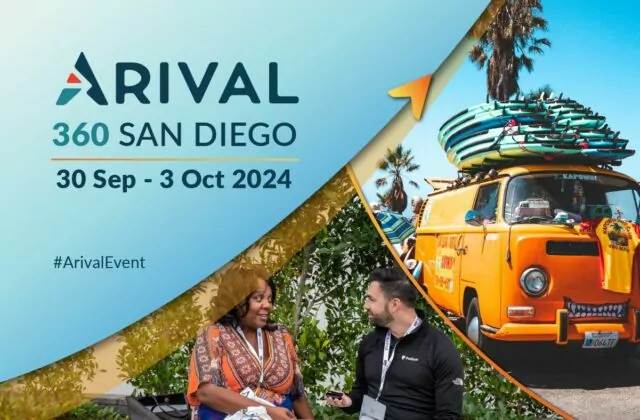
At Arival, we believe travel can make the world a better place. Our mission is to establish and inspire a diverse community of individuals and companies in the In-destination Industry by providing opportunities to gain insight, share knowledge and build connections. To make it possible for true collaboration, creativity, innovation, and idea exchange to thrive, we are committed to facilitating a welcoming and respectful community for all. This Conference Code of Conduct shares our community expectations and applies to all attendees, employees, exhibitors, speakers, sponsors, volunteers, and other participants at Arival- produced and sponsored events. We empower all participants in our community to actively engage in creating a friendly, inclusive and safe environment for all.
Arival’s core values include the following, and create an expectation for conduct at our events and in online community spaces:
We demonstrate a deep respect for human beings inside and outside our company and for the communities in which they live. We value integrity and strive to consistently interact with others in ways that are authentic, ethical, and fair. We are dedicated to transparency , committing to clear, open and honest communication. We actively pursue and advocate for inclusion, diversity and representation of varying cultural backgrounds, perspectives and ideas
Arival welcomes people from all cultural backgrounds, and does not discriminate on the basis of race, color, creed, gender (including pregnancy, perceived pregnancy, childbirth, breastfeeding, or related medical conditions), gender identity, religion (including religious dress and grooming), marital status, domestic partner status, genetic information, age, national origin or ancestry, military or veteran status, sexual orientation, physical or mental disability, or any other basis protected by federal, state, or local laws.
Accordingly, participants must refrain from displaying any demeaning, harassing, aggressive, or intimidating behavior or materials that would interfere with others’ experience and participation in our community.
If you witness or are subjected to inappropriate or disruptive behavior or have any other concerns, notify an Arival staff member as soon as possible.
Inappropriate or disruptive behavior will not be tolerated. Arival reserves the right to refuse entry to or remove any party from any event or community space at any time when participation or behavior create a disruption or hinder the event or enjoyment of the event by other participants. All determinations are at the sole discretion of Arival, and the decision of the Arival team will be final. Severe breaches of this Conference Code of Conduct may result in disqualification from participating in future events. Individuals expelled due to violating this Conference Code of Conduct will not be eligible for a refund or other consolation.
If you have questions regarding this Conference Code of Conduct or its implementation, please contact us at [email protected] .
Privacy Overview
Travel and Tourism Marketing: The Digital Guide
/ thoughtspace - guide, industry expertise, omnichannel, tourism, august 2, 2022 coegi.
The travel and tourism marketing is rebounding as the industry surges above pre-pandemic levels.
Are you taking advantage of it?
This digital guide to travel marketing gives you everything you need to know before launching a campaign.
How to Succeed at Travel and Tourism Marketing
Travel books and printed pamphlets are a thing of the past. Now, it’s time to lead with digital tactics.
Today’s travelers are finding inspiration for trips on digital channels. Younger travelers in particular are taking this a step further by shifting to mobile devices over desktop , looking to the brand’s website or Instagram to get a sense of what they can expect.
To reach the modern traveler, brands need to create a seamless experience across digital channels from awareness to check out/visit.
You’ll also need to create a strategic, customized approach to target your optimal audience on the most impactful channels.
Your Guide to Success
Download this guide to learn how to:
- Leverage the latest travel and tourism marketing trends
- Create the optimal media mix for your brand with the most impactful channels
- Implement cookieless solutions to reach your target audience
- Measure the ROI from omnichannel travel marketing campaigns
Ready to take off?
View and download the guide below!

The Return of Travel and Tourism Marketing
After the tumultuous years of the pandemic, travel and tourism is finally experiencing a surge in demand. Travel digital marketing spend dipped 51% in 2021 but is now growing by 14.2% in 2022. An additional 12.1% increase is expected in 2023, according to eMarketer .

What do travel and tourism marketers need to do to prepare for this opportunity?
Lead With Digital Tactics
Travel books and printed pamphlets are a thing of the past. Today’s travelers are finding inspiration for trips on digital channels. Younger travelers in particular are taking this a step further by shifting to mobile devices over desktop, looking to the brand’s website or Instagram to get a sense of what they can expect.
As the saying goes, “not all who wander are lost.” Allow yourself to experiment, becoming smarter by letting continuous learning guide your marketing strategy. The best way to do that is to start with digital, where flexibility and agility allow for quick learnings and pivots.
Digital marketing is the perfect petri dish to test out tactics and creatives before making a major investment. For example, you can run a short-form video ad on social media and identify which creative is performing best. Then, use those creative learnings to inform a more premium CTV placement or Cable TV buy with an added layer of confidence.
Is your travel brand ready for a digital-first marketing strategy?
Here’s your digital housekeeping checklist to prime your digital travel and tourism marketing for success:

High Impact Travel and Tourism Marketing Channels
When choosing travel marketing channels, consider these four aspects:
- Budget: If budget is limited, maximize spend on fewer channels. If you have more dollars, consider diversifying, testing something new or incorporating premium placements.
- Audience: Identify where your audience is most active and receptive to advertising.
- Customer Journey: Understand how your customers behave, and shape your advertising around their decision making process.
- Storytelling: Include highly visual channels that allow storytelling to tap into their emotions.
To keep pace with digital-first users, prioritize your digital marketing efforts on these key digital channels:
- According to Pathmatics data, Facebook is the leading social media channel for Travel/Tourism ad spend. Explore various ad formats to help lead your traveler down the funnel, such as Facebook Lead Ads. Tailor educational resources to unique audience groups to establish trust and consideration.
Endemic Travel Sites
- Travel blogs and sites are highly valuable for travel brands. 59% of families use travel websites to plan vacations. Another 13.5% of leisure travelers use travel blogs to plan trips. Use these sites establish brand awareness and trustworthiness among potential travelers.
User-Generated Content
- UGC is used by 58.2% of travelers for planning leisure travel. Word of mouth is, and always will be, the most impactful form of marketing. Encourage customers to leave quality reviews on your site or other travel pages to boost your brand status. In addition, encourage users to create content FOR you.
Paid Search
- Speed and agility are crucial for travel brands. You need to appear as a top option for during the research and discovery process. Optimize a combination of branded, unbranded and competitive paid search terms. This will help you show up for relevant, high value queries.
- Twitter is especially effective for targeting luxury and business travelers on a platform where users are highly engaged, especially surrounding news and business. To expand your targeting pool, use the platform’s AI to find follower lookalikes from competitor brands.
Online Video
- While a picture is worth a thousand words, a video is priceless. Online video placements across YouTube and Display allow brands to tell a rich, visual story. YouTube offers various travel category targeting options such as Business Travel, Family Travel, and Frequent Travel. You can also layer these with geo targeting to narrow in on your core audience.
Connected TV
- Connected TV amplifies online video by placing it on the largest screen in the household. It’s one of the most impactful visual mediums travel brands can use, while offering more flexibility and addressability than linear TV. CTV ads are a great option to reach family travelers or promote kid-friendly destinations.
- 49% of Gen Z adults and 50% of Millennials follow at least one travel influencer on social media per a MorningConsult study. These online figures are beginning to play a pivotal role in how travel is planned. Explore how creators can help boost your brand affinity whether it be local nano-influencers or macro-influencers.
- Instagram is a go-to source of inspiration for Millennial and Gen-Z travelers. Travel brands can build community by interacting with users through various formats – reels, stories, and posts. Use post comments, story polls, and Q&As to start a conversation with interested travelers. Avoid being overly curated and don’t be afraid to use trending phrases, sounds or hashtags.
- Travel engagement on Pinterest is at an all time high with travel-related searches increasing by over 60%. Pinterest is primed for planning and purchasing, and can facilitate real bookings. This platform is a great place to hone in on ‘Travel’ and ‘Foodie’ audiences.
- No other social platform enables the potential virality or mass reach as TikTok . Users spend an average of 52 minutes per day on the app, and 90% of TikTok users use the app multiple times daily. Although TikTok has a strong younger presence, 51% of users are now 30+. The app is growing in popularity amongst millennials with disposable income for travel. DisneyParks has over 4M followers on TikTok and Delta Airlines gained nearly 19.5M views in the initial 36 hours of their first TikTok campaign.
Retail Media
- Activating first-party shopper audiences through retail media networks is a great way to reach travelers. For example, the Marriott Media Network uses search and reservation data to serve relevant ads to consumers.
- Digital out of home spend is soaring as people are traveling again. Screens in airports, inflight video, taxi cabs, bus stations, billboards near attractions, and more can place your brand in front of traveling audiences. DOOH is a great tactic to educate users once they are at a destination.
Local Partnerships
- 78% of survey respondents want to support local small businesses when they travel . State and city tourism brands can leverage this trend by partnering with local artists, chefs or businesses. Thise partnerships can drive travel consideration and boost awareness for both parties. Consider unique creative options like how-to videos, downloadable guides, or co-branded social posts about the partnership.
Ad Targeting for Travel and Tourism Audiences
It’s important that you don’t create a one-size-fits-all approach when marketing to future tourists. Consider who your existing traveler base is, and identify attributes to qualify other individuals in your prospecting audience. From there, tailor messaging to drive education and consideration.
Are they solo travelers seeking adventure? Young families looking for a cost effective, kid-friendly trip? Foodies wanting luxurious and avant garde dining experiences? Create profiles to understand these individuals from a 360-degree perspective. Build as many personas as makes sense for your brand.
Personalize Messaging
Next, personalize your messaging to meet their unique motivations, behaviors and interests. Speak to each group differently and adjust visuals to resonate with their interests. If you’re looking to reach the adventure seeker, show fun activities like zip lining, hiking, concerts, etc. If you’re speaking to the budget-friendly family, showcase the value of the experiences you offer, without a major bill.
Reach Your Travelers Throughout Their Journey
To reach today’s consumers, brands need to create a seamless experience across digital channels from awareness to check out/visit.
An omnichannel strategy is vital to keep a loyalty loop and encompass all phases of the customer journey. Use your marketing mix to show up at key moments in the consumer journey from planning to experiencing. ThinkWithGoogle identified four core micro-moments in the travel process: Dream, Plan, Book, and Experience.
- Dream – Spark inspiration and educate during the dreaming phase
- Plan – Provide helpful information and build trust
- Book – Offer a compelling value proposition and enable seamless transaction
- Experience – Ensure the visit is positive and meets expectations. Follow up with post-visit marketing to keep customers engaged. Encourage reviews and social media posts during and after.
Measuring Travel and Tourism Marketing Campaigns
Create a data terminal.
It’s easy to get absorbed in the performance of individual channels. However, this causes campaigns to quickly turn from strategic to tactical. Instead, manage your advertising holistically within one dashboard. Doing so allows you to share and optimize performance trends and learnings across tactics. By looking at the data from a macro lens, you can identify important signals and weave a cohesive story.
Check your unnecessary baggage
Marketers need to ensure they are looking beyond vanity metrics to identify trends that signal success. It is especially important to synchronize data sets as we prepare for cookie deprecation. Instead of solely looking for direct attribution, explore a variety of business and media metrics over time. This will unveil unique learnings and better show the incremental impact of advertising.
Onboard advanced measurement
When media metrics do not answer your business questions, layer advanced measurement tactics , on top of traditional media efficiency metrics. These data points will provide a more robust view of marketing’s impact on business goals.

For tourism brands, foot traffic lift is especially impactful in providing a clear view of how advertising drove incremental increases in visitors.
Refuel with continuous learning
When creating a marketing strategy, it’s critical to fuel ongoing campaign learnings to answer key questions and improve results for future initiatives.
At Coegi, we combine a measurement strategy and a structured learning agenda. This ensures we are optimizing campaigns toward business goals while also continuously improving.
Key Takeaways for Travel and Tourism Marketers
- Lead with digital tactics to reach the growing audience of travelers
- Lean into highly visual channels such as social media and online video
- Understand your unique audiences and tailor ads to their consumer journey across channels
- Implement a comprehensive measurement strategy to see the impact of your campaigns
For more strategic insights and campaign activation, contact Coegi to set up a meeting with our travel marketing experts.
Related Thoughts
Win Over Audiences with Effective Finance Content Marketing
Learn how to define, collect and use zero-party data, first-party data, second-party data, and third-party data in your marketing strategy.
Using TikTok Ads to Reach Potential College Students
Use TikTok ads to improve social media marketing results. See how Coegi used TikTok to reach college students for an education client.
Using Non-Media Data for Agile Tourism Marketing
Coegi created a proprietary tool for tourism marketing that responded in real-time to both the pandemic and consumer interest in travel.
Subscribe to our Newsletter
Let's work together
We’re passionate about the power of strategy, content, technology and creativity to reach your most valuable audiences. Sound like a match? Reach out to get started.
Tell us about your project

Privacy Overview

Marketing in Tourism Strategies | 5 Tips on Types
Each industry has its own characteristics, best practices, and strategies to tackle problems. This is why it’s important to look at industries separately when thinking of how to market and expand them. The tourism industry is no different, with tourism marketing becoming a critical topic for all businesses today.
Marketing techniques are rapidly evolving because of the increasing use of technology. And when it comes to tourism, travelling is one of the most popular activities. The Age of Information has allowed digital marketing to provide various kinds of travel information to everyone.
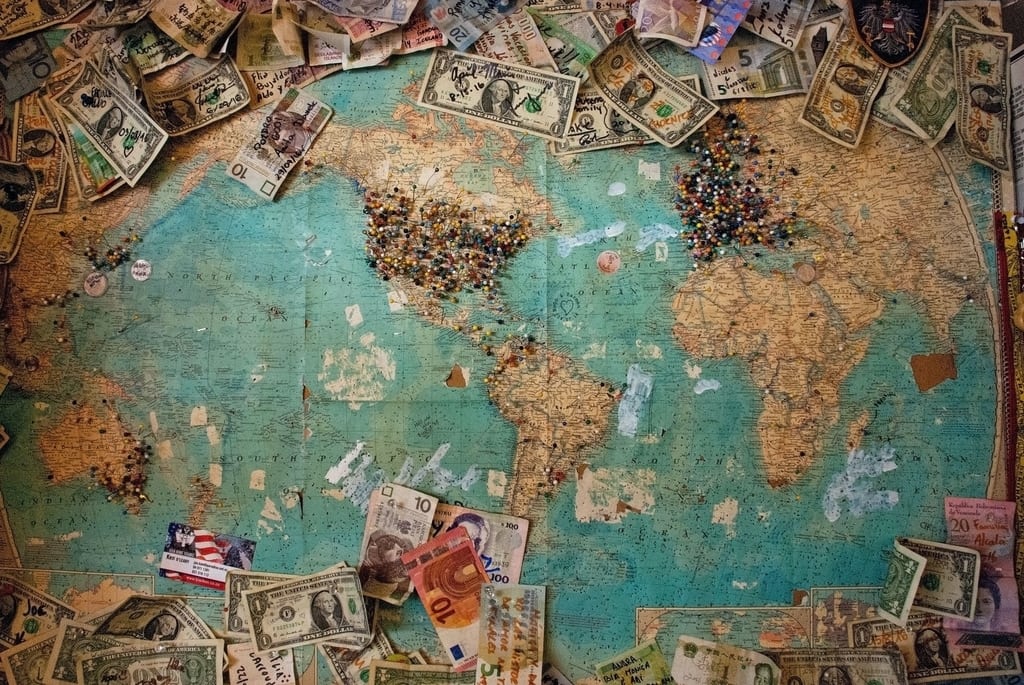
But what’s the purpose of tourism marketing? Well, even though the thought of travelling is attractive enough on its own, many tourism businesses are competing to be the number one tour marketing company for their destination/s.
This is why it’s important to use tourism marketing to promote your business and distinguish it from competitors.
The Tourism Industry & Marketing Trends
Any tour business must be aware of the different tourism types and changing consumer behaviours and travel trends in this industry.
Many years back, people perceived travelling as a luxury that only the influential and wealthy could afford.

Now, we know that there are different kinds of trips suitable for just about every pocket. From budget backpackers to luxury five-star hotel stays, people are becoming more aware of their travel needs and choosing their destinations accordingly.
Considering the rapid changes in the industry, tourism marketers need to understand and keep up to date with these developments and trends. They should also aim to adapt their strategies to cater to these conversions in consumer behaviour.
What Is Tourism Marketing?
Tourism marketing is the term used to describe the different marketing methods and strategies used in the tourism industry.
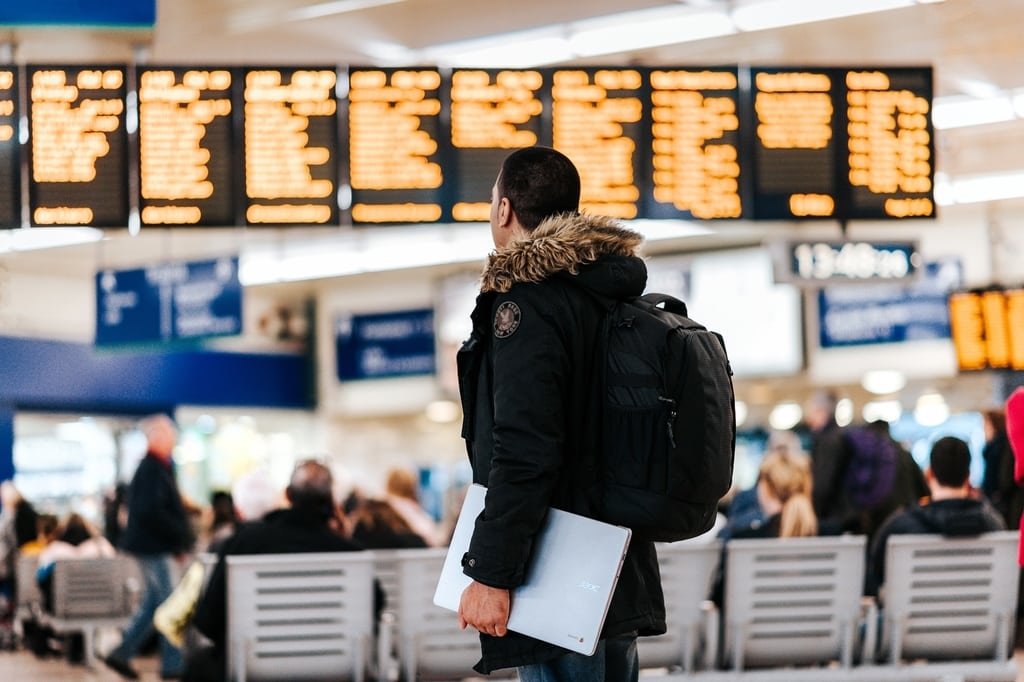
At its core, tourism marketing refers to a business that aims to attract tourists to a specific location.
The tourism field is multifaceted, so tourism marketing includes airlines, automobile rental services, and hotels and other forms of lodgings. Additionally, it covers restaurants, tours, and travel agents to generate awareness, online sales, and increase consumer acquisition.
There are many ways to do this. But first, it’s essential to understand that the foundation of a tourism marketing strategy is a well-constructed marketing plan. This marketing plan must outline the techniques, processes, and tools a company intends on using to promote tourism.
The Concept of Tourism Marketing
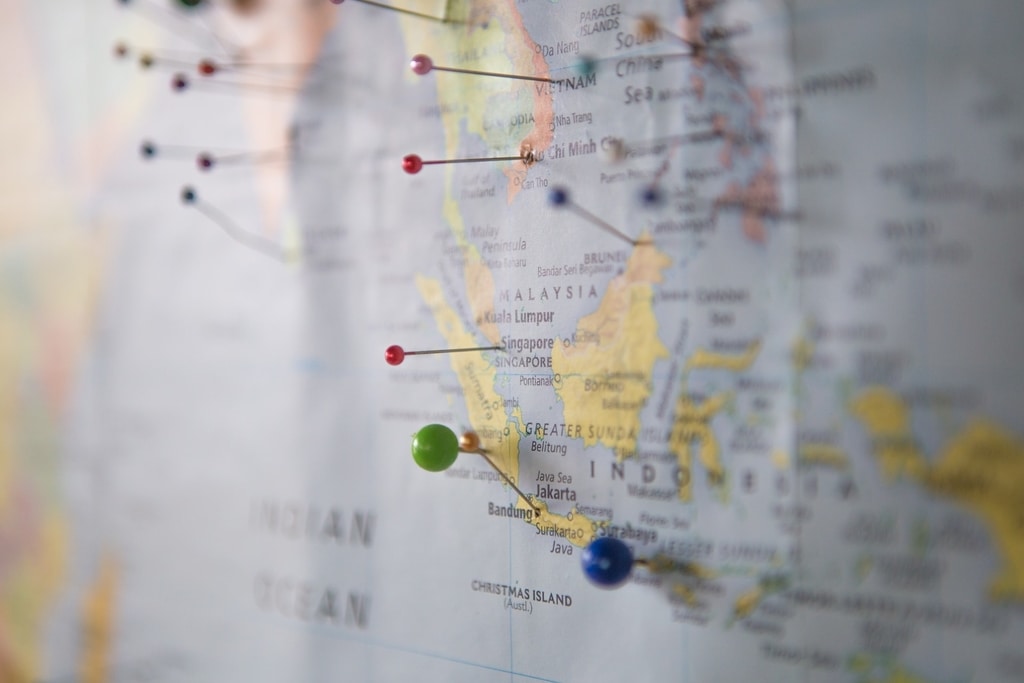
Tourism marketing is known to flourish in places already considered “hotspots” amongst tourists. But, it can also be used in lesser-known places to attract more visitors. One of the critical aspects of tourism marketing is strategic planning to achieve brand visibility, which ultimately leads to brand awareness.
When an enterprise has successfully created a tourism website , it can focus on achieving brand awareness and targeting potential customers. Through tourism marketing strategies and tools, companies can expand on their tourism market.
A successful marketing mix strategy can even help an entry-level travel business become a monopoly in the travel industry.
Why Marketing Tourism Is Beneficial
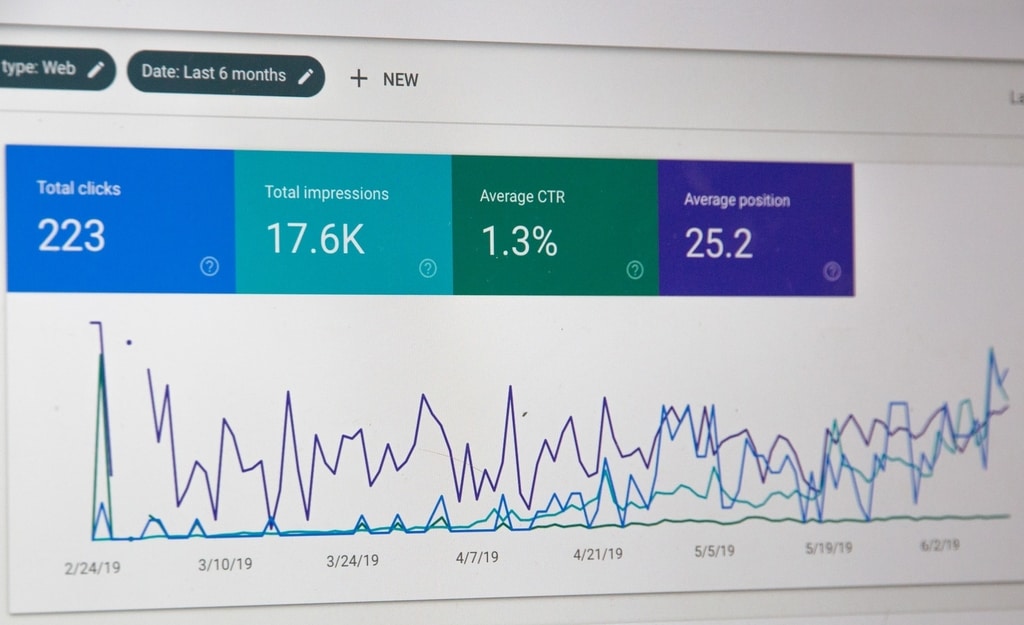
An essential part of tourism marketing is adopting the appropriate and relevant marketing strategy. Adopting the right plan could help your company maximise revenue and build awareness.
As one of the world’s largest industries, the travel industry is expected to keep growing in the upcoming years. Naturally, because of its demand and expected growth, this industry is highly competitive.
Travel businesses must research, formulate strategies, and think of innovative ways to stand out from their rivals. By using tourism marketing practices and tools, these businesses can promote themselves as the best option for travellers.
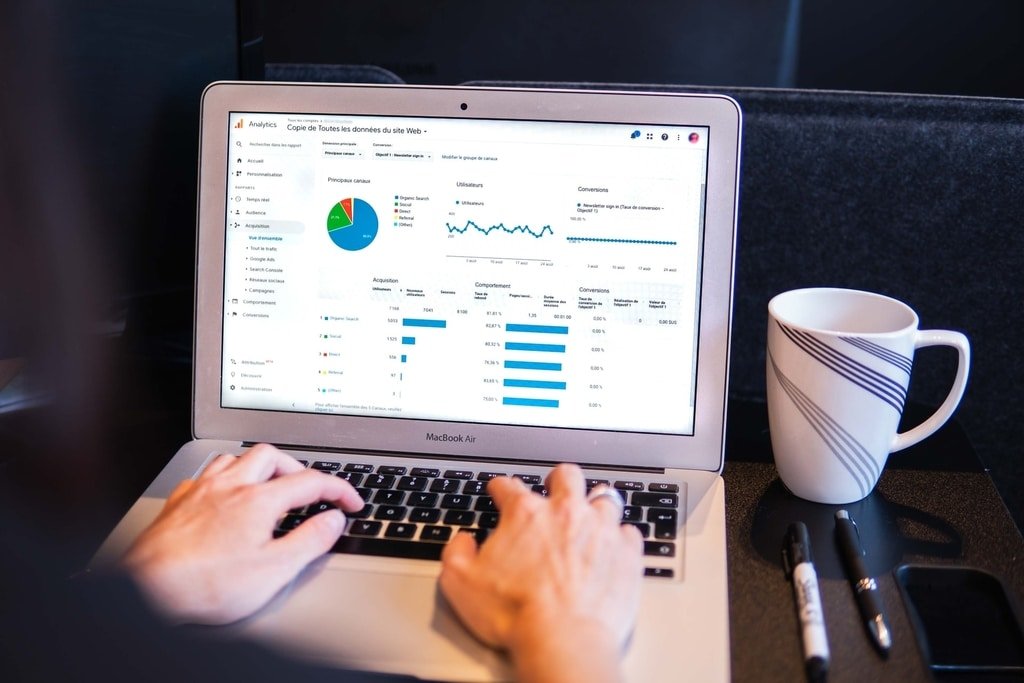
The key role is to find a unique selling point and then promote it to reach the masses. But reaching the masses is not enough. Capturing their attention, keeping them engaged (through experiential marketing), and using a content marketing strategy that’s relatable is just as crucial.
So, as part of your marketing efforts, you must keep up with the latest trends and adopt a marketing mix strategy that’s a perfect blend of the best practices and tools.
Different Types of Tourism Marketing
While there are many types of tourism marketing, here are a few major broad types.

1. Location Marketing

Think of the most popular locations that come to mind when you think of a particular continent or country. For instance, if someone says “Europe”, your mind already conjures up images of the UK, Spain, France, or Italy — even if you’ve never been there. Why is this so?
Destination (or location) marketing strategies are among the most common forms of marketing in travel and tourism. The focus here is to increase customer attention to a specific place. Destination advertisers will highlight an entire location as a travel destination instead of singling out one attraction or accommodation.

Through this type of marketing, some locations have become so popular worldwide that just the mere mention of their name is enough to elicit a response. For this reason, some travel agencies do, and can, use this type of marketing to remind consumers of these destinations.
2. Activity Marketing
Often, consumers will associate a specific activity with a place that’s already famous for that activity. Switzerland is renowned for skiing, France for vineyards, Yellowstone National Park for hiking and camping, and Alaska for Northern Lights. The list goes on and on.
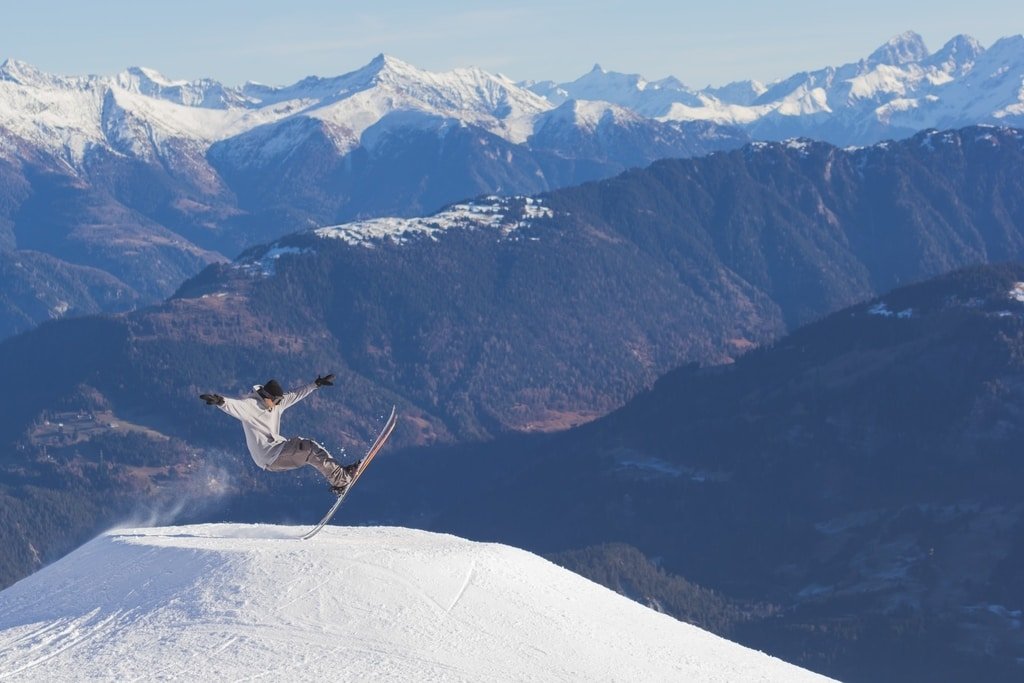
When tourism marketers capitalise (or market) a particular activity in relation to a specific place, it’s called “Activity Marketing”. This type of marketing has a wide range of different kinds of tourist activities it can cater to; like adventure sports, food tours, and art galleries.
Activity marketing is the type of marketing you should adopt if your goal is to highlight a specific thing to do.
3. Corporate Marketing
It’s vital to consider travellers who travel for reasons other than tourism. One of these includes corporate workers who may travel to different places for business purposes.

Imagine a company executive attending a meeting or conference overseas. They wouldn’t then be interested in the activities of a destination.
Corporate marketing emerged as a branch of tourism marketing. In this type of tourism marketing, professionals can highlight places where business events can take place. Through this, they can make touristy places more popular and profit off the large number of corporates who would gather at these spots.
Different Methods of Marketing in the Tourism Industry
Most modern tourism marketing strategies make use of multiple channels to attract consumers. Some of these include emails, SMSes, user-generated content, and websites.

If you want your marketing mix strategy to succeed, it’s best to use multiple channels and tools. Here are some channels you can use to include in your tourism marketing plan:
1. Digital Marketing
Since we’re in the Age of Information and heading towards the Age of Experience , focusing on digital marketing is a must. The travel journey of consumers in this field is centred more on seeking information from trusted sources and experienced travellers.
This is especially true for first-time travellers who plan their trip from thousands of miles away. These travellers will probably spend a couple of hours on each website searching for flight tickets, accommodations, and other touristy things.
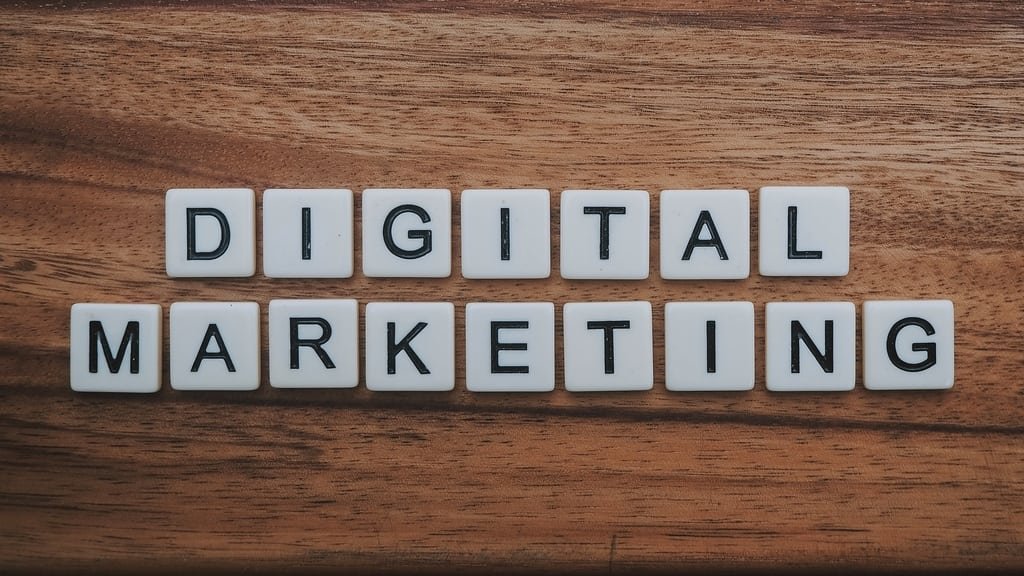
Thus, you should focus on building your brand in the digital space to reach your target audience. It’s also good to know that most searchers now use their mobile devices for travel information , either on social channels or through website content (for example, a blog post).
You should ensure your digital marketing strategy is compatible with mobile devices.
2. Social Media Marketing
A part of the digital marketing strategy mentioned above, social media marketing includes establishing your brand on social media. Influencer marketing and user-generated content are practical parts of social media marketing to make your brand seem credible and trustworthy.
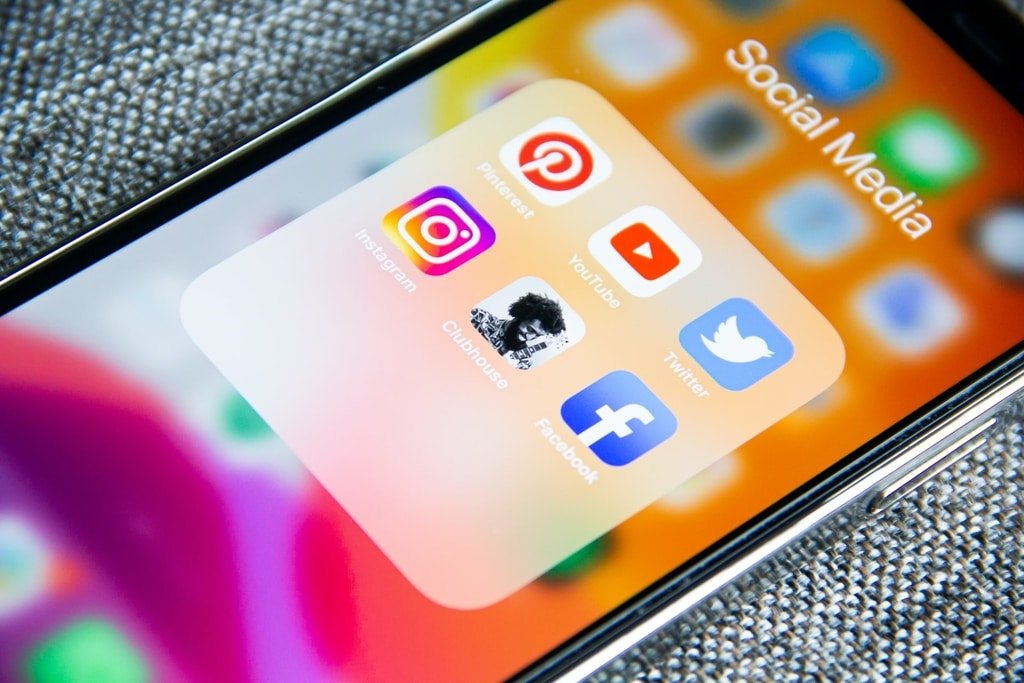
If you’re reading this article, chances are you’re just as tech-savvy as most Millennials and Gen Zs today. This also means you probably have a social media account where you may enjoy or create content on travelling.
Many tourists and travellers use social media to look for travel inspiration, accommodation and tour reviews, and hot travel tips. So, to keep up to date with the social era, your enterprise should use a robust social media strategy that showcases your travel products and services.
3. Email Marketing

Email marketing in the tourism sector can be used for many purposes, like loyalty programs, weekly newsletters, or lead nurturing. Through email marketing, brands and companies can continuously contact existing and potential customers to build on their relationships.
A form of direct and digital marketing, email marketing can help you send updates to your target market on your latest products and services. You can also use segmented marketing to collect data on your ideal customers’ preferences and send out highly personalised content they have a higher chance of liking.
Marketing Strategies for Tourism
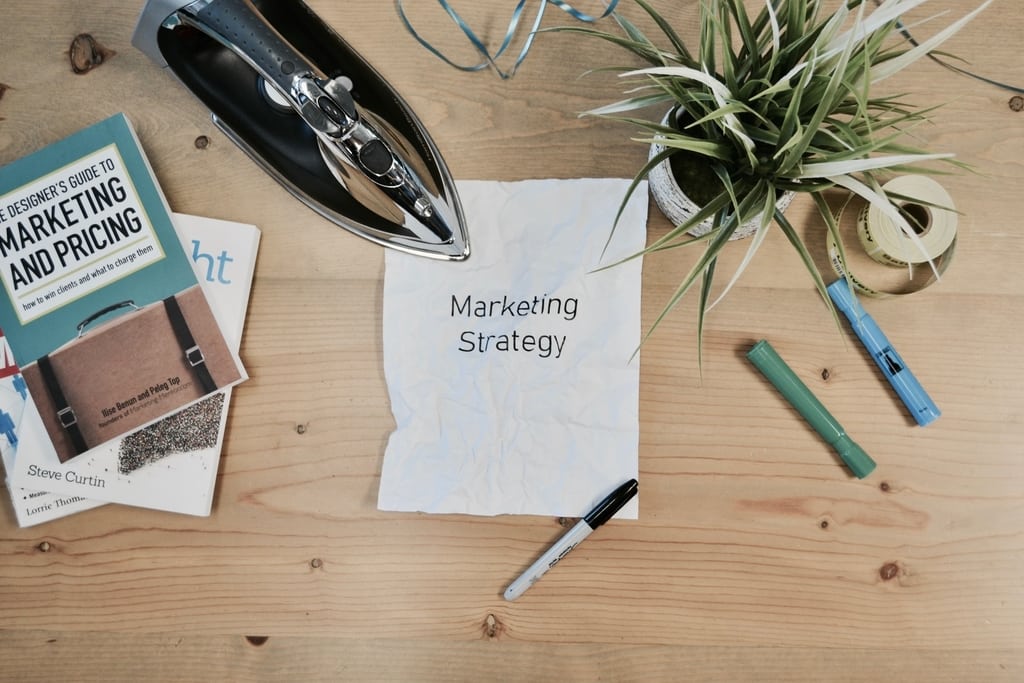
All this talk about the importance of marketing strategies, but which strategy to adopt and implement? The truth is that there’s no one-size-fits-all formula when it comes to tourism marketing.
You could take inspiration from other marketing companies, but you’ll still have to make some adjustments to the adopted strategy, so it’s suitable for your company. Alternatively, you could start from scratch by conducting market research and then selecting the appropriate tools, methods, and marketing activities.
Tourism marketing strategies don’t have to be boring; they can be just as exciting as their industry.
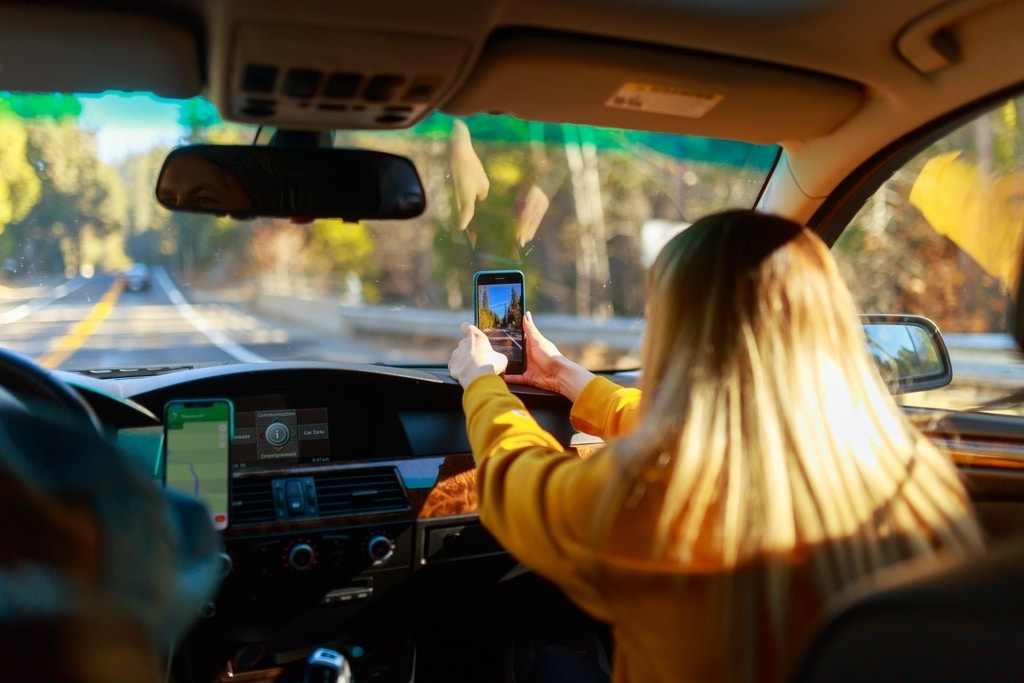
Firstly, it’s essential to keep up with the latest tourism marketing trends and developments. But that’s not enough, also consider the meaning behind these updates and how they’ll impact your travel business. Here are some strategies and marketing tips you could use for your company’s plan.
1. Don’t Forget Local
The coronavirus outbreak in 2020 led to governments implementing a lockdown that restricted movements in and around countries. Over the months, lockdown regulations eased, with some countries allowing international travel but mainly sticking to local travel only.
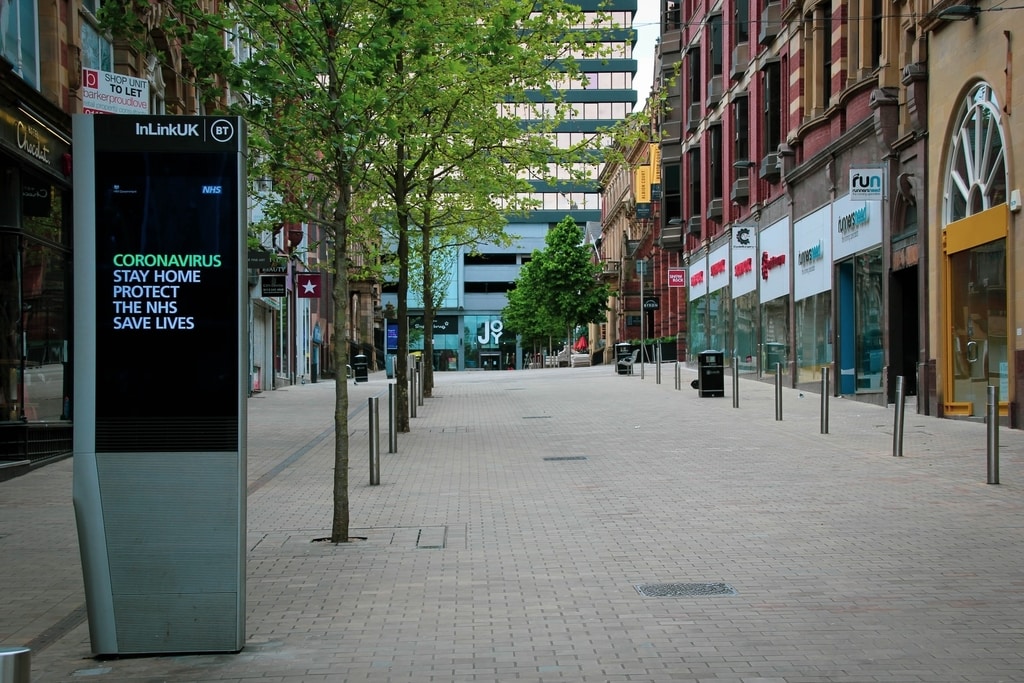
To heal themselves from COVID-19 fatigue, many tourists resorted to touring their own countries. This increased domestic travel, bringing about a new target market.
Destination marketers can then use this to sell the features of their business in such a way that’ll appeal to local consumers. Instead of focusing on weather and famous attractions, highlight facilities, one-day trips, and a site’s ability to host events.
Additionally, emphasise the best hotels, cafes, and bars in an area as this will appeal to locals who are now more attracted to discovering the best of their town.
2. Remote Working

This may sound completely unrelated to tourism marketing, but a result of the pandemic is an increase in remote work.
When many businesses moved to an online working model during the lockdown, the workforce looked for alternate places to serve as their workplace. This created a specific niche of remote workers who turned to hotels and foreign destinations to enjoy work with a different view.
To cater to these business needs, travel marketing companies can create and promote product offerings that appeal to remote workers. Whether it’s a business suite in a 5-star hotel in Dubai or an Airbnb in the forest, the appetite for work-friendly spaces and accommodations is expected to keep growing.
3. Virtual Reality (VR) tours

A part of experiential marketing, Virtual Reality is just one of the many exciting tourism technologies available today. Through VR, tourists and travellers can experience a flight, hotel, restaurant, or attraction from a great distance away.
Easily accessible from a computer or mobile, virtual reality tours provide an opportunity for users to get a sense of an experience that awaits them. By getting a sense of what they can expect, virtual reality tours effectively clear clients’ doubts during the booking process and increase their appetite for travel.
4. Voice Search, Chatbots & Other Technologies
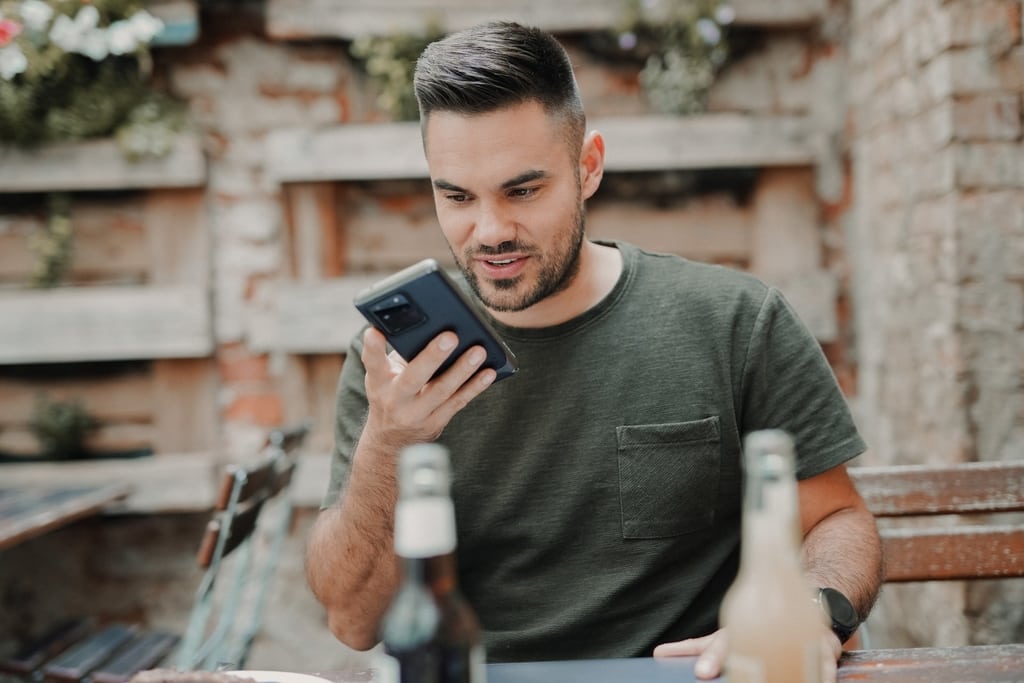
Technology just keeps outshining itself, doesn’t it? Tour operators can use voice search technology to allow customers to make bookings, seek information, and give feedback just by speaking. This makes it easier for mobile users on the go to use your services.
Chatbots allow for quick responses to customers, even when staff members are not available. Using chatbots on your website allows you to communicate with clients 24/7, in multiple languages, and promote your products and services. This can help increase revenue and improve the customer experience.
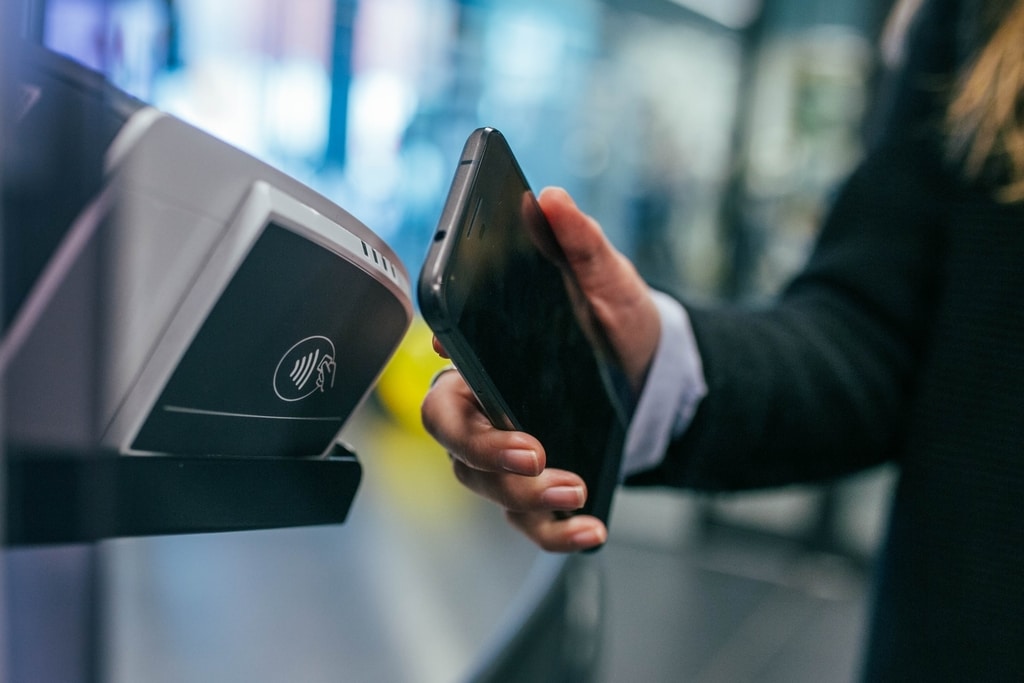
Other beneficial technologies include contactless payments, cybersecurity measures, and augmented reality. Or, improving your existing digital content through strategies like on-page SEO optimization and content upgrades to rank higher on search engine result pages.
5. Personalisation
Personalisation marketing is a branch of marketing that can be used to create more relevant customer offerings.
This type of marketing can be used with email, social media, and other similar marketing tools. Since modern customers have such individualistic personalities and tastes, personalised offerings appeal more to them.
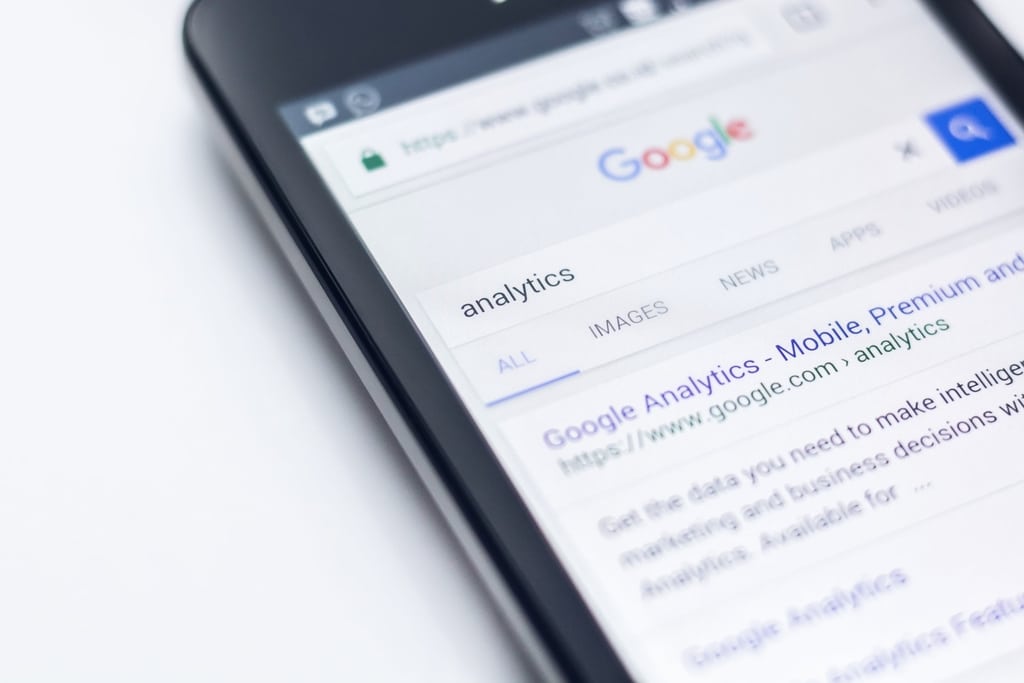
So, through this marketing, travel companies can capture data (for example, from the company’s Facebook page or website). And then they can use this data to curate customer profiles and offer personalised offerings and future recommendations.
Final Thoughts on the Marketing of Tourism and Travel
Remember that customers don’t just pay for products and services; they pay for the experience they expect to gain from it. The trick is to find your unique selling point and promote it as a comparatively superior experience in your tourism marketing efforts.
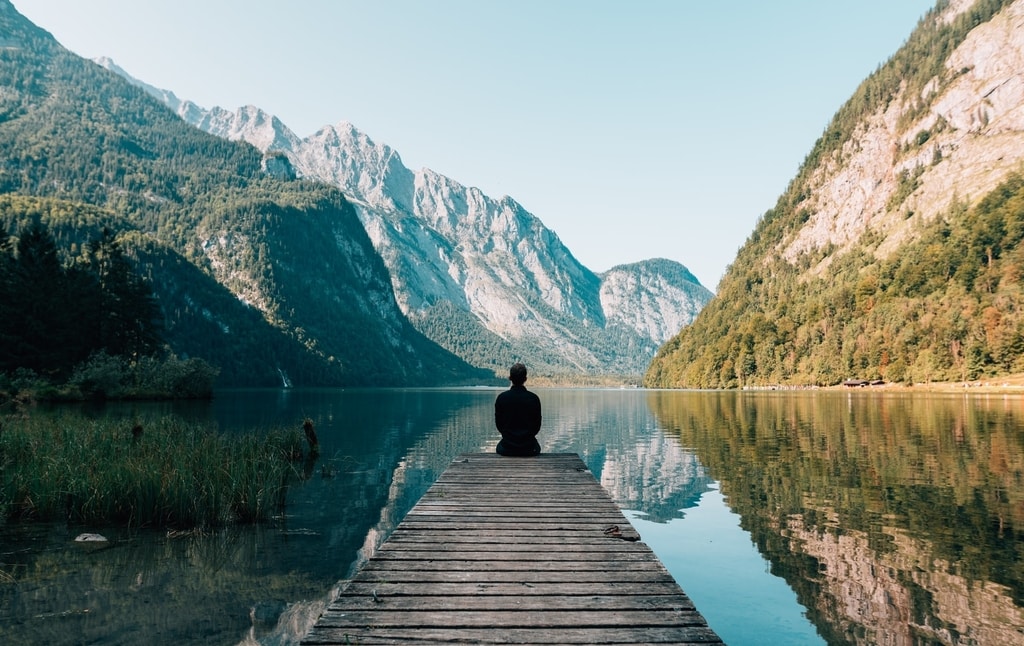
Since so many people love leisure trips, you must aim to make your company or brand stand out as unique compared to other tourism companies in this competitive industry. An effective advertising and marketing strategy can boost brand visibility and awareness for a new audience and the existing customer base.
Hopefully, you found these marketing tips and tricks useful for your tourism business.
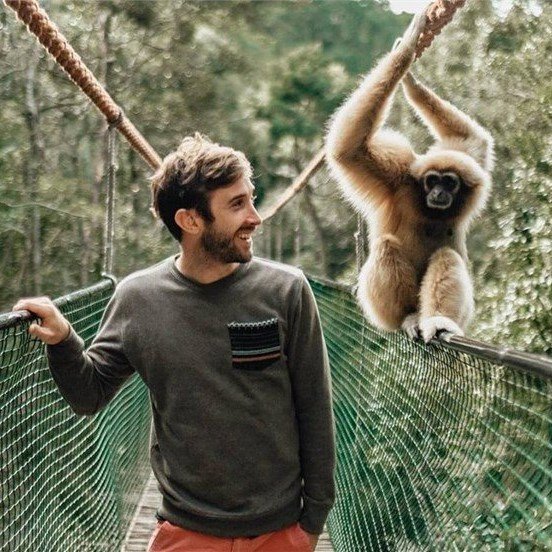
More to explorer
Myallocator cancels standalone product: alternatives for booking channel management.

15 Elements of a Great Hospitality Website Design
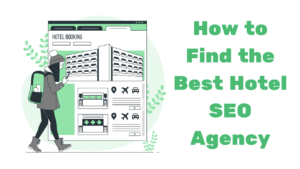
How to Find the Best Hotel SEO Agency in 2024
Book a call with an digital strategist.
- Get in touch
- Visit our blog
The Four Ps of Marketing for destinations
Research and analysis + topic: shareable experiences + visitor experience.
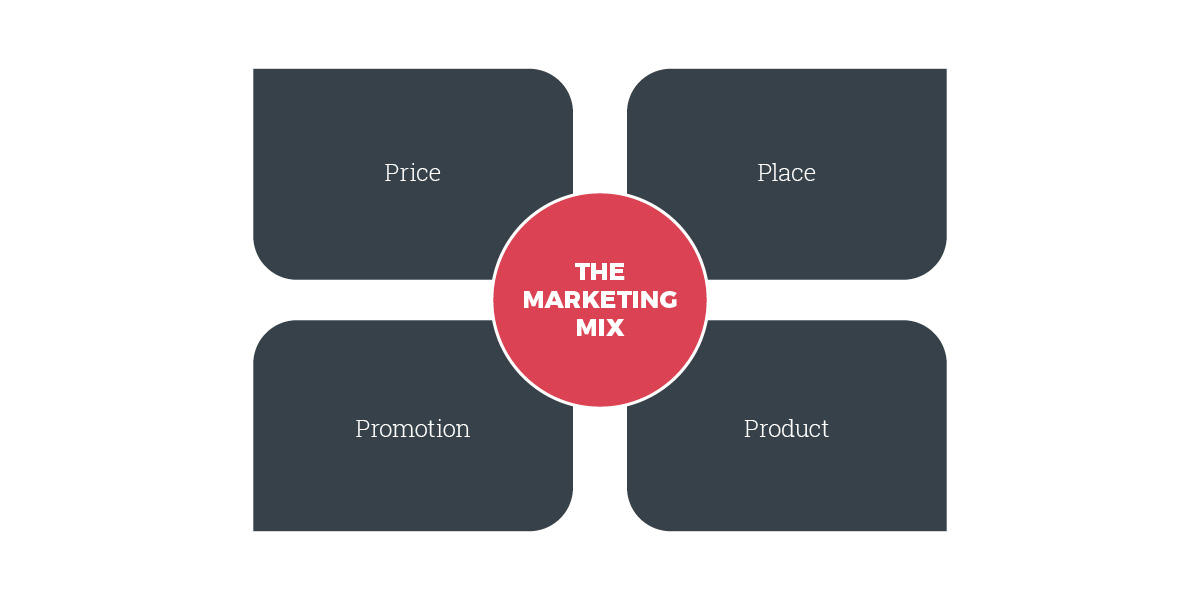
- Recent Posts
- Sharing gratitude for tourism’s positive impact and hope for the year ahead - 23 December 2021
- Why decarbonization will disrupt the future of travel - 27 April 2021
- Solidarity through this defining time: A letter from our CEO - 23 March 2020
13 April 2016
8 comments(s), too many destination marketers confuse “advertising,” “promotion” and “marketing.” don’t be one of them..
Getting the terminology correct will make your investments much more effective.
There has been a lot of discussion in recent years about destination marketing organizations (DMOs) morphing into destination management organizations. While managing the product is becoming increasingly important in driving tourism, misunderstanding the terminology – advertising, promotion and marketing – are often used interchangeably can create confusion about an organization’s objectives. Let’s clear up the semantics.
If you’re well-versed in marketing, you’re undoubtedly familiar with E. Jerome McCarthy’s Four Ps of Marketing , sometimes referred to as “The Marketing Mix”:
Which of the four Ps matters most to a destination marketer? Typically, a DMO has little control over pricing and place . Promotion has changed drastically as a result of technology that accelerates word-of-mouth communication and shifts control over the messaging toward the consumer. For this reason, product is becoming an increasingly critical focus for DMOs; positive word-of-mouth flows freely from visitor experiences that exceed expectations.
Historically, destination marketing organizations have invested heavily in promoting their destination through media relations and paid advertising. Now they must consider promotion through digital channels as well. It’s important to remember, however, that promotion is only one component of marketing – and that advertising is only one method of promotion.
Why is this important?
The experience that a destination delivers can be its most meaningful promotional tool. Destination marketers can no longer assume that promotion (in terms of reaching large numbers through broadcast advertising) is the best investment of their limited resources. Instead, destinations should consider shifting their marketing mix towards product , because improving the visitor experience is the most effective way to super-charge positive word-of-mouth. With the aid of digital communication, a visitor experience begins long before they arrive and can last long after the journey ends. This means that DMOs that default to advertising as their primary method of promotion are missing enormous opportunities to engage their audiences.
Since the word marketing now means something far beyond promotion or advertising, modern destination marketing organizations (with an intended emphasis on marketing) must take responsibility for leading the collaboration within the industry and all stakeholders to define, measure and provide a consistent visitor experience.
More reading related to developing a destination’s product: Design thinking for the modern DMO
Destination Think helps destination marketers and DMOs adapt to change by pairing modern strategy and implementation services with an unmatched global expertise in destination marketing. Stay relevant; contact us to find out how we can help.
The general approach is fully appropriate but lacking since the real conditions are underestimated at large: The expression of “while managing the product is becoming increasingly important in driving tourism” is clearly showing that weare appraching to the problem from ends but not means! The clear merket mistake is: We are trying to sell whatever available in the market for the name of tourism industry and now trying to solve rhe mistakes of ‘industrial production deficiencies’ due to non existence of Destination Management. The first vital aim must be to establish proper DMO (management version) models for destinations to enable a balanced industry, covering prosperious marketing activities. Otherwise, proper macro efficiency and effectiveness cannot be ever reached!
Thanks for your thoughts, Zafer. For many destinations, the shift to a new destination management model is a long journey because different organizations are starting from a different place. Every destination and its tourism board is in a unique position. Some are already excellent at destination management. Others are well-focused on promoting the experiences that truly differentiate their destination. On the other end of the spectrum, other destinations are promoting to mass markets or simply appeasing their hotels and the noisiest stakeholders, which in the long term isn’t doing the destination any favors. One mindset for success is for the tourism board to think of themselves as leaders for their destination and the industry through exciting and collaborative processes. The industry is, afterall, the key ingredient for delivering an experience that exceeds expectations created through any promotions.
Very good point Zafer. Many destinations have certain realities based on the past, and this will continue in the future. Like Rodney said, the DMO needs to take a leadership role.
One example. A leftover from the industrial area is a mass production mindset where products need to be the same everywhere. A McDonalds hamburger is the same everywhere around the world. This is the same with many hotel chains and even smaller tourism operators try to emulate this. But consumers are looking for authenticity. What’s the local flavour of something familiar? Microbreweries, farm-to-table and boutique hotels are examples of trends where uniformity is replaced with local flavours. The same can be applied to any tourism product. Through design, storytelling, staff and more. This is the basis of turning the tourism legacy into unique assets.
Agree Rodney; and using the 4Ps model you could say DMO should just = Destination Marketing Organisation because if they are managing or taking a leadership/facilitation role in all 4 Ps they are already doing Destination Management as “Place”. That’s how I’ve tried to explain it to clients and stakeholders over the last couple of decades. However, as you note, it seems easier for many people to see Destination Management as a new phenomenon and consider marketing as a subset. Whatever helps the stakeholders understand the issues and roles I guess 🙂
I’ve fought that battle over semantics for a number of years and I’m nearly giving up. The word ‘marketing’ is so intertwined with ‘promotion’ and ‘advertising’ in our industry and others that it may not be important to split. If a new word like ‘management’ or experience development’ or ‘destination development’ enables investments in new opportunities, lets not get too hung up on semantics!
Little bit late to react on 2.5 year article buit here I go. Great and concise article, Rodney, and a relieve to again read this between all the articles lately about online marketing, storytelling, ‘place DNA’ , which unfortunately have taken over this site and DT in the last two years. I would like to see more articles like this returnign to this site!
I live in a region where the websites are terrible or non-existent, social media is not used as marketing tool, no DMOs are in place or set up with people who dogmatically think they can actually actively influence a brand by storytelling, branding campaigns etc. (which may work for fast moving concumer goods etc. but not for abstract concepts liek destinations). No products are developed based on ‘destination place DNA’ or suchlike. And still more and more people (continue to) visit this region. How come? The other Ps only: Place and Product and for centuries already (unmanipulated-forced-upon-or-selected-by-DMO) word-of-mouth (we just less and less trust anything coming from DMOs or other formal channels anymore ;)). And according to me it have been, are and will be (always) the collectivity of small and large local entrepreneurs and especially their guests/visitors who take the lead and make or break the visitor experience (here and elsewhere in the world; no DMO can influence this), supported and facilitated by the local municipalities and economic development organisations providing funding for product development (the new role of a DMO for me.
Finally also,could it be that (destination) marketing is more of a thing in Northwestern Europe and US/Canada/AUS/NZ (so the English-speaking countries)? What is your experience?
So Rodney, thanks and keep up the good work!
PS1: By the way I live in the Provence, France. Yes, great Place, beautiful Product. But then again, look at gastronomy here: they understand that it works ten times better to serve a good meal in a nice resto and have people talk about it to their friends and relatives and write about it on Internet than it is to waste money and time on promotion or own websites . Same situation in neighbouring regions in Italy and Spain, except for a city like Barcelona.
PS 2: by the way from a branding perspective ;): ‘Place DNA’ is for me one of the worst metaphors I have seen in recent times. What do we learn in school is that the DNA of humans for 99.9% is the same. This is exactly the problem destinations run into: without adding (new) Product(s) they remain for 99.9% the same, whatever amounts of promotion money, rebranding campaigns etc. you poor into them. The last thing they should do is pour resources and effort to boost the 0.1%, don’t you agree? So why usee DNA as metaphor?
You’re not late at all, this discussion is as relevant now as it has ever been. This topic is part of a solid foundation that some of the other articles that you reference are built on. But you can only write about something this fundamental in so many ways without becoming repetitive.
If more and more people are visiting your region, your experience may well be selling itself organically (through word of mouth). If this is the case, there is a risk that the experience deteriorates in the future without proper management.
I agree that the community and tourism industry delivers the experience that leads to word of mouth. But I disagree with you where you say DMOs can’t influence the experience. To the contrary, the role of the DMO is evolving to become essential in planning and managing the overall destination experience, in a way that influences the experience.
I recently learned that Germany has somewhere between 2400 and 3400 DMOs, so I’m not sure that destination marketing is restricted to English-speaking countries. I’m personally aware of destination marketing organizations all through South and Central America, the Caribbean, Africa, Asia and across the Middle East.
The entire point to the choice of the name ‘Place DNA’ is that it is difficult to change. Place DNA is different to the tourism experience that a destination offers or the products within a destination. Those can be created. Place DNA is by its definition, almost impossible to change.
Thanks for the engaging dialogue, and your support for our work.
Why is marketing mix used in destination marketing?
Submit a Comment Cancel reply
Your email address will not be published. Required fields are marked *
Save my name, email, and website in this browser for the next time I comment.
Submit Comment
RELATED POSTS
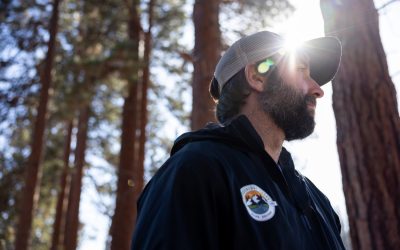
How guided tours help preserve nature
Jul 23, 2024
"People inherently want to protect things that they care about.” — Jared Garfield People are going to explore, and it...

Bottom-up solutions: The bike shop making Bend better
Jul 16, 2024
“I don't know if tourists actually have as much of an effect on the values of Bend as much as Bend has an effect on...

Learning from resident sentiment studies at OSU’s Sustainable Tourism Lab
Jun 25, 2024
“The goal, really, of sustainable tourism is to protect the destination for the next hundred, 200 years, so that...
You’ve found your partner for destination marketing
We work with the most innovative tourism boards in the world to create a vision for each of their destinations, solve business challenges and execute brilliant, integrated campaigns. The expertise we apply to that work is shared in the articles published here and in our DMO Matters newsletter.

Consent* Destination Think may store my data and contact me by email.*
Thank you! You will receive an email to confirm your subscription.
We value and respect your privacy. Click to read our privacy policy.
Tourism Marketing
Travel and tourism marketing is the systematic and coordinated execution of business policies by the both private or public and public sector tourism organizations operating at the local, regional, national, or international level to achieve the optimal satisfaction of the needs of identifiable tourist groups, and in doing so to achieve an appropriate return .
Travel agencies in the pre-deregulation, pre-liberalization, and pre-globalization era were often contended to take whatever business that come along this way and sold them on a straight commission basis without bothering about the extensive marketing. Moreover, their scope of the operation was small and was not much complex, sophisticated and competitive.
But today the travel companies are becoming larger, more sophisticated and more automated in management. Similarly, the clients/tourists are also becoming more trained, experienced, erudite and demanding higher quality services and packages.
Therefore, in this volatile travel business environment, marketing knowledge and skill are more necessary ingredients than the product knowledge and enthusiasm, for a travel agency’s long-term survival and growth. Thus, this has led to the use of tourism marketing which is recent phenomena.
History of Tourism Marketing
The ‘ marketing concept ‘ is not very old. I came into the scene in the 2nd half of the 20th century. In the beginning, it was linked with the number of closely associated factors for achieving volume sales.
The development of the marketing concept, in fact, is the outcome of political, technological, social, economic and business pressures. However, the importance of marketing within travel and tourism industry has been the level of economic and business growth throughout the 20th century, which has led to the improvement in living standards, an enlargement of the population and an increase in discretionary income and time.
These changes have also led to the construction of infrastructure, accommodation, transport , and other recreational facilities. Within a very short period, travel and tourism have become one of the most important and leading industry in the world.
Modern tourism marketing has evolved as a business reaction to changes in the Socio-Economic environment, with the most successful tourism companies or tourism bodies have demonstrated a keen sense of providing the right of organizational structure and products offer for the visitors/tourists.
Interestingly, the tourism companies have recognized the significance of key factors such as needs, wants, and satisfaction in the planning and designing of the tourism product. In the tourism industry, every tourist wants to be treated as a special client and any organization catering to this attitude of the tourist will naturally be head of other competitions.
Definitions of Tourism Marketing
According to Kotler, ” Marketing is a social and managerial process by which consumers obtain what they need and want through creating and exchanging product services and values with other .” He has emphasized more on wants, needs, satisfaction, demand, and marketers.
According to the British Chartered Institute of Marketing, ” It is the management process responsible for the identification, anticipating, assessing and satisfying the customer’s client’s requirements profitable .”
The modern marketing concept is not limited only to the identification and satisfaction of customers. It is a comprehensive process which encompasses research and analysis of society’s as well as consumer’s needs, asserts the company’s resources and marketplace and delivers the products/services to those whose experience provides a set of satisfactions which are preferable to those of the competitors.
Krippendorf defines tourism marketing,” as the systematic and coordinated execution of business policies by both private or public sector tourism organizations operated at the local, regional, national, or international level to achieve the optimal satisfaction of the needs of identifiable tourist groups, and in doing so to achieve an appropriate return .”
According to Paynter (1993), ” tour marketing is a systematic process consisting of marketing objective, strategies, schedules, marketing media, focused on the specific market segment and based on a substantial return on investment. ”
World Tourism Organisation (UNWTO) at Ottawa Seminar, has defined tourism marketing as,” a management philosophy which, in the light of tourist demand, makes it possible through research, forecasting and selection of tourism products/services from suppliers, on the line with organization’s purpose and tourist satisfaction .”
The following aspects can be identified from the above definitions:
- Tourism marketing is a thought-provoking process.
- Identification and selection of the target market.
- Positioning and product lifecycle is important.
- Future tourism marketing strategies.
- Innovative/proactive marketing.
Unique Features of Tourism Marketing
Tour package as a specialized product creates a number of significant considerations which need to be fully analyzed. The management of tour package cannot be divorced from the management of service and quality. Thus, the marketing of the tour package is different from other products because the tour package is a service product where instead of selling physical goods an intangible experience is sold.
An understanding of the complexity of the tourism product concept is an essential pre-requisite for effective tour package marketing in this context. The specific features of tourism marketing are:
- The demand for tour package is highly elastic and seasonal in nature.
- Tour package is a combination of various service ingredient.
- Designing, developing and marketing of tour package a number of intermediaries are involved. Bed experience at one level can spoil the entire image of the package as well as the tour operator .
- A tourist does not only by the tour package in advance because it is consumed and felt at the same time at a particular destination.
It is not possible to evaluate/demonstrate/sample the tour package in advance because it is consumed and felt at the same time at a particular destination.
Tour Package Marketing
A tour marketing plan is a structured guide for carrying out marketing operations. It provides a common structure and focuses on all the company’s management activities. The purposes of a marketing plan include:
- It provides a clear direction for marketing operations.
- It coordinates the resources of the organization in order to eliminate confusion and misunderstanding and achieving cooperation.
- Identifying different market segments.
- Setting targets/goals.
- Identifying the organization’s strengths and weaknesses.
- Corporate mission and goals.
- External and Internal Audit.
- Business situation analysis.
- Creating the objectives.
- Providing an effective marketing mix strategy.
- Monitoring the plan.
Thus, it has become imperative to discuss the tour marketing segment, tourist generating market, and tour marketing mix before developing a tour marketing plan.
Tour Market Segmentation
It involves a division of the prospective market into identifiable groups. The reasoning behind this is that a tour package can be sold more effectively if efforts are concentrated towards those groups which are most potential.
According to Middleton, “ Market segmentation is the process whereby producers organize their knowledge of customer groups and select for particular attention those whose needs and wants they are best able to meet their product .”
The main purpose of tour market segmentation in tourism marketing are:
- Segment the tourists generating markets.
- Identify the network of intermediaries.
- Identify the nature of demand for one’s product.
- Identify the prospective tourists.
An effective market strategy will determine exactly what the target market will be and to attempt to reach only those markets. The target market is that segment of a total potential market to which the tourist attraction would be most saleable.
Targets markets are defined geographically, demographically and so forth market segmentation must be employed in the marketing programmes to both the long-term strategies. Every tourism attraction can appeal to a multitude of market segments, and the market segment can overlap a great deal. The tour manager must look at market segments and determines which one offer the promising potential for his/her service.
Tour market segment further categories into the following types:
- Geographic Segment
- Demographic Segment
- Psychographic Segment
- Socio-Economic Segment
- Price Segment
Geographic Tourism Market Segmentation
This segment is based on the idea that customer needs differ according to geographic regions.
Demographic Segmentation
Under this segmentation, the tourism market is divided into various groups, keeping in view the demographic variables such as age, income, sex family size, occupation, education, religion etc.
Behavioral Segmentation
In this segmentation, prospective tourists are segmented on the basis of their knowledge, attitude, use or response to the tour product. Under this segmentation, the marketing strategies of a four-company include:
- User Status
- Loyalty Status
- Buyer Readiness Stages
Psychographic Segmentation
Under this, the tourists are divided into different group on the basis of their social status, lifestyles, and personality characteristics. For example, upper class, upper middle, lower classes, product preferences, adventure sports, etc.
Price Segmentation
Price ranges often come in handy in segmenting the tourist markets, such as
- Those who want to take a low priced vacation.
- Those who may take a moderately priced vacation.
Price ranges communicate to the tourists the quality expectation of a product along with the producer’s image. While determining the price of a tour package a tour planner must understand the paying capacity of the tourist.
Tour Marketing Mix
In the competitive tourism marketplace, a tour operator can be successful if it’s complete marketing mix offer matches what the tourist wants. It is planned and coordinated by marketers so that the input can be contributed in such a way that the company will be able to maximize demand and satisfaction of the tourists.
The concept of the tour marketing mix is equally relevant in the case of tourism products as it is in the case of other services and goods. Tour marketing manager must constantly search for the right marketing mix, the right combination of elements that will produce a profit. The marketing mix is composed of every factor that influences marketing efforts such as:
- BrandsPricing – In the Ratio of quality and value
- Product features
- Channels of distribution – both international and national
- Advertising
- Selling techniques
- Public relation
The fundamental starting point for the creation of a successful tour marketing mix to ensure that the target market is clearly defined. The target market is the focus of all marketing mix activities. Generally, the marketing mix constitutes four P’s . These four P’s are following as:
However, besides these four P’s in the tourism industry fifth P – People, Process, Physical evidence is also of most relevance.
Developing Tour Marketing Plan
The marketing of the package tour is materially different than the marketing of other tourism products. The reasoning behind this is that the type of tours offered by one tour company and another are different, and the marketing strategies also differ from company to company.
Each company has a wide range of tours and marketing strategies. No other travel and tourism industry component have such a wide range of specialization.
This fact should be recognized, that the effective and profitable marketing strategies are based on the tour marketing plan which is a complete ‘mechanism’ for the success of a tour company. The mechanism includes several components. These component and stages of making a tourism marketing plan are following as:
Developing a tour marketing plan
Marketing Budget
Plan Strategies
Prepare Plan Schedules
Decide Media Plan
Developing Advertising Plan
Developing Public Relation Plan
Preparing an Annual Sales Plan
Feedback and Evaluation Plan
The 7 Ps of Marketing for Tour and Activity Operators
Table of Content
Physical evidence.
The marketing mix is a term coined by Neil Borden in “ The Concept of the Marketing Mix ,” an article that was published in 1948. The term describes the combination of elements that make up the strategic marketing plan for a product.
In 1960, E. Jerome McCarthy, a marketer, introduced the four Ps classification of product, promotion, price, and place to refine the marketing mix concept. Three more Ps were later added to take into account the unique characteristics of the services market: physical evidence, people, and processes.
The service marketing mix is also referred to as an extended marketing mix that is an essential part of any service marketing plan. It assumes that the service is a product but adds 3 more Ps which are integral to optimum service delivery.
Let’s look at all 7 Ps.
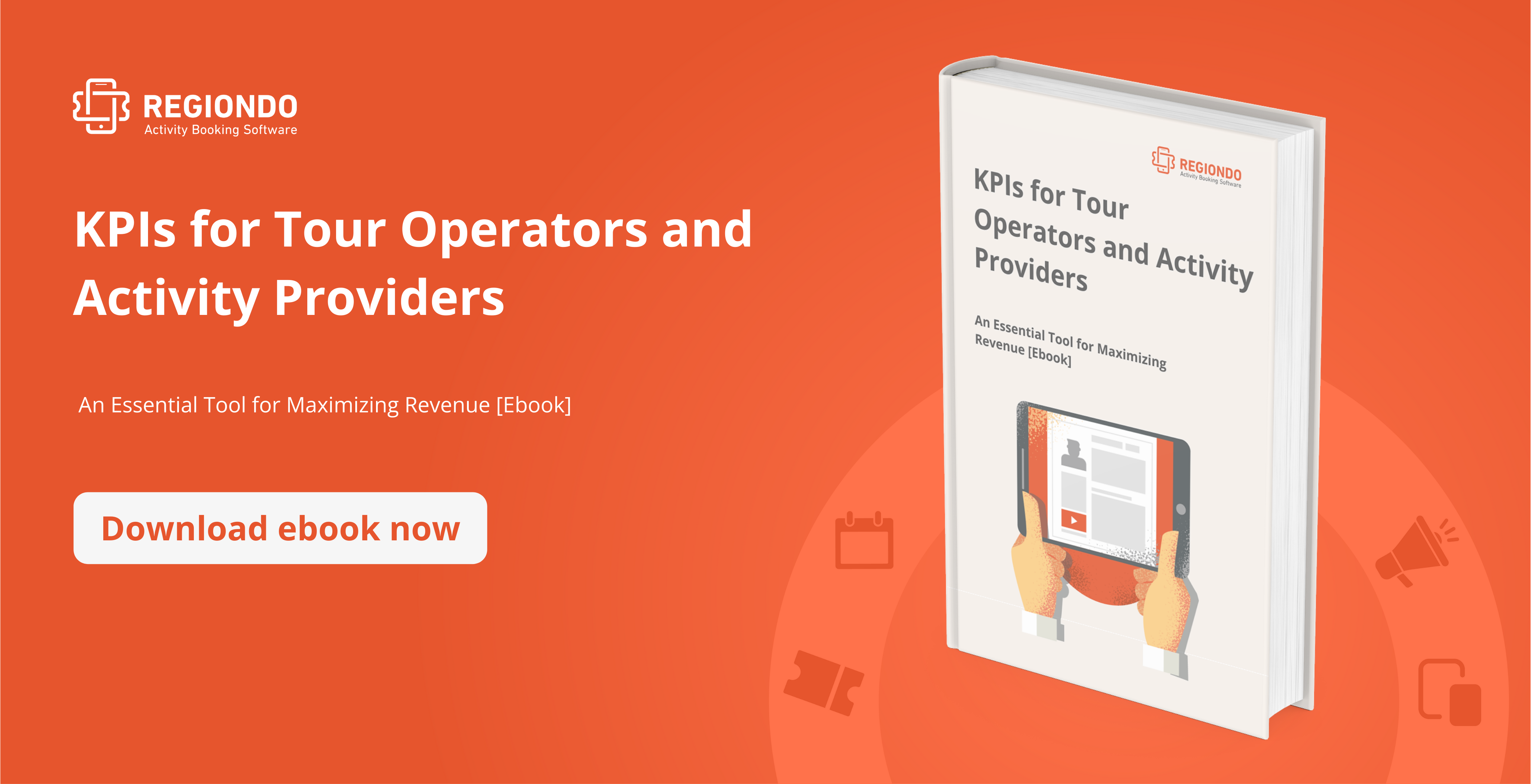
This P refers to a product that a consumer needs and wants to buy and is at the heart of the marketing mix. In the traditional sense, the product is tangible. However, typically, in the service industry, your product is not easy to examine and scrutinize – it is almost always intangible.
Your service product thus needs to be designed carefully. What most successful tour and activity operators do is conduct service blueprinting in order to properly define their services.
This P involves working out a price for your business that is profitable, attractive to customers, and competitive in your niche. Pricing also depends on multiple other factors like:
- The geographic location of the destination.
- Seasonality, which is arguably the most important factor in pricing.
- Competitor pricing.
- Government regulations.
The travel and tourism industry responds to its highly complex pricing at two levels. The first one deals with marketing strategy which consists of product positioning, long term returns on investments, cost-effectiveness, etc.
The second one pertains to the marketing operations or strategies where the prices are manipulated to correspond with demand and competition.
All in all, your final pricing needs to take into consideration labor, material, and overhead costs. Adding a profit mark-up to that gives you your final service price. You could also charge extra for customer-friendly options like shuttle services.
Promotion is how customers find out about your tour operation business. It is the different ways you communicate, sell, and describe your services. So when you create your promotional messages, you need to use terms that highlight the benefits of your services as opposed to its features.
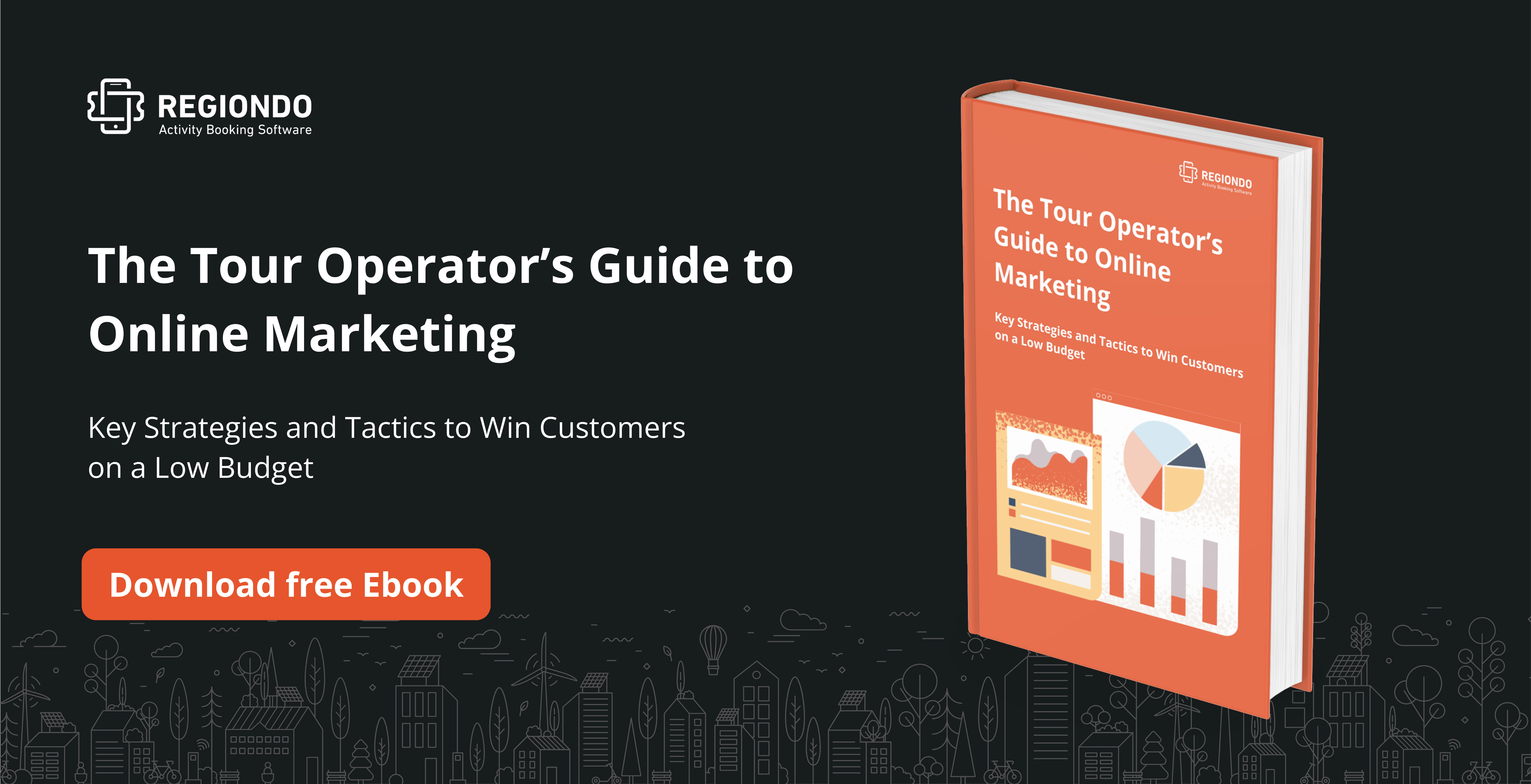
Advertising
You need to advertise to give important information to prospective tourists. The goal is to create awareness of your tour and activity offers by using visual scenes of events, venues, and activities as your main tools. For example, you can advertise visuals of beautiful cathedrals, white water rafting, relaxing massages, etc.
Publicity is another major marketing tool. Building relationships with media people will help project a positive image of your tour operation to your prospective customers. Your publicity strategy could include regular stories and photos in newspapers, travel publications, blogs, social media, etc.
Sales Promotion
Sales promotions of short-term activities in order to boost sales during peak demand seasons are also a good way for you to gain market share. Promotions are particularly helpful if you are launching a new offer. The main tools could be seasonal offers or special sales (e.g. for activities during the week or during the low season).
Word-Of-Mouth
Word-of-mouth is arguably one of the most important and most effective promotional tools. However, to succeed in using it, you need to provide quality services. You also need to keep an eye out for opinion leaders or influencers; and take care of them so that they can promote your service via word of mouth. Nowadays the leader of online word-of-mouth is definitely TripAdvisor. Check out this article to improve your TripAdvisor ranking quickly .
Place is where your customers buy your service and how you enable them to view and evaluate it. You should think about how to best reach your customer base, how they will consume your service, and when they make their purchasing decision.
Since your services are largely intangible, your best bet may be to sell exclusively online . The good news is that you can use various distribution strategies that reflect your objectives.
The main problem with services is that the customer cannot test it out before purchasing them – they cannot be produced until they are needed. It is thus important for you to offer other means by which a potential customer can make an informed decision on the value and quality of your service without making an actual commitment to buy it.
You can highlight testimonials from previous customers in brochures and make use of images. If you operate from a physical office, you should make sure that the space accurately exhibits the nature or branding of your business in the design and layout of the space.
Tourist attractions can be expensive for most customers so it is important that you make it more tangible for them by highlighting tangible items like the canoe they will sit in, the Segway they will use, route maps, etc. in your marketing materials.
Brochures, in particular, are important in showing how different elements of your offerings are well thought out. So you should include all the relevant information that a customer needs to know in order to gauge value.
The service industry relies heavily on professionalism and customer service. In services marketing, customers have difficulty differentiating between the person they engage with and the actual service. That shows that customer care is absolutely critical for your business. So any employee that has a customer-facing role must be properly trained for the position.
A lot of tour operators are actively focused on training their staff in interpersonal skills, customer service as well as customer satisfaction. They also need to be trained to have extensive knowledge of your product.
Want to know how to recruit the best tour guides? Read our blog article on how to differentiate between good and bad tour guides.
This refers to the different stages of a process to deliver a service to a customer. Services often need to be booked in advance in order to deliver the service to customer expectations and requirements; unlike tangible goods which are kept in stock and ready for purchase at any time.
As a tour and activity operator, you need to ensure that all stages of the processes preceding delivery of your service are planned and executed as well as possible.
The typical operation process for most tour and activity operators is as follows:
Tour information: The information regarding travel must be provided at a convenient location where a prospective customer can seek information about their tour.
Preparing itineraries: This is the series of operations that are required to plan a tour.
Liaising with service providers: Before travel is sold to a customer, contracts have to be in place with the providers of various services including transportation companies, hotels, coaches for sightseeing, etc.
Planning and costing tours: When the contracts and arrangements are finalized, then you can start planning and costing the tour. That will depend on the tour selected as well as individual requirements.
Ticketing: This typically involves online reservation systems and booking software.
That’s the marketing mix for tour and activity operators. Use this as a guide in setting up your marketing and sales strategies in order to maximize your efforts in those areas.

You might also like:
- 10 Ways To Get Free Advertising for Tours and Activities
- Dynamic Pricing: The Do’s and Don’ts For Activity Providers
- How to Effectively Combine a Multi-channel Strategy and Direct Sales
- How to Boost Your Sales with Add-ons and Merchandise
Related Articles

- Tips & tricks
Stay updated with Regiondo by signing up for our Newsletter

Get a personalized demo or create your free account now
Take your business to the next level with Regiondo - it's free to get started and you don't need a credit card.
Marketing91
What is Tourism Marketing? 15 Strategies in 2023
March 22, 2023 | By Hitesh Bhasin | Filed Under: Marketing
From hotels and other types of accommodation to car rental services, airlines , restaurants, entertainment spots, and travel agents – tourism marketing encompasses a wide range of advertising and marketing strategies often used by companies in the tourism and travel industry themselves. All these various marketing efforts are put together under one collective name – Tourism Marketing!
Tourism marketing is an essential tool for a business to ensure they are standing apart from its competitors, garnering customers, and creating brand recognition. Nowadays, various digital marketing platforms such as websites, online ads, email marketing campaigns , and social media marketing outlets have become vital components of modern tourism marketing initiatives for businesses.
Table of Contents
What is Tourism Marketing?
Tourism marketing is a type of marketing used by businesses operating in the travel and tourism industry to attract tourists to a business name or particular location which can be a state, a city, a particular heritage site or tourist destination spot, a hotel, or a convention center anything.
Achieving success in the travel and tourism industry requires thoughtful Tourism Marketing campaigns that are designed to generate brand awareness , create both, reach the most target audience or potential customers, drive traffic, foster loyalty among existing clients, and create a captivating customer experience . By utilizing these strategies, businesses can effectively engage with travelers while generating more sales opportunities.
Tourism Marketing has been profoundly impacted in recent years by digital development, as well as changes in consumer attitudes and desires. Crafting successful Tourism marketing messages today entails taking advantage of social media platforms, featuring user generated content, leveraging online reviews and search engines to your benefit, collaborating with influencers to drive traffic and expand reach, and experimenting with various channels for targeted messaging to attract travelers and optimize their customer journey in a way to convert them into loyal customers.
Why is Tourism Marketing Important?
To make a tourism business thrive, savvy marketing is an absolute must. By staying up-to-date with current trends and launching impactful campaigns, businesses can boost the recognition of their brand, gain customer loyalty and attract travellers. Moreover, tourism marketing holds promise for contributing to the economic growth of the region by driving tourists towards local enterprises.
The tourism industry is one of the biggest in the world and therefore highly competitive. To succeed, businesses must differentiate themselves from their competitors by promoting and advertising what makes them unique, showcasing why they’re the best option for tourists, and advertising and highlighting any special features that set them apart.
To allow businesses to gain a competitive advantage , marketing is essential. Many of the top tourism marketing approaches concentrate on highlighting a business’ unique selling point and broadcasting it effectively. Moreover, marketers must keep abreast with current trends to generate an effective promotional mix and deploy the most viable methods for disseminating their message across all channels.
Understanding the concept of Tourism Marketing
Tourism marketing is associated with most businesses, with marketing strategies in the field of tourism. Today there are many countries in the world, where the tourism industry plays a major role in economic development , enhancing their GDP.
In such cases, tourism and digital marketing become important things. Many of the places are generally the hotspot for tourists like the Taj Mahal in India. Now places like these are considered the perfect areas where one can boost tourism through digital marketing.
The places which are more likely to be the major spots for attracting tourists are the places where tourism marketing flourishes the most. Now tourism marketing is all about applying several marketing techniques and strategies to create and boost the tourism industry of that place.
For successful tourism marketing to take place, the thing that is required the most is that the brands should speak for themselves in such a way that makes sense that their voices can be heard in the targeted markets. This way they will be able to generate the cleanest successfully. Also, they need to be really careful in providing services to clients.
This is because if the customers are happy with the services chances they will spread the word and this may bring them more customers. In the case of tourism marketing, it becomes easy to find the right audiences and create content to draw the attention of the targeted customers to the website by providing encouraging content. Thus strategic planning , content marketing, and branding is the key to effective tourism marketing.
With it being carried out by keeping these two points in mind, chances are that the company that is involved in tourism marketing will be able to gain the advantage over their existing customers in no time and become a monopoly in the tourism industry.
What are the different ways in which Tourism Marketing Can Be Done in 2023?
Now various methods are applied for tourism marketing to flourish. Below are some of the important ways in which the tourism marking of any place is given a boost.
1) Location marketing
In this type of marketing strategy , the main focus of tourism marketing is one bringing people’s attention to a specific location. In this strategy , no recommendations are made with respect to a particular site or any accommodation. Now some locations are already so popular all over the world that tourism marketers don’t have to make many efforts to attract their attention to such places.
All they need to do to attract customers is remind them of such locations and chances are that the consumer can easily get convinced to spend money and visit any such place. For example, Las Vegas is popular for its undying charm and full of life kind of prospects.
Now there s also a popular slogan related to Las Vegas which is ‘What happens in Vegas, stays in Vegas’. This slogan has gained worldwide popularity and almost everyone wants to visit Las Vegas at least once.
So here the tourism marketers have to simply remind people of how amazing this city is and what are the different ways in which they can have the time of their lives here. Another example that can be taken in Florida.
They use a more ‘benefit-oriented’ approach. Their slogan and website are ‘The Sunshine State’. This way they are presenting their state with a joyous and charming climate and as a perfect place for beach and football lovers. Also with their slogan and website, they are successfully able to present their state as an ideal ‘summer vacation’ destination and are definitely a dream for many to visit this place.
Thus location marketing is one of the simplest forms of tourism marketing in which without even putting much effort, with the brand value and the popularity of some specific location, the customers can be attracted.
2) Activity marketing
Now, this type of tourism is carried out keeping in mind both the location and the activities that are performed in such places. This type of tourism marketing strategy usually keeps in mind travelers who are adventure lovers or activity freaks.
There are many other sites and locations all over the world that are famous for some specific activities. Like Alaska is famous for snowboarding, Yellowstone national park is famous for thrilling activities like hiking, and camping and is a perfect place for all nature lovers, similarly, there is ‘Colonial Williamsburg’ which attracts all history lovers.
Thus depending on the target audience and the type of activity that a particular place is famous for, tourism marketing can be carried out. Some people may be adventure lovers, some people may be looking for art and culture some people love hunting, depending upon their area of expertise and interest, the tourism markers can segment the groups of potential visitors and customers and approach them.
Thus activity marketing is a form of tourism making and social media marketing that emphasizes the booking process and bringing the attention of a customer to particular places on the basis of the activities that are performed there.
3) Corporate marketing
This is quite an interesting approach to tourism marketing. Now it has been found that a large number of people working in corporate sectors have to travel to different places to attend a conference or a meeting.
Then according to research, it was found these locations were ideal for tourists, and a number of people came to attend those places. Also, they brought their families and their loved ones as well. Now considering these scenarios’ latest trends in mind, corporate influencer marketing can contribute a lot to tourism marketing as it has significant potential.
Here the tourism marketers take advantage of the fact that by planning the business meeting in touristy places, people come in large numbers thus they can make a lot of profit out of it.
What are the four basic pillars of Tourism Marketing?
The foundation of tourism marketing stands firmly on four of its important pillars which are the product , the price, the place, email marketing, and the promotion.
Let us understand each of these separately as to how they contribute to tourism marketing!
Marketing Mix of Tourism
1) product in tourism marketing.
One of the most important aspects of the tourism marketing strategy is to determine the effect of the selling benefits and the other types of benefits that are re-obtained by competing with their rivals in the same market .
Tourism marketers need to focus more on such destinations that provide both business advantages to travel brands and pleasure to their customers. These pleasures depend on several factors like the ease of traveling, facilities of the sites and the hotels, the nightlife of that place, activities offered, and the overall culture of that place.
Thus by considering these factors, tourism marketers will understand the areas that have to focus more on, so that marketing can be done effectively.
2) Price in Tourism Marketing
The price point is yet another important aspect of tourism marketing. Now many people avoid traveling due to money-related issues. And this is where tourism marketing comes in to save the day. Today so many mobile apps have been developed, on which if a person books a hotel r a transport like a flight or a train, they get discounts. This attracts a lot of customers.
Along with the free referral marketing, they also try to give value-added services to their customers. Some hotels also offer free shuttle services to their visitors. Also depending on whether it is a high season or an offseason, the prices are altered.
3) Place in Tourism Marketing
Now for tourism marketing to earn a profit, deciding the location where they want to perform the marketing can play a key role in how far they can go. The place refers to the area where the products and services can be distributed.
Now in tourism and destination marketing, the location and the destination marketers offer their products and services to their customers through travel agents, tour operators, inside sales teas, etc. The distribution of their products and services to visitors can be done through catalogs, online, sites, mobile devices, websites, stores, etc.
4) Promotion
In this numerous different strategies and technologies are used for the promotion of any specific area or tourist destination. In fact, trade magazines and meeting planners are also efficient ways for promotion purposes.
These often come with many other forms of discount coupons, brochures, etc. also they try their target customers to come across the ads that pop up on the website to make them aware of the various tourist places.
15 Tourism Marketing Strategies in 2023
1. prioritising hygiene and safety via marketing communication.
Tourism marketers must now prioritize safety and hygiene to give their customers peace of mind when they travel. By highlighting the protocols that are being taken, tourists can rest assured knowing they will be protected while visiting.
2. Developing Loyalty Programmes
Loyalty programs are the ideal way to demonstrate your appreciation for existing customers and stimulate repeated patronage. Tourism marketers should construct loyalty programs that will not only retain existing customers but also appeal to fresh audiences.
3. Capitalising on Voice Search
In the age of voice search, it is essential for tourism marketers to create content that can be quickly found and accessed. Optimizing your site and content for this new technology will bolster your site for visibility and success in the long term.
4. Facilitating User-Generated Content
User-generated content, such as ratings and reviews on social media, is critical in helping customers make informed decisions. User-generated social media content is one of the key tourism marketing trends.
5. Deploying Artificial Intelligence:
AI technology is a valuable asset for Tourism marketers, allowing them to track customer behavior and create personalized brand experiences tailored to each individual. This can help customers find the brand information they need quicker and more easily than ever before.
6. Not Neglect Review Marketing
Reviews and ratings are a critical resource for Tourism companies, making them an invaluable asset in swaying potential customer decisions. Any Tourism marketer must recognize the importance of reviews if they wish to stay competitive.
7. Enhancing the Guest Experience & Satisfaction Through Chatbots
Chatbots can be a vital tool in creating an effortless, tailored experience for all customers. Chatbot technology should be a top priority for the hospitality and tourism industry to provide quick customer service and support, as well as respond promptly to any inquiries.
8. Investing in Remarketing Efforts
Maximizing your Tourism business’ potential by tapping into already engaged customers is a surefire way of increasing sales. Leverage the power of remarketing to maximize your potential and gain more qualified leads.
9. Utilising Augmented Reality Technology
Augmented reality provides the ideal platform for tourism businesses to build mesmerizing and unforgettable experiences for their customers.
10. Prioritising Personalisation
Customization is a crucial element of this form of marketing. By personalizing content and messages to the target audience’s wants and needs, Tourism marketers can engineer and create an experience that will ensure positive word-of-mouth publicity for their business or brand.
11. Exploring Metaverse
The metaverse is becoming more and more popular with tourism companies, as it allows them to give their customers an unparalleled, immersive experience.
12. Using NFTs
Non-fungible tokens, or NFTs, are quickly becoming a widely recognized trend. Tourism companies can harness this technology to propel their marketing campaigns and draw in more visitors.
13. Promoting Virtual Reality (VR) Tours
Allow your customers to explore new destinations without even having to leave their homes – with VR tours, the possibilities are endless!
14. Focusing on the Customer Experience
Crafting an exceptional customer experience should be the primary focus of any Tourism promotional strategy . Optimizing customer experiences on all marketing channels is crucial.
15. Embracing content and influencer marketing
Content and influencer marketing are essential building blocks of any successful tourism strategy. It helps in optimizing the presence of a travel business in the search engine.
Thus, tourism and travel agency marketing are one of the branches of marketing that deal with the tourism and travel industry only.
It is essential to carry out efficient tourism marketing, as one can make a lot of money through this because there are so many people in this world who love traveling, and this can help the tourism marketing industry to flourish their business.
Liked this post? Check out the complete series on Marketing
Related posts:
- 15 Promotional Strategies to Use in 2023 (Types, Steps & Role in Marketing)
- What is B2B Marketing? A Comprehensive Guide with Strategies, Examples & Trends in 2024
- Database Marketing – Definition, Types, Importance and Strategies
- One-to-one marketing: Definition, Examples and Strategies
- What Is Affinity Marketing? Definition and Strategies for Success (Updated 2024)
- What is Consumer Marketing? Definition, Strategies & Example
- What is Offline Marketing? Strategies and Advantages
- Trade Marketing: Definition, Strategies, Advantages, Disadvantages
- Luxury Brand Marketing – Concept and Strategies
- Healthcare Marketing – Definition, Strategies and Challenges
About Hitesh Bhasin
Hitesh Bhasin is the CEO of Marketing91 and has over a decade of experience in the marketing field. He is an accomplished author of thousands of insightful articles, including in-depth analyses of brands and companies. Holding an MBA in Marketing, Hitesh manages several offline ventures, where he applies all the concepts of Marketing that he writes about.
All Knowledge Banks (Hub Pages)
- Marketing Hub
- Management Hub
- Marketing Strategy
- Advertising Hub
- Branding Hub
- Market Research
- Small Business Marketing
- Sales and Selling
- Marketing Careers
- Internet Marketing
- Business Model of Brands
- Marketing Mix of Brands
- Brand Competitors
- Strategy of Brands
- SWOT of Brands
- Customer Management
- Top 10 Lists
This was a great article! Now I’m interested in a career in tourism marketing. How do I start? I already write travel content/copywriting blogs for an agency. Where would I go from there?
this article really helped me in conducting research on tourism. Thank you very much
This article helped me alot on my academic research
Hello,the article is highly assisting and I am seriously having interest in studying Tourism Marketing.
This information was very helpful
hey! This is a good and interesting article about tourism marketing. I am a second degree student in tourism business administration,the program is all about tourism as a business perspective.if you can possible,please post such relevant articles via email address that i have attached below the space provided.
Leave a Reply Cancel reply
Your email address will not be published. Required fields are marked *
- About Marketing91
- Marketing91 Team
- Privacy Policy
- Cookie Policy
- Terms of Use
- Editorial Policy
WE WRITE ON
- Digital Marketing
- Human Resources
- Operations Management
- Marketing News
- Marketing mix's
- Competitors

- Tourism Management Tutorial
- Tourism Management - Home
- Tourism Basics
- Tourism Management - Introduction
- Tourism Management - Types
- Tourism Management - Terminology
- Tourism Management - Factors
- Tourism Management - Demand
- Tourism Mngmt - Motivation Factors
- Maslow's Pyramid of Motivation
- Consumer Behavior in Tourism
- Tourism Management - Plog's Model
- About Tourism Destinations
- Destination Awareness
- Tourism Management - Milieus
- Tourism Management Destination
- Tools for Destination Management
- Managing Tourism
- Tourism Management - Supply
- Tourism Functional Management
- Business Departments
- Market Segmentation
- Tourism Mngmt - Marketing Mix
- Tourism Mngmt - Products & Services
- Developing Product
- Product Development Phases
- Tourism Impacts, Trends, & Future
- Tourism Management - Impacts
- Tourism Mngmt - Trends & Future
- Tourism Management Resources
- Tourism Management - Quick Guide
- Tourism Management - Resources
- Tourism Management - Discussion
- Selected Reading
- UPSC IAS Exams Notes
- Developer's Best Practices
- Questions and Answers
- Effective Resume Writing
- HR Interview Questions
- Computer Glossary
Tourism Management - Marketing Mix
Tourism marketing is different because the customer purchases a series of services. While marketing a tourism product, the sales or marketing person insists on the positive facets of the following four components −
The tourism being a service sold to the customers, tourist experience is the product, which is intangible, and non-storable. The quality of the tourist experience as a product is directly proportional to the quality of the service a tourism business provides. The product must be designed to highlight its features and to satisfy the tourist’s needs. If the product is branded, the customers find it more reliable.
Determining the price of the product requires consideration of three key factors −
Operating costs − Operating costs include both fixed and variable costs. Fixed costs remain same regardless of the sales which involve building, insurance, and equipment costs. Variable costs include costs for wages, gas, electricity, cleaning, maintenance, repairing, materials used in production, office stationery, linen, food, petrol, machinery, uniforms, bank fees, marketing research expenses, and expenses for advertisements, promotions, brochures, and conducting consumer or trade events.
Profit Margins − This is determined by comparing the competitors’ offers and the own product offers. Profit margins are set without compromising the competitive advantage.
Commissions of Intermediaries − Working with intermediaries incurs commissions. Commissions are the fees paid to the intermediaries to distribute and sell your product.
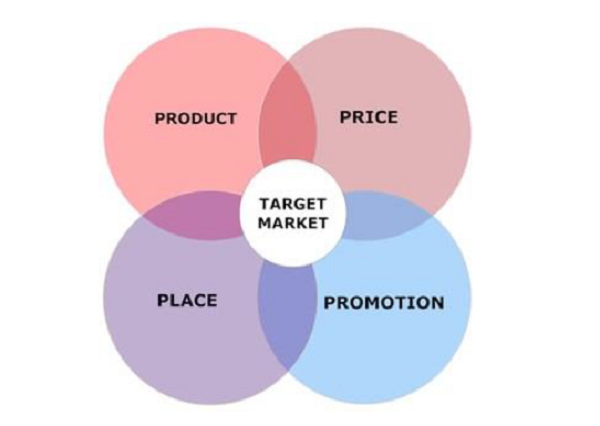
Tourism Product Pricing Policies
Commonly followed pricing policies include −
Discount Pricing − This strategy calls for reductions to a basic Price of product or services. It is a form of sales promotion which at times proves to be rewarding for the customers.
Variable Pricing − pricing varies with respect to the variation in features of a product.
Loss Leader Pricing − It is selling few products at prices lower than the actual prices. It helps to settle the loss by attracting customers to buy more number of products.
Promotional Pricing − It is selling a product for free with another product with the objective of promoting the free product. Customer interest is generated to use the free product thereby increasing the sale.
The place is where the tourists visit and stay. The potential of a tourist destination lies in its attractiveness or aesthetic value, accessibility, and the facilities it provides to the tourists. The tourists also seek a place highly for the activities it offers, the amenities and skilled workforce it provides, and its location.
Promotion is intended to inform the customers about the products, create an image about the product, and position the products in the market. There are various effective ways of promoting the tourism products −
Advertising the products on television commercials, newspapers, radio stations, and websites.
Distributing promotional material such as diaries, brochures, keychains, wallets, purses, water bottles, pens, or any small gift item designed for promoting the product.
Setting Point of Sale (POS) displays at various places such as retail stores, shops, malls, or petrol pumps.
Promoting tourism products in local fairs.
Promoting the products with their attractive features on the website of the tourism enterprise.
Conducting programs of sponsorships, or promoting products by offering them as incentives.
Fueling growth through moments of customer delight
Once, at a Ritz Carlton resort, a server noticed a family searching for a coquí frog hidden in the vegetation. 1 A small frog endemic to Puerto Rico. Inspired to create a memorable experience, he orchestrated a surprise: when the family returned to their room after dinner, they found a chocolate lily pad with two chocolate coquí frogs perched on it and a note from “Coquí” himself waiting on the bed. The family was delighted by this thoughtful, fun gesture.
This story raises questions about the potential of delight in customer engagement. Can delight be measured, managed, and institutionally delivered? What is the economic payoff for businesses?
But, to start with delight itself: delight occurs at the intersection of customer joy and surprise. In the past, customer delight was restricted to elite brands due to perceived high costs. However, thanks to technological advancements and a shift toward customer-centric practices, companies now have smarter and more effective methods to deliver delightful experiences that yield long-term returns.
Our Growth, Marketing & Sales Practice has done extensive research to uncover the profound impact of customer delight on business success. Surveying 25,000 customers across diverse industries such as tourism, insurance, and banking, we have discovered compelling evidence: delight not only cultivates loyalty and repurchase but also fuels revenue growth through cross-selling and up-selling opportunities.
In this article, we cover the key findings of the survey, which reveal a clear advantage for companies that prioritize delight. Our research revealed that they outperform their competitors in key metrics such as net promoter score (NPS), revenue, and total return to shareholders (TRS). By prioritizing customer delight and implementing smart, sustainable strategies, companies can unlock new frontiers of service and drive lasting returns without incurring prohibitive expenses.
To have a successful customer interaction, however, both the rational and emotional aspects of customer experience must be addressed. For example, if you are taking a ride in a cab, you expect to reach your destination. If you arrive before the anticipated time, chances are that you will be satisfied with the experience. Meeting customer expectations and satisfaction continues to be mission-critical—they are both vital elements in customer experience before delight can happen—but to elevate the experience, delight is needed; delight has the power to amplify retention, referrals, and revenue of satisfied customers.
Delight: The sweet nexus between joy and surprise
Before exploring the impact of delight, it is important to understand the science behind it. Delight is a deep, emotional reaction characterized by joy and surprise, stemming from an experience that provides something unexpected and extraordinary, transcending daily life. 2 Robert Plutchik, Theory of Emotion , Academic Press, New York, 1980. Delight occurs only at the intersection of joy and surprise (Exhibit 1).
Surprise unfolds in four stages. First, we freeze, stunned by the unexpected, and we pause. Second, we try to comprehend the reason for the surprise. Third, we shift; the surprise alters our perspective as we uncover something new. Fourth, we experience joy and are so delighted that we feel compelled to tell others about our encounter.
Although surprise tends to be short-lived, it has a disproportionate impact on how well we remember it—the hippocampus, the part of the brain that stores information, is activated when people experience surprise. As a result, our brains retain more details about this event than in an average moment. 3 Vanessa van Edwards, “The ultimate list of emotions and how to control your emotions,” Science of the People, August 2023. Joy, conversely, is the more intuitive, happy, emotional reaction. Combine it with surprise and the magical moment of delight emerges.
And, delight is distinct from satisfaction. Satisfaction is a rational, cognitive response to a service performance or experience based on previously held expectations. If a company just about meets a customer’s expectations, the person is neutral or has no reaction. When expectations are exceeded, the customer is satisfied. And, when something unexpected happens on top of satisfaction, the customer becomes delighted.
Delight your customers and they’ll keep coming back for more
Advocates of customer delight have recognized its potential to forge strong emotional connections and drive desirable business outcomes for a company, such as referrals, retention, and revenue, which all can lead to loyalty (Exhibit 2).
Our customer delight research showed consistent and significant unlocks across sectors, geographies, and product types.
Referrals: Our research revealed an impact on referrals, which reinforces the notion that satisfaction is a vital foundation of customer experience. When customers are not satisfied, delighting them is helpful but does not, and cannot, help fully recover the loss. However, our findings also showed that satisfied customers who experienced delight, versus those who didn’t, had a significantly higher intention to recommend the brand to others, implying that delight is a great amplifier of loyalty.
The NPS amplification impact of delight on satisfied customers was significant across different sectors—28 points in tourism, 18 in insurance, and 15 in banking (Exhibit 3).
Retention: The impact of delight on reusage intentions was 25 percentage points and is evident across other industries. Customers who had a distinct memory of delight during their travel experiences were approximately 19 percentage points more likely to revisit the destination. We witnessed 25 percentage points in banking with regard to reusage intentions (Exhibit 4).
Revenue: There were clear links to value for those who were both satisfied and delighted. Customers who were satisfied and experienced delight tended to cross-sell (buy additional products), up-sell (buy products at a higher price) and were less prone to down-sell (downgrade a product when the price is increased). For example, we noticed 30 percentage points in banking, 11 percentage points in insurance, and 15 percentage points in electric power and natural gas (EPNG) in cross-sell. Given that these activities are directly linked to value, it was possible to calculate an approximate link to the value that moments of delight created.
Our research showed that, in insurance, if companies delighted a significant portion of their customers who were already satisfied, this could lead to additional revenue of 8 to 12 percent—translating into several billion euros a year. More broadly, we noticed that companies differentiating basis customer experience also witnessed their revenue growth double .
Uncover the drivers of delight
We have seen that delight can deliver significant value—so what are its biggest drivers? Through our research, we developed a large database of moments of delight mentioned by customers and analyzed them to understand the type of experiences, triggers, and longitudinal impact of different types of delight drivers. At the most basic level, we found that the majority of delight drivers falls into two categories—service excellence (intangibles) and product innovation. Within these areas, wherever expectations are high, the bar for delight becomes even higher.
Service excellence
We found that genuine, authentic human interactions that lead to personal connections usually result in significant customer delight. Courtesy and kindness create a break from transactional interactions, sparking moments of delight. Take, for example, a barista who learned American Sign Language to be able to deliver a consistent experience to a differently abled customer. Or, imagine if a cab driver had a preset “menu” to offer customers (for example, essential items such as beverages and snacks, or backseat gaming) that would lead to a positive emotional impact, causing delight.
And, as many basic interactions now move to digital, self-service channels, the remaining employee or frontline interactions become even more important—they form connections with customers in more authentic ways and bring the human touch to experiences.
As an example, take a customer who, when referring to his interaction with a call center employee, said, “The agent talked about their personal life, we laughed together and had a wonderful conversation.” This interaction created a personal connection for him.
In another example, a US-based online pet retailer received a call from a grieving customer who wanted to return an unopened bag of dog food as her pet had died. The rep didn’t just give the customer a full refund but suggested she donate the food to nearby shelter, and sent her a personalized note of condolence.
In these types of simple and inexpensive ways, companies can focus on creating environments and playbooks that promote personal interactions between customers and employees. In fact, as digital and cognitive assistants become more human-like, perhaps it is even possible that some of these delightful interactions may be delivered more authentically by digital agents in the future.
Proactive service recovery is also a strong driver of surprise. Many hospitality companies know that guests who experience spectacular service recovery after facing an issue often rate their stays even higher than satisfied customers who have not encountered problems during their stays.
This learning is applicable to other sectors as well, such as banking or insurance. When a service break occurs, most customers have a rational level expectation of what recovery should look like. But brands that significantly supersede that expectation of recovery, or do it in unexpected ways, can generate surprise and create promoters out of detractors.
Product innovation
Tangibles beyond people-driven moments strongly contribute to delight. Unexpected sensory experiences—especially multimodal ones—trigger joy and surprise, while participation and personal indulgence amplify this effect. For example, airlines enhance the first-class customer experience by engaging all five senses with delicious food, signature perfumes, aesthetically pleasing cabins, relaxing music, and comfortable furnishings.
Innovative and novel products or features can also lead to delight—such as an insurer that disrupted the industry when it paid out a claim within seconds.
Personalized tokens of appreciation can help companies stand out from the competition, specifically for customers with high expectations. From our research in insurance, customer verbatims revealed drivers of delight—for instance, one customer told us, “The representative came to our appointment with flowers for me and a bottle of wine for my husband as a thank you for our years of loyalty.”
It is important to note, however, that gifting done at scale can add significant cost to a company, which is why driving delight has typically been regarded as expensive and unsustainable by some companies. Yet, as seen through our research, when done selectively with high-value customers to maximize personalized customer value, it can be powerful. And, a simple upgrade to an existing product may not be joyful for most people but may deliver exceptional joy to some—making it vital to understand each customer’s core emotional and functional needs and deliver against them to create a sense of ambassadorship.
Three ways to stoke the delight engine
To be able to constantly drive positive value from delight, companies need to establish a structured and sustainable delight engine—one with approaches that continually measure, design, and deliver delight at the right moment to the right person to generate positive returns. Through our research, we have identified three key levers that companies could use to create an effective delight engine.
Measure delight and its value
Companies first need to understand the moments of delight that resonate with various customer segments. Here, a mix of qualitative and quantitative research can help uncover what causes delight in a particular industry and along which customer journey. A robust delight measurement system that captures the intensity of joy and surprise across the customer journey can help qualify moments of delight. This further needs to be paired with incremental value measurement driven by delight across the journey, as well as the longevity of the incremental value received through various types of delight interventions.
This method can ensure that investment is focused in areas with the highest return potential. In our research, we found that a single moment of delight at the correct time in the right customer journey can increase loyalty and intent to spend for up to six to nine months after the delight experience.
By tracking the impact of delight interventions on key business outcomes such as loyalty, cross-sell, up-sell, and retention, companies can continually refine their delight interventions to create exceptional customer experiences and value.
Match design to experience
Designing unforgettable experiences isn’t solely a creative endeavor—it requires a design methodology that focuses on optimizing surprise and joy. Designing emotion-provoking moments for each target segment calls for a design methodology that has a deep understanding of customer emotions and triggers, followed by the curation, testing, and refinement of delight interventions that induce those emotions. These interventions can be significant, such as differentiating product features, or be micro-interventions such as a handwritten apology or appreciation note.
The design of delightful customer experiences could be embedded in a company’s capability building and culture change initiatives. As those who interact most with customers, frontliners could be empowered to embrace the change—particularly as digital transactions increase and customers look for more meaningful human interactions.
Disney, for example, is well known for consistently delighting people of all ages and under varying circumstances. It instills in guests a sense of joy and surprise through personalized encounters with Disney characters. What guests perceive as random and unexpected experiences of delight are, in fact, carefully choreographed by Disney. 4 Lauren A. Newell, “Happiness at the house of the mouse: How Disney negotiates to create ‘the happiest place on earth,’” SSRN, July 1, 2012. Take what is known as their “water art,” where they create magic while cleaning: this is a special kind of experience devised by the custodial team in which an employee, using just a broom and a bucket of water, draws favorite Disney and Pixar characters on the ground. Disney further embeds capabilities in its frontline staff for meaningful recovery during difficult moments.
Deliver personalized delight micro-interventions through data and AI
Companies can develop their own delight repositories—with major- as well as micro-interventions—that can be tapped into when needed to trigger the appropriate intervention at the correct moment for a specific individual. As we have shared previously in our Experience DNA article, the future of customer experience is holistic, predictive, and proactive, and this applies to delight, too. We believe that customer insights, in the age of big data, are a key reason why delight no longer needs to be an expensive proposition. In fact, data can be used to hyperpersonalize and prioritize delight-inducing micro-interventions for each customer, and can be delivered in a way that is sustainable, maximizing immediate ROI and customer lifetime value.
After years of considering customer delight to be an expensive option, companies now have a real opportunity to reconsider and unlock its benefits, while being prudent and effective. No longer do they need to have customers who are solely satisfied—once delighted, their customers could be motivated to return, refer, and add value.
Ankit Bisht is a partner in McKinsey’s Dubai office, where Sangeeth Ram is a senior partner and Kashiff Munawar is an associate partner; Andreas Giese is an associate partner in the Riyadh office.
The authors wish to thank Divya Mittagunta, Harald Fanderl, and Jochen Binder for their contributions to this article.
Explore a career with us
Related articles.
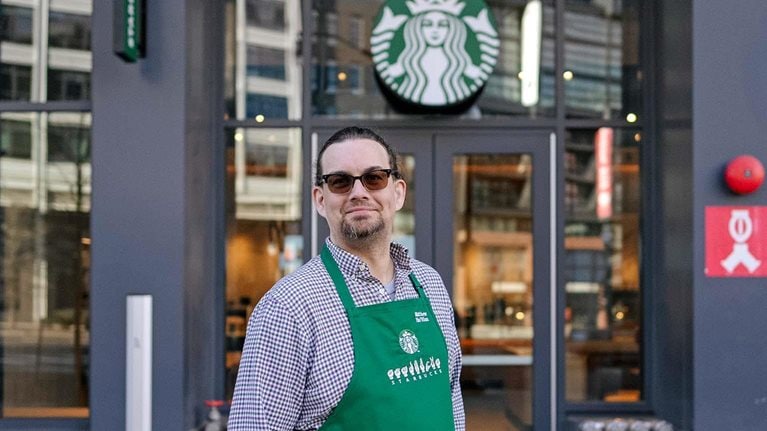
Helping Starbucks design stores that are inclusive for all

Members only: Delivering greater value through loyalty and pricing

The new real estate investment edge: Tech-enabled brand, CX, and loyalty
Marketing Wars: Booking vs. Expedia – Who Spends Smarter?
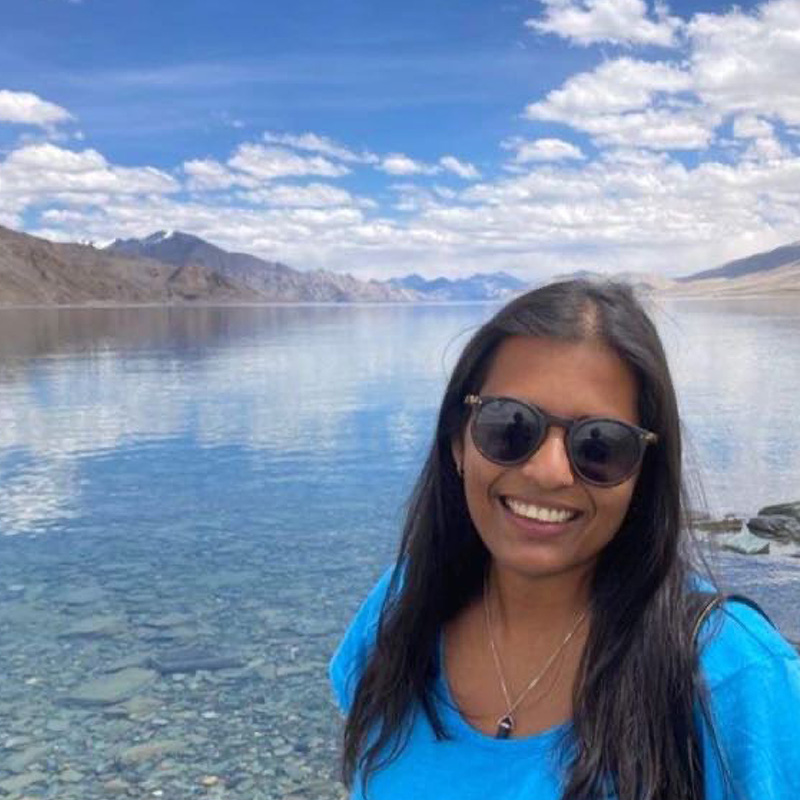
Pranavi Agarwal , Skift
August 15th, 2024 at 10:54 AM EDT
In 2023, Booking and Expedia spent a combined $13 billion on marketing, with Booking demonstrating better efficiency and global reach. While both still invest heavily in Google, they're shifting towards alternative marketing strategies like price discounting and B2B channels.
Pranavi Agarwal
Booking and Expedia spend a ton on marketing: Nearly $13 billion combined in 2023, up from $10 billion in 2019. And it’s the largest expense for both companies, accounting for roughly half of their total operating expenses.
But from there, some key differences emerge, according to the latest analysis from Skift Research.
1. Who Spends More on Marketing?
For one thing, marketing is gaining in prominence for Expedia (up to 52% of operating expenses in 2023, from 45% in 2019) and declining for Booking (44% vs. 51%.)
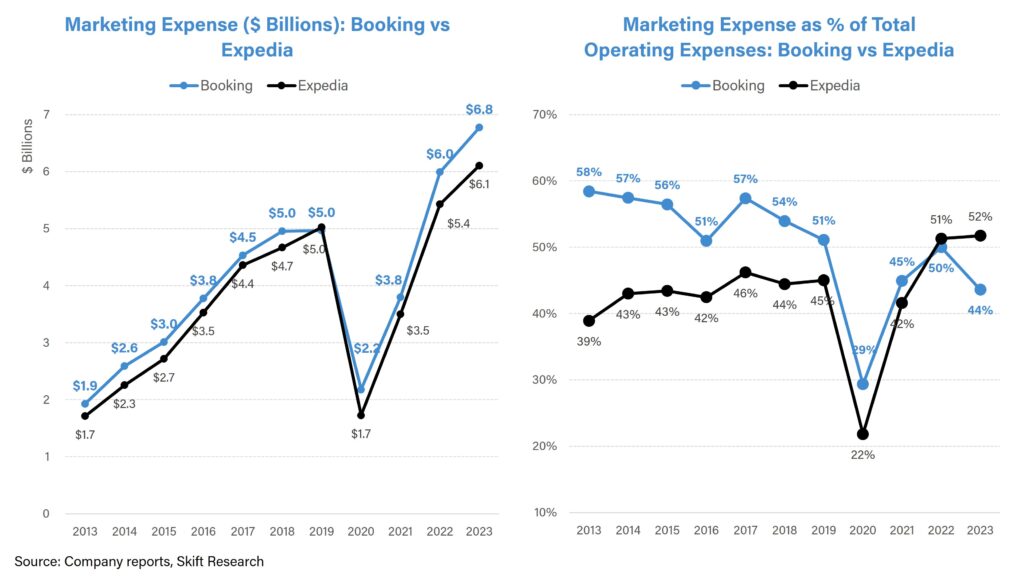
2. Who Spends Smarter?
Another important difference is “marketing efficiency” – how much they need to spend to drive bookings. Expedia was less efficient: It spent nearly 6% of its gross bookings on marketing in 2023, versus only 4.5% at Booking.
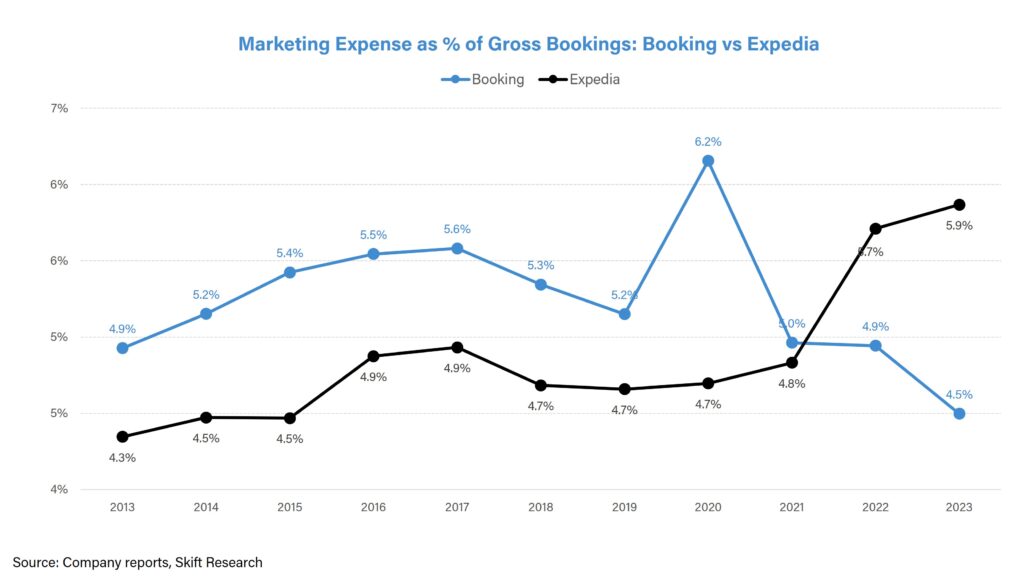
Some of this can be attributed to the recent growth of Expedia’s B2B segment because Expedia treats the commissions it pays to its partners as a direct marketing expense. These commissions tend to be higher as a percentage of revenue than marketing expenses from the consumer business. Expedia is also spending more marketing dollars on its vacation rental brand Vrbo and in international markets.
Booking is trying to clamp down on those costs. “Another thing we saw that we don’t talk a lot about it – I won’t get too specific – but we saw ourselves using money that we thought was producing a good ROI, and we turned out, it really wasn’t,” said Booking Holdings CEO Glenn Fogel on a recent call discussing second-quarter earnings. “And we shut some of these things down.” Booking is also seeing its direct bookings channel grow faster than paid marketing channels.
3. Pivot to the Merchant Model
Though both companies sourced their gross bookings mainly on an agency business model in the past, they have moved in recent years to the merchant model.
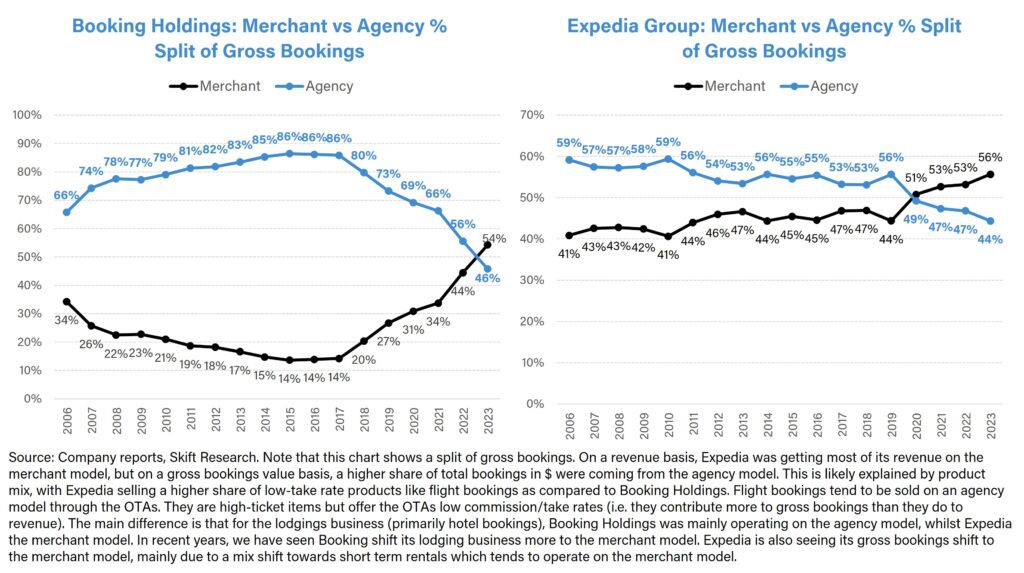
Under the agency model, hotels list and set their own prices, collect payments from guests, and pay Booking and Expedia a set commission. Under the merchant model, the OTAs negotiate a rate with hotels upfront, and then set prices and collect payments from guests. This model has a number of advantages: The OTAs have greater control over pricing strategy (such as discounting and merchandising); it allows them to bundle services like flights and car rentals (and sell the ‘connected trip’); and they can offer in-house payment services.
4. More Competition, More Discounting
Both companies are now leaning into merchandising (such as price discounting, ancillary upsells and bundling) as an alternative to direct marketing.
In 2023, Booking spent nearly $1.7 billion on merchandising efforts (or 1.1% of total gross bookings), compared to only $337 million in 2019 (or 0.3% of gross bookings). That represents a nearly 5x increase in expenditure on merchandising since 2019. As a comparison, marketing spend increased 1.4x from $5 billion in 2019 to $6.8 billion in 2023.
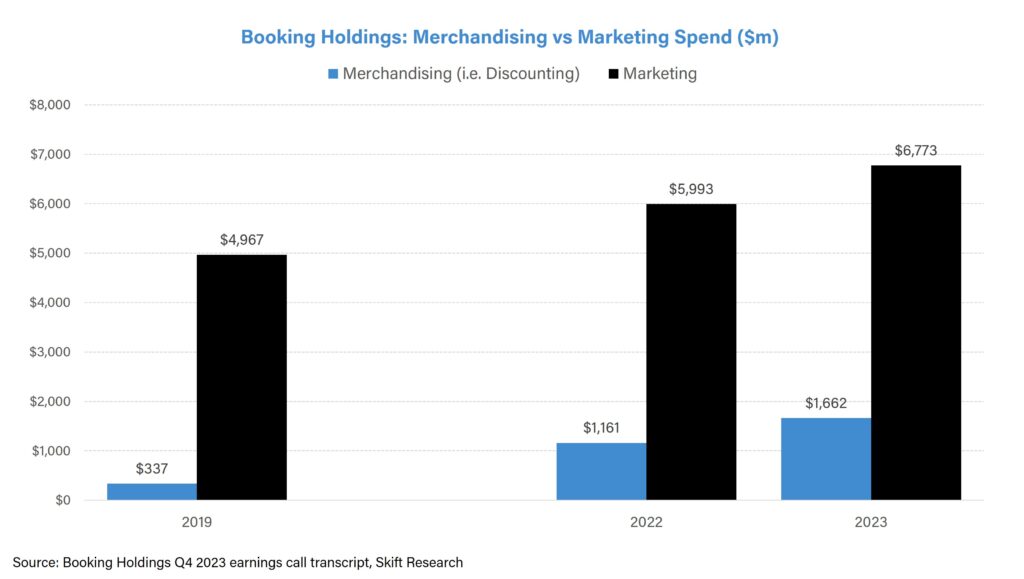
We can argue that the need for merchandising (primarily the funding of discounts out of their own pocket) is a sign of a more competitive environment for two major OTAs that haven’t had to rely on such pricing tactics before.
These discounts have a direct impact on take rates. In its earnings call for the third quarter of 2022, Booking said merchandising impacted take rates by about 1% in 2022, vs about 0.5% in 2019. Compare that to 2008 and 2009, when hotels were struggling and they were the ones offering discounts to OTAs.
As we have written before in The Past, Present, and Future of Online Travel , Booking and Expedia, once riding the wave of easy double-digit growth are today facing slower growth, stiffer competition, and increased pressure on profit margins.
Expedia’s former CEO Peter Kern acknowledged as much at the Skift Global Forum in 2022: “The easy money, where we’ll just be online and we’ll just collect everybody who’s decided to book online has certainly lessened over time”.
Booking’s CFO also pointed to the tough environment in the fourth quarter of 2022 earnings call: “These are very competitive markets. There are many players in the market. I think people realize it’s not just the OTAs, there are meta players, there are hotel players, there are chains, you name it, a lot of people are bidding in these marketplaces. So I think it just remains competitive.”
5. Who Spends Most on Google?
Google is a major recipient of Booking and Expedia’s marketing budgets.
Earlier this year, Skift Research ran a web-scraping exercise of Google Hotels , which involved web-scraping more than 20,000 hotel listings across the U.S., Europe, Asia Pacific and Middle East & Africa to analyze which OTAs and direct sites are bidding for bookings on Google.
Booking.com is the dominating presence across Google’s sponsored results, paying to appear most often out of any other OTA in every region. Of the top 5 most visible options in every region, Booking and Expedia through their sub brands (such as Booking’s Priceline.com and Agoda.com and Expedia’s Hotels.com) have outbid any local players.
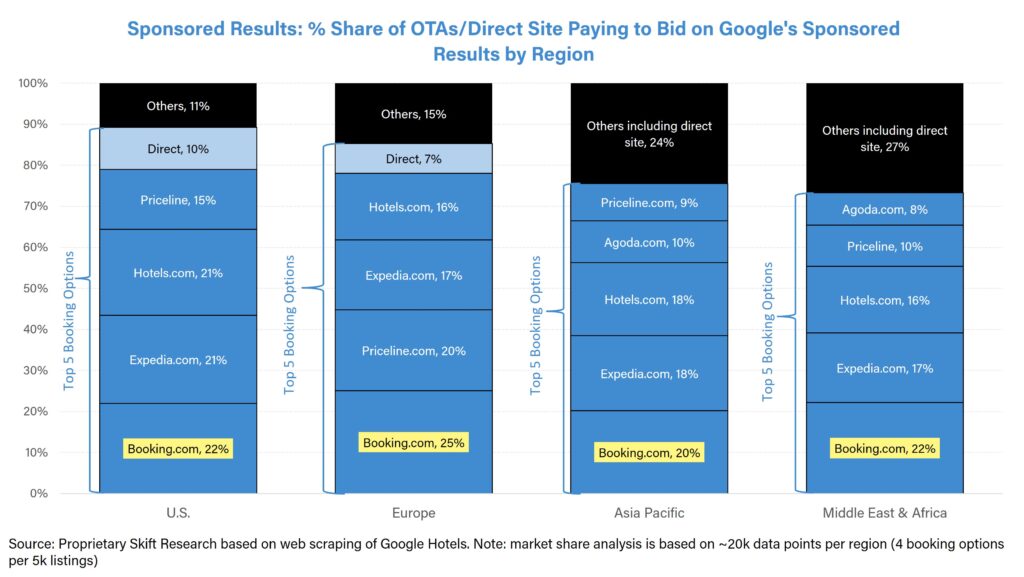
However, we can also see that Expedia.com is purposefully investing ad dollars to be the top-of-the-list option in a clear bid to outcompete Booking.com, particularly in regions such as Asia Pacific and Middle East & Africa.
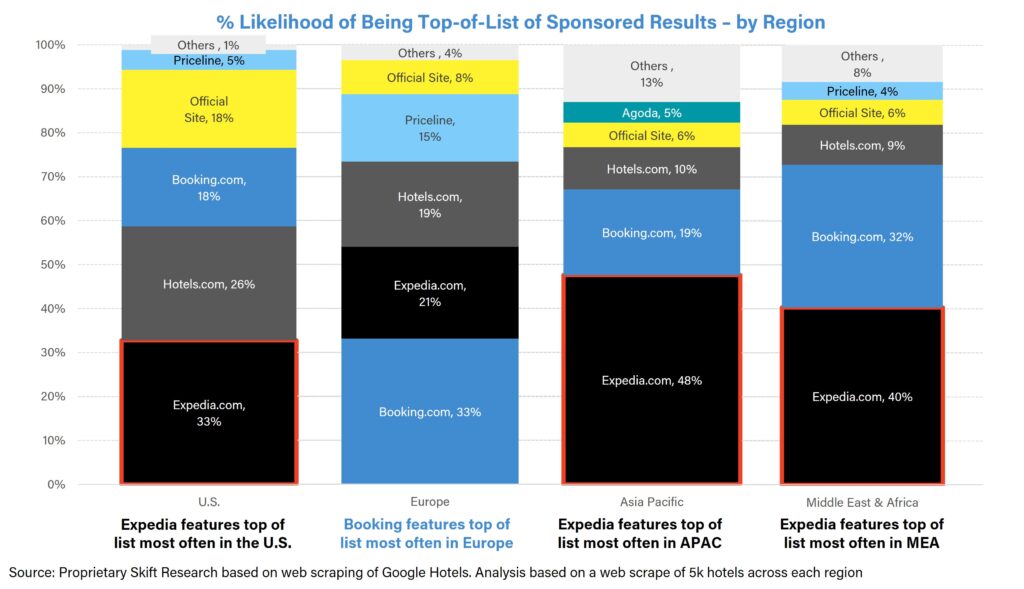
Our analysis also showed that Booking Holdings has a higher return on ad spend from Google’s sponsored listings than Expedia in every region.
Booking and Expedia collectively have about 80-85% share of Google’s sponsored results in every region , going to show the level of advertisement spend they are investing into Google. Generally, compared to Expedia, Booking needs to spend less on marketing to drive a higher share of actual rooms sold online.
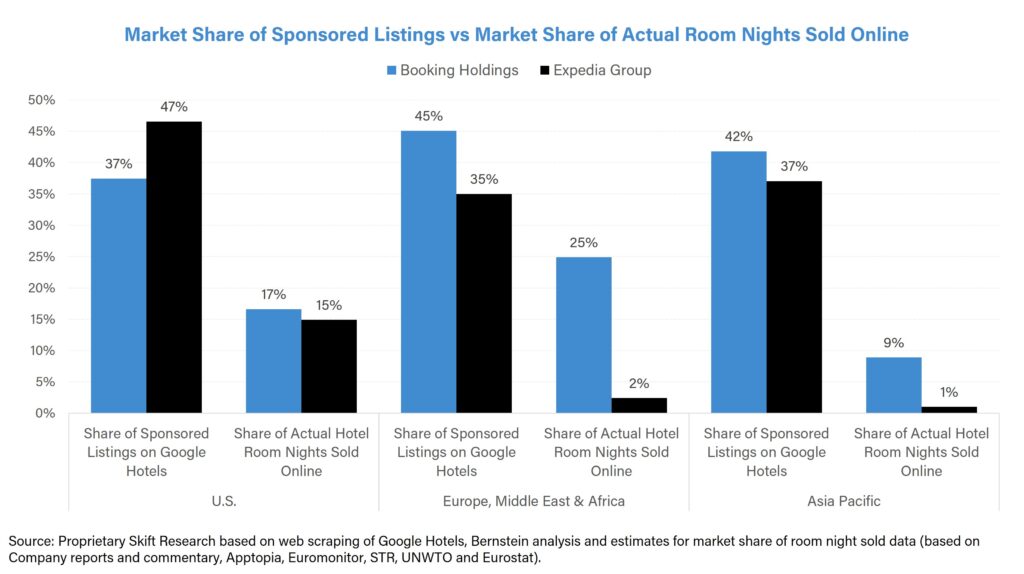
We can attempt to quantify the return on ad spend through Google’s sponsored results by considering the following calculation: market share of actual hotel room nights sold online divided by market share of sponsored results.
As shown in the chart below, we can see that Booking Holdings is generally more efficient than Expedia Group in converting spend on sponsored results to actual bookings. By region, we can see that Booking and Expedia have the highest marketing efficiency in the U.S. and in Europe vs in Asia Pacific.

Clearly Booking is seeing greater marketing efficiency than Expedia, but also benefits from having a more global reach with greater brand awareness. Expedia is much more focused on the U.S.
6. Marketing spend focused on core brands
Our analysis also showed that Expedia and Booking are focusing marketing efforts on their core brands. In recent years, Expedia has focused on its key brands Expedia.com and Hotels.com (and Vrbo.com in its vacation rental part of the business), whilst de-prioritizing smaller sites such as Travelocity.com and Orbitz.com (see Expedia’s 3 Core Brands, Explained ).
The chart below proves that in every region Expedia’s marketing efforts on Google’s sponsored results are being targeted towards its main brands expedia.com and hotels.com. Smaller brands such as orbitz.com and travelocity.com hardly feature on sponsored results and brands such as hotwire.com did not appear even once in our web-scraping database. This is not to say that Expedia isn’t taking advantage of Google’s free organic search, with all its sub-brands featuring in the organic results.
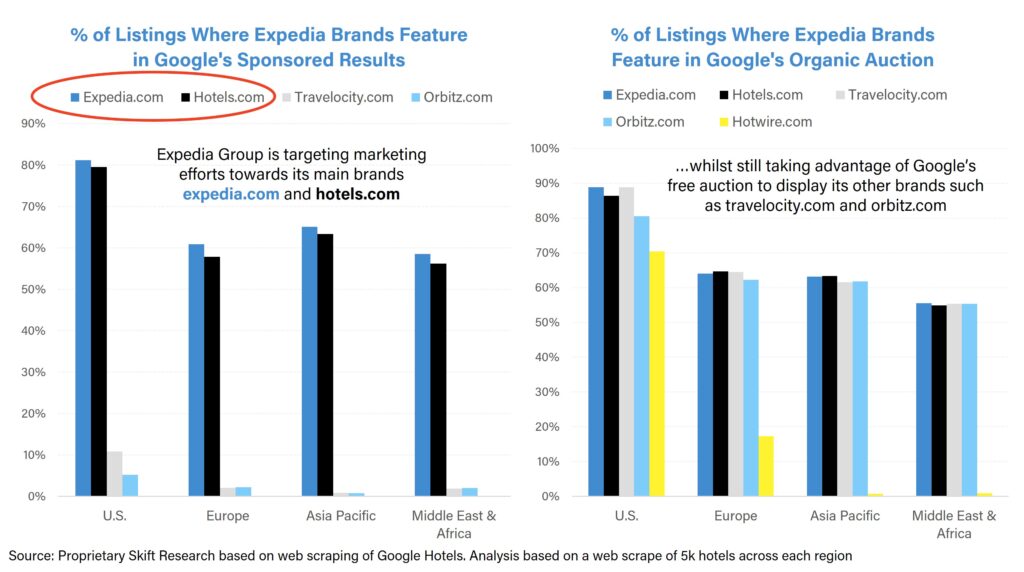
At Expedia’s Q4 2023 earnings, the then CEO Peter Kern commented that since 2020, “we rationalized investments in over 20 brands to 3 or fewer in every region. We eliminated dependency on 76 different agencies around the globe and instead built an entire full-service marketing, creative and media-buying team internally.
We consolidated all performance marketing into one group with unified data and tools, allowing us to optimize across brands and bring programmatic approaches to everything we do in metasearch, social, SEO and everywhere else”.
For Booking Holdings, we see a similar trend, with marketing efforts tied predominantly to its eponymous booking.com brand, whilst still taking advantage of Google’s free auction to display other sub-brands such as agoda.com – particularly in Asia and the Middle East.
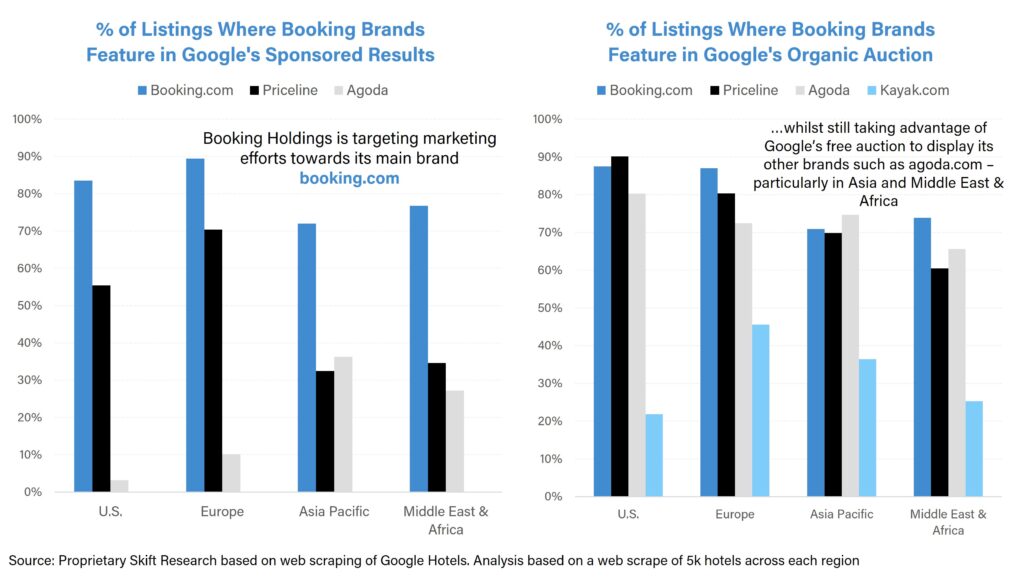
This article uses excerpts from three recent pieces of Skift Research:
- Booking Vs. Expedia: A 50 Chart Factbook
- The Past, Present, and Future of Online Travel
- A Deep Dive into Google Travel Part III: Hotel Distribution From East to West
Our most recently published report Booking Vs. Expedia: A 50 Chart Factbook provides a concise 50-chart factbook comparing the key financial metrics and performance indicators of the two major global OTAs: Booking Holdings and Expedia Group. We analyze segment mix by geography, global market share, EBITDA margins, take rates, marketing expenses, and valuation, amongst others.
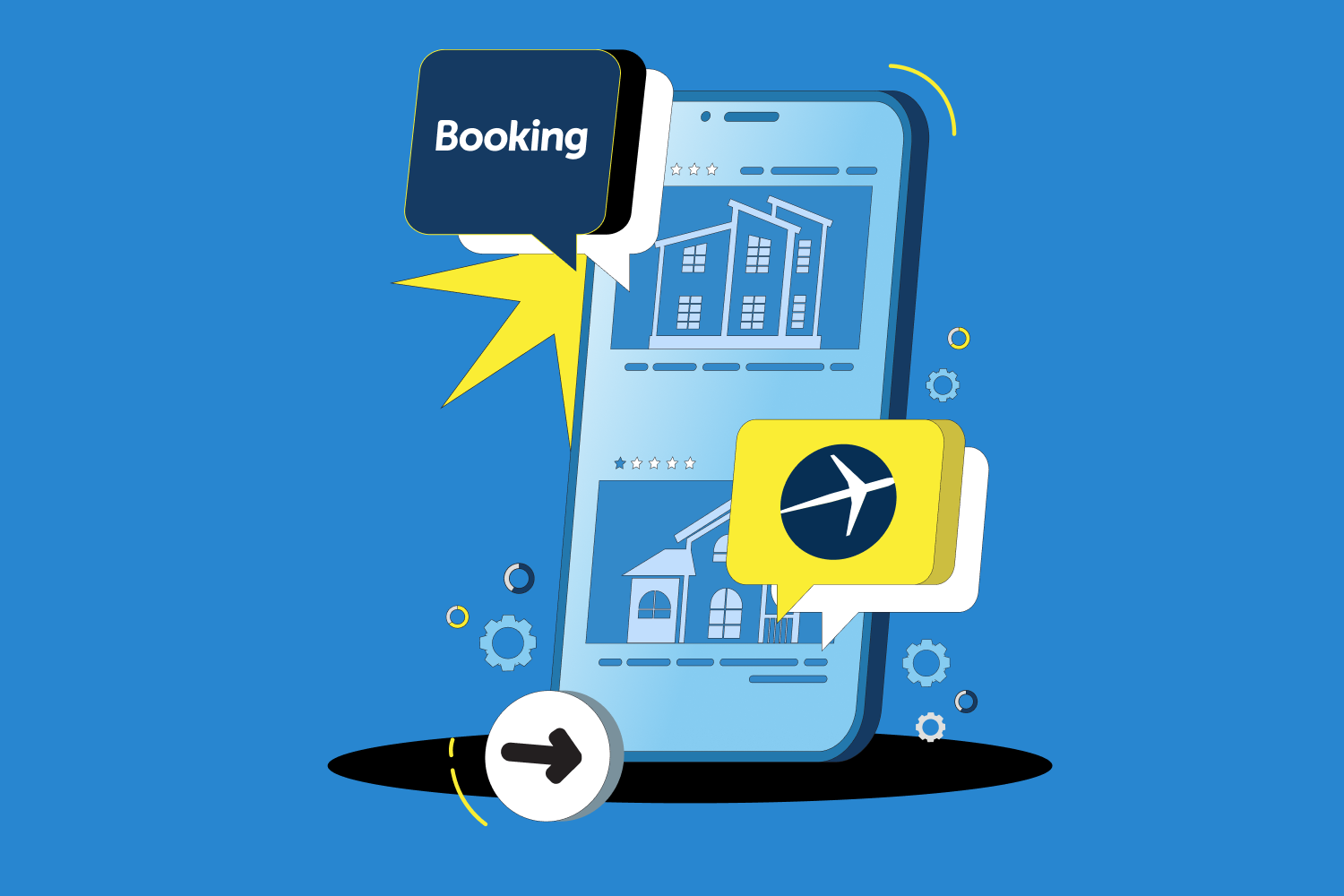
Booking vs Expedia: A 50 Chart Factbook
We present a handy chart factbook comparing the two largest global OTAs: Booking Holdings and Expedia Group. In 50 charts, we compare the key financial metrics and performance indicators – including share price movement and valuation – of the two companies.
What You’ll Learn From This Report
- Company Overview: Brand overview, Timelines by company, Mix by geography, Supply mix, Global market share
- Key Performance Indicators: Gross Bookings, Revenue, Take Rate, EBITDA & margins, Room nights & ADR growth, Operating Expenses
- Marketing: Marketing efficiency, Share and ranking of Google’s sponsored results by region
- Growth Outlook: 5-year forecast on revenue growth, EBITDA growth, EBITDA margin
- Share Price Performance & Valuation: Stock price vs Skift Travel-200 Index, Earnings per Share, EV/EBITDA Valuation, Free Cash Flow
This is the latest in a series of research reports, analyst sessions, and data sheets aimed at analyzing the fault lines of disruption in travel. These reports are intended for the busy travel industry decision-maker. Tap into the opinions and insights of our seasoned network of staffers and contributors. Over 200 hours of desk research, data collection, and/or analysis goes into each report.
Subscribe now to Skift Research Reports
After you subscribe, you will gain access to our entire vault of reports, analyst sessions, and data sheets conducted on topics ranging from technology to marketing strategy to deep dives on key travel brands. Reports are available online in a responsive design format, or you can also buy each report à la carte at a higher price.
Get Skift Research
Skift Research products provide deep analysis, data, and expert research on the companies and trends that are shaping the future of travel.
Have a confidential tip for Skift? Get in touch
Tags: booking holdings , dwell , expedia , google , marketing , short-term rentals , skift research
Photo credit: Picture frame at a top of mountain, Schynige Platte, Switzerland, source: Unsplash
What's the weather like in Chita?
It depends on when you visit! We've compiled data from NASA on what the weather is like in Chita for each month of the year: see the links below for more information.
- Weather in Chita in January
- Weather in Chita in February
- Weather in Chita in March
- Weather in Chita in April
- Weather in Chita in May
- Weather in Chita in June
- Weather in Chita in July
- Weather in Chita in August
- Weather in Chita in September
- Weather in Chita in October
- Weather in Chita in November
- Weather in Chita in December
Explore nearby places
- Petrovsk-Zabaykalsky
- Gazimursky Zavod
- Ust-Barguzin
- Verkhnyaya Berezovka
- Nerchinsky Zavod
- Olkhon Island
- Xinba'erhuyou Qi
- Novoselenginsk
- Severobaykalsk
All related maps of Chita
- Map of Chita
- Map of Aginskoye
- Map of Aksha
- Map of Nerchinsk
- Map of Sretensk
- Map of Suvo
- Map of Tarbagatay
- Map of Kurumkan
- Map of Petrovsk-Zabaykalsky
- Map of Gazimursky Zavod
- Map of Ust-Barguzin
- Map of Manzhouli
- Map of Baturino
- Map of Verkhnyaya Berezovka
- Map of Ulan-Ude
- Map of Sotnikovo
- Map of Ilinka
- Map of Nerchinsky Zavod
- Map of Ivolginsk
- Map of Olkhon Island
- Map of Khalyuty
- Map of Khuzhir
- Map of Xinba'erhuyou Qi
- Map of Choybalsan
- Map of Enkheluk
- Map of Kurma
- Map of Sakhyurta
- Map of Chernorud
- Map of Mayskiy
- Map of Novoselenginsk
- Map of Severobaykalsk
Chita throughout the year
- Chita in January
- Chita in February
- Chita in March
- Chita in April
- Chita in May
- Chita in June
- Chita in July
- Chita in August
- Chita in September
- Chita in October
- Chita in November
- Chita in December
Looking for day-by-day itineraries in Chita?
Get inspired for your trip to Chita with our curated itineraries that are jam-packed with popular attractions everyday! Check them out here:
- 1-Day Chita Itinerary
- 2-Day Chita Itinerary
Best central european restaurants in nearby cities
Best attractions in nearby cities.
- Top things to do and attractions in Ulaanbaatar
- Top things to do and attractions in Ulan-Ude
- Top things to do and attractions in Olkhon Island
Best restaurants in nearby cities
- Where to eat: the best restaurants in Ulaanbaatar
- Where to eat: the best restaurants in Ulan-Ude

- Itinerary + map in one view
- Live collaboration
- Auto-import hotels and reservations
- Optimize your route
- Offline access on mobile
- See time and distance between all your places
- Car Rentals
- Airport Transfers
- Attractions & Tours
- Flight + Hotel
- Destinations
- Trip.com Rewards
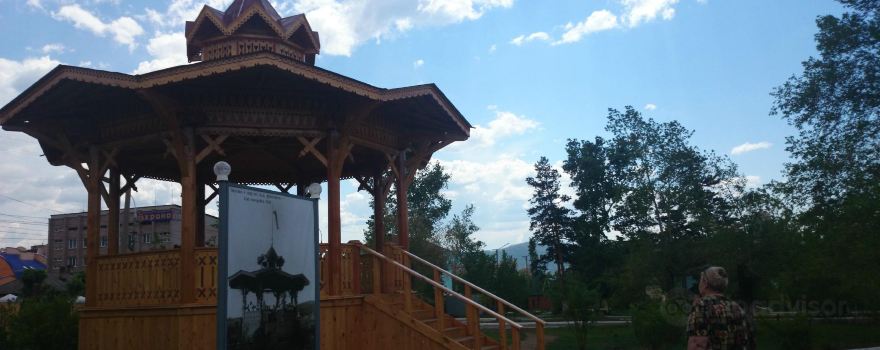
Chita Travel Guide

Things to do in Chita
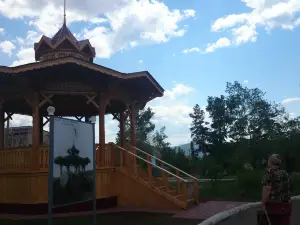
Odora Park of Culture and Recreation
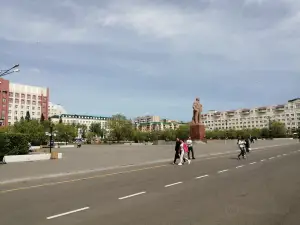
Lenin Square

Decembrists' Square

Park Pionerov

Chita City Zoo

Likerka plaza

Shakhmatnyy Park
What to eat.

Japanese Restaurant Niyama

Harat's Irish Pub
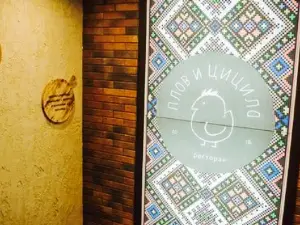
Plov I Tsitsila

Russian Shanghai

Testo Cafe-Pizza
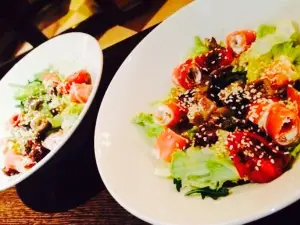
Shokoladnitsa

France Cafe
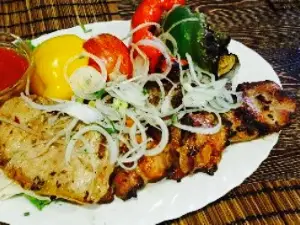
Other Recommended Cities
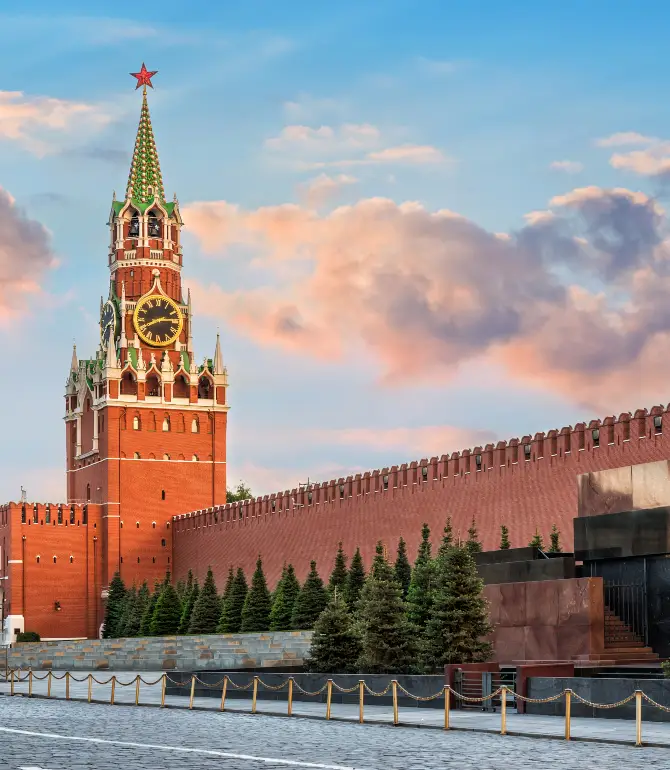
- Customer Support
- Service Guarantee
- More Service Info
- About Trip.com
- Terms & Conditions
- Privacy Statement
- About Trip.com Group
Other Services
- Investor Relations
- Affiliate Program
- List Your Property
- Become a Supplier
Desert Air music festival returning to Palm Springs, Kaytranada and Jamie xx to headline
Desert Air, a winter electronic music festival founded by Goldenvoice and the organizers of Splash House in 2021, is returning Nov. 15-17 at the Palm Springs Air Museum and Palm Springs Surf Club.
Similar to Splash House, the air travel-themed festival features a mix of DJs and electronic music trendsetters in open-air venues. Desert Air will also include distinguished food offerings, after parties and more reflecting the local nightlife and cultural aesthetics of Palm Springs. The Palm Springs Surf Club will host daytime music programming and other activities and shift to the tarmac of the Palm Springs Air Museum during the evening.
"Our goal has always been to offer live music experiences during off-peak times for local tourism, and this is a new extension of that," said Tyler McLean, founder and producer of Splash House, in 2021.
How do I get tickets to Desert Air?
Registration for early purchasing access can be found at desertairfest.com . The sale begins at noon on Friday. GA passes start at $184 and VIP passes at $334. Lodging options at host hotels are available and start at $285.
What's the Desert Air 2024 festival lineup?
- Anish Kumar
- Club Heat: Tove Lo & SG Lewis
- JOY (Anonymous)
- Sam Gellaitry (Live)
- Shygirl Presents Club Shy
- Slayyyter (DJ Set)
- Avalon Emerson
- Bon Entendeur
- Joy Orbison
- KETBOI69 (KETTAMA B2B PARTIBOI69)
- Pretty Girl (Live)
- Sammy Virji
- Sofia Kourtesis
Thousands attended the 2021 Desert Air festival
McLean told The Desert Sun in 2021 he anticipated 3,000 people to attend throughout the weekend, adding the number was lighter than Splash House earlier that summer, which saw 7,000 people daily at Margaritaville Resort Palm Springs, The Saguaro Palm Springs, Renaissance Palm Springs Hotel and the Palm Springs Air Museum.
Peggy Gou, The Martinez Brothers, Channel Tres and more performed during the 2021 festival.
Brian Blueskye covers arts and entertainment for the Desert Sun. He can be reached at [email protected] or on Twitter at @bblueskye.
- Share full article
Advertisement
Supported by
Out & About
A Haven for Black Film on Martha’s Vineyard Keeps Growing
Summer on the island is packed with cultural events, and for many celebrities, politicians and filmmakers, the Martha’s Vineyard African American Film Festival is a highlight.

By Katie Van Syckle
Katie Van Syckle reported from Oak Bluffs and Edgartown, Mass., for Out & About , a column that covers the events where notable, powerful and influential figures gather — and their outfits.
“Ready for the Supremes?” the Legendary Chris Washington called out from a D.J. booth inside the packed auditorium at Martha’s Vineyard Regional High School on a recent August evening, as he played Motown hits for the crowd.
It was one of the biggest nights of the 22nd annual Martha’s Vineyard African American Film Festival, a nine-day event devoted to celebrating Black filmmakers. The festival held on Martha’s Vineyard, the quaint Massachusetts island, has drawn luminaries like the actress Jennifer Hudson, the director Spike Lee and former President Barack Obama in summers past.
Wednesday night’s crowd of about 800 was there for the premiere of “The Supremes at Earl’s All-You-Can-Eat,” the director Tina Mabry’s adaptation of the best-selling novel about a trio of lifelong girlfriends who call themselves the Supremes, after the 1960s girl group. Backstage, Uzo Aduba, Aunjanue Ellis-Taylor and Sanaa Lathan, who star in the film, were posing for a row of photographers as they prepared for the debut screening.
Ms. Aduba, who grew up in Massachusetts and occasionally visited the island as a child, said it was her first time attending the festival.
“To see culture and art and our stories presented in this incredibly placid and elegant and green backdrop, which feels like it weds so many historic vacation moments for Black culture,” she said, “is wonderful.”
Floyd and Stephanie Rance, a husband-and-wife team, started the film festival in 2002. At the time, he was a filmmaker running the production company Run & Shoot Filmworks, and she was working in marketing and looking for a role that would allow her to balance a career and children. They had visited the island when they were dating, and had long been drawn to it.
“Martha’s Vineyard is such a special place to everyone, and it has a special history for African Americans,” Ms. Rance said, “And I find that when people come to the festival, they’re just like, ‘Oh, my God, this is amazing. It’s our happy place.’”
They booked the local high school to hold the first festival, and as Ms. Rance tells it, only about 10 people showed up. But they weren’t deterred: The next year, the couple pivoted to a smaller venue, a conference room at the Mansion House Inn, and kept going.
“They had a little room in the back with those old five-disc players, and that was the projection,” Mr. Rance remembered.
“The mission is always to showcase the best of the best filmmakers of color,” Ms. Rance added.
As the crowds grew, the screenings returned to the high school, and for Ms. Rance, running the annual operation became a full-time job. Over the years, the event has shown both indie films and big studio productions, and several years ago, it received accreditation as a qualifying festival for the short film category at the Oscars. In 2022, “Descendant,” the Netflix documentary produced by the Obamas’ production company, Higher Ground, opened the festival with a surprise appearance from the former president and first lady.
“There was a void that we were filling,” Mr. Rance said. “Thankfully, it’s just kind of kept going and kept going and kept going. It’s like ‘The Little Engine That Could.’”
On Aug. 2, the festival opened with the new A24 film “ Sing Sing ” and an appearance from Colman Domingo, the film’s star, alongside Senator Cory Booker of New Jersey. This year, the festival screened about 70 films , including shorts, features and documentaries. Between screenings, there were panels, parties and high-profile networking events around the small island.
On Thursday morning, about a 130 women, many of them clad in brightly colored daytime dresses, walked by pastel hydrangeas and into the Harbor View Hotel, overlooking the Edgartown lighthouse. Inside, Ms. Rance was hosting a networking event for C-suite executives and other powerful figures.
“My ultimate goal is to get more Black women on corporate boards because that’s where the power lies, right?” Ms. Rance said, explaining her vision for the day.
As attendees mingled, waiters offered trays of raspberry spritzes and mini lobster rolls. Ms. Aduba chatted with Ms. Mabry. Abby Phillip, the CNN anchor, took a selfie with Nicole Avant, a former U.S. Ambassador to the Bahamas and the wife of Ted Sarandos, the co-chief executive of Netflix.
Marsha Cooke, the vice president and executive producer for ESPN Films and 30 for 30, the presenting sponsor of the festival, said that guests were talking about “joy, community, friendship and Kamala.”
Over lunch, several executives including Melonie Parker from Google; Liliahn Majeed from L’Oréal; Tinisha Agramonte with the Walt Disney Company; and Stephanie Oueda Cruz of Tiffany & Company shared tips for navigating corporate America during a panel discussion. Sunny Hostin, a co-host on the View, interviewed Keke Palmer, the actress and singer, who made a surprise appearance.
“You are surrounded by folks that are engaged, that have had the same life experiences as you,” said Trudy Grant, who works for a civil rights nonprofit and had come from Charleston, S.C., for the festival. “So it’s almost like going to the movies at a family reunion.”
Black vacationers have traveled to Martha’s Vineyard for generations, many drawn by its reputation as a haven. In the early 20th century, Black Americans were barred from many beaches, pools and resorts in the country, but the island town of Oak Bluffs was an exception. The destination attracted Black families as well as prominent political figures and artists including Martin Luther King Jr.; Edward W. Brooke, the senator from Massachusetts; and the writer Maya Angelou.
The first few weeks of August are now some of the busiest for tourism there, and the summer social calendar includes Martha’s Vineyard Black Book Festival and Martha’s Vineyard Comedy Fest .
“What the festival has done is it has created an institution of creativity and gathering based on a 150-year history of gathering,” said Kahina Van Dyke, who grew up visiting the island, and operates several inns in Oak Bluffs including Dunmere by the Sea . “And the people who have been gathering here have been artists and writers and politicians and academics and business people, and they came in the summer.”
On Saturday, the closing night of the film festival, the Loft, a local nightclub in Oak Bluffs just past the beach, was transformed into a lavish lounge filled with roses, disco balls and plush red carpets.
More than 350 people turned out to celebrate “Fight Night: The Million Dollar Heist,” a new series from the executive producer Will Packer, which premiered earlier that night for a sold-out crowd.
The show, which will be released Sept. 5 on Peacock, is set in Atlanta. It tells the story of a brazen armed robbery, which took place on the night of Muhammad Ali’s famous return to the ring in 1970. Keisha Lance Bottoms, the former mayor of Atlanta, stood by the nightclub’s red couches near several of the show’s stars, including Don Cheadle, Taraji P. Henson and Chloe Bailey, as caterers circled with trays of pizza and macaroni and cheese.
D.J. Trauma, playing a mix of hip-hop and R&B, quickly pulled a crowd to the dance floor that included Mr. and Ms. Rance, as well as Alex Tyree and Nick Arrington, cast members of Bravo’s “Summer House: Martha’s Vineyard.”
Ms. Henson, who had arrived after trips to Bali and Paris, said she enjoyed watching the premiere episode of “Fight Night” with the audience.
“In a community like this, they want to see you succeed, that’s what I love about festivals,” Ms. Henson said. “This place is very charming. But I want to know: Who is Martha?”
Katie Van Syckle is a Times editor focusing on cultural events and nightlife in New York City. More about Katie Van Syckle
Explore Our Style Coverage
The latest in fashion, trends, love and more..
A Memoir Skews Expectations: Anna Marie Tendler was a regular subject in the stand-ups of her ex-husband, John Mulaney. Readers might be surprised by what they find (or don’t) in her new memoir.
Snow All Summer: At a factory in western New York, the holiday décor brand Buffalo Snow has been manufacturing blizzards for almost 40 years.
African American Film Festival: Summer on the Martha’s Vineyard is packed with cultural events, and for many celebrities, politicians and filmmakers, the festival is a highlight .
Off the Grid, Extremely Online: In corners of the internet — and in wooded, undeveloped parts of the country — young men are documenting their efforts to to live off the land .
The Harris-Walz ‘Visual Age’ Gap: They’re the same age, but pundits and voters can’t stop talking about how much older Governor Tim Walz looks than Vice President Kamala Harris. It’s not the only way he seems to be absorbing some of the scrutiny usually heaped on female candidates.

IMAGES
COMMENTS
An effective marketing mix focuses its efforts in multiple areas to build a robust marketing plan. These areas were initially known as the 4 Ps of marketing (product, price, place, and promotion) and were first proposed by marketing professor Jerome McCarthy in 1960. Since then, marketing tactics have evolved and in an attempt to better address ...
The marketing mix contains the 4 P's: product, place, price, and promotion. However, 3 extra P's apply for the experiences industry: People, Processes, and Physical Evidence. As a tour operator, here's what you need to know about the basic tourism marketing mix and how you can utilize them to analyze your competitive strategies.
The 4 P's Of Marketing In The Travel & Tourism Industry. Product, Price, Place, and Promotion are the four key points in any tourism business' marketing strategy. Product. Unlike other businesses, where the product is a material item or tangible thing, the products in a travel company are not. But the basic aim is the same: Providing a ...
This is easy to apply with travel booking tools like WeTravel. The right booking platform will reduce friction in the customer journey, helping you sell more tours. 3. Price. The price of your product, or tour, is arguably the most important factor in your travel marketing mix.
5. Develop a tourism marketing mix. A tourism marketing mix is a combination of factors you can control to influence a guest's decision to book with you. Think of it as a broad guideline for how to market travel and tours so that everything works together seamlessly.
Here are 6 travel and tourism marketing strategies that will help map out your next travel campaign. 1. Use Geotargeting to Reach Nearby Consumers. Geotargeting is the practice of delivering content to a consumer—via mobile or web—using the geographic location information of the recipient. For travel and tourism marketing, it's the ...
Successful marketing for tourism starts with a well-defined marketing strategy, which will help ensure the effort and resources you put into marketing are effective. The following steps will help guide you through the creation of a marketing strategy for your tour, activity or attraction company. 1. Tour Marketing Strategy.
With its comprehensive content and user friendly style, Marketing in Travel and Tourism third edition takes the reader from an initial definition of the subject matter through to the application of marketing in the travel and tourism industry, discussing crucial components such as planning strategy and the marketing mix, making it an ...
The Return of Travel and Tourism Marketing. After the tumultuous years of the pandemic, travel and tourism is finally experiencing a surge in demand. Travel digital marketing spend dipped 51% in 2021 but is now growing by 14.2% in 2022. An additional 12.1% increase is expected in 2023, according to eMarketer .
A travel and tourism marketing plan will help you reach new customers and protect the future of your business, no matter what its size. Travel is big business in Canada. Tourism spending in the first quarter of 2023 surpassed
Tourism Marketing Mix (The Four P's) ... Marketing In Travel and Tourism and Tourism Marketing Customised VS One Size Fits All. Another challenging aspect of the tourism industry is that every customer has a different expectation of your business. One tourist is looking for calm and comfort, while the guest next door is looking for entertainment.
Through tourism marketing strategies and tools, companies can expand on their tourism market. A successful marketing mix strategy can even help an entry-level travel business become a monopoly in the travel industry. Why Marketing Tourism Is Beneficial. An essential part of tourism marketing is adopting the appropriate and relevant marketing ...
Instead, destinations should consider shifting their marketing mix towards product, because improving the visitor experience is the most effective way to super-charge positive word-of-mouth. With the aid of digital communication, a visitor experience begins long before they arrive and can last long after the journey ends.
4. Retarget people who have shown interest. Travel is a big purchase, and people are unlikely to make a decision the first time they land on your site. Use Facebook remarketing to target consumers who have visited specific pages on your site or have shown an interest in a specific hotel room, date, or activity.
The specific features of tourism marketing are: The demand for tour package is highly elastic and seasonal in nature. Tour package is a combination of various service ingredient. Designing, developing and marketing of tour package a number of intermediaries are involved. Bed experience at one level can spoil the entire image of the package as ...
A multiple regression model was applied to identify the parameters of the tourism marketing mix, and the result shows place is the most influential marketing mix for choosing a tourist spot during ...
The marketing mix is a term coined by Neil Borden in ... The travel and tourism industry responds to its highly complex pricing at two levels. The first one deals with marketing strategy which consists of product positioning, long term returns on investments, cost-effectiveness, etc.
Optimizing customer experiences on all marketing channels is crucial. 15. Embracing content and influencer marketing. Content and influencer marketing are essential building blocks of any successful tourism strategy. It helps in optimizing the presence of a travel business in the search engine.
Tourism marketing is different because the customer purchases a series of services. While marketing a tourism product, the sales or marketing person insists on the positive facets of the following four components −. Product. The tourism being a service sold to the customers, tourist experience is the product, which is intangible, and non ...
Our Growth, Marketing & Sales Practice has done extensive research to uncover the profound impact of customer delight on business success. Surveying 25,000 customers across diverse industries such as tourism, insurance, and banking, we have discovered compelling evidence: delight not only cultivates loyalty and repurchase but also fuels revenue ...
Booking and Expedia spend a ton on marketing: Nearly $13 billion combined in 2023, up from $10 billion in 2019. And it's the largest expense for both companies, accounting for roughly half of ...
We've collected the most-often-mentioned 17 places from other articles, including favorites like Franc Cafe, Кафе, Pekinskaya Opera, and Schast'ye V Provintsii
More than 20,000 digital marketing agencies and SaaS companies building websites on Duda can now easily integrate their client sites with ActiveCampaign's marketing automation platform.
On Trip.com, you can find out the best food and drinks of Mix Burger in Zabaykalsky KraiChita. Bogomyagkova, 41, Chita 672007, Russia
Chita Buddhist Temple. 39. Points of Interest & Landmarks. By Kanbaatar. It is all a matter of what interests any of us. If you have any interest in Buddhism, this is a must-visit attraction... 2. National Park Alkhanai. 51.
Chita Travel Guide. Chita is a city in Zabaykalsky Krai, Russia. It has many popular attractions, including Odora Park of Culture and Recreation, Lenin Square, Udokan, perfect for a trip! Show Less. Mostly cloudy 9 - 20℃.
Desert Air, a winter electronic music festival founded by Goldenvoice and the organizers of Splash House in 2021, is returning Nov. 15-17 at the Palm Springs Air Museum and Palm Springs Surf Club.
D.J. Trauma, playing a mix of hip-hop and R&B, quickly pulled a crowd to the dance floor that included Mr. and Ms. Rance, as well as Alex Tyree and Nick Arrington, cast members of Bravo's ...